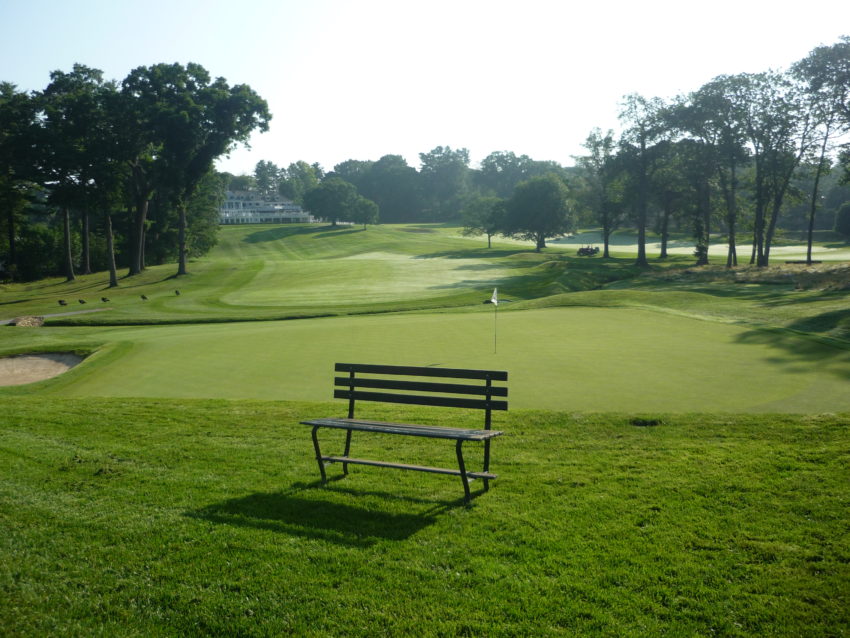
Brae Burn Country Club – Played July 2023
- Rankings: None of my four lists
- Location: 326 Fuller Street, West Newton, Massachusetts
- Year: 1897
- Original Architect: Alex Findlay & Donald Ross
- Additional Work By: Ron Forse & Jim Nagle
- Course Access: Private
- Walking Rules: Carts & Caddies Available
Score Card Information:
- Gold: 6,806 yards, Par 72, 74.4 Rating/143 Slope
- Blue: 6,228 yards, Par 72, 70.3 Rating/133 Slope
- Red: 5,623 yards, Par 73, 67.7 Rating/119 Slope (Men’s), 73.2 Rating/129 Slope (Women’s)
- White: 4,970 yards, Par 73, 65.2 Rating/109 Slope (Men’s), 69.5 Rating/122 Slope (Women’s)
The greater Boston metro area has a lot of great golf and Brae Burn Country Club slots right into that group. The club boasts a Donald Ross 18-hole routing as well as a separate 9-hole loop. Like many courses of its vintage, many alterations to the course have happened over the years.
Brae Burn has hosted many events throughout the years and has a special connection to the USGA. Walter Hagen won the US Open here in 1919 while Bobby Jones won the US Amateur in 1928. The US Women’s Amateur was held here in 1906 (Harriot Curtis), 1975 (Beth Daniel), and 1997 (Silvia Cavalleri). The Curtis Cup Matches were played in 1958 and 1970 as well as numerous state amateur events.
I definitely didn’t play “championship-level” golf, but we’re going to have a great tour anyway. Let’s get to it!
Hole 1 – 325 yards – Par 4
Donald Ross was a fan of a gentle handshake opener and he employed one here at Brae Burn. The elevated tee makes it play even shorter. There is a plateau in the left center of the fairway that is a good spot to attack from.
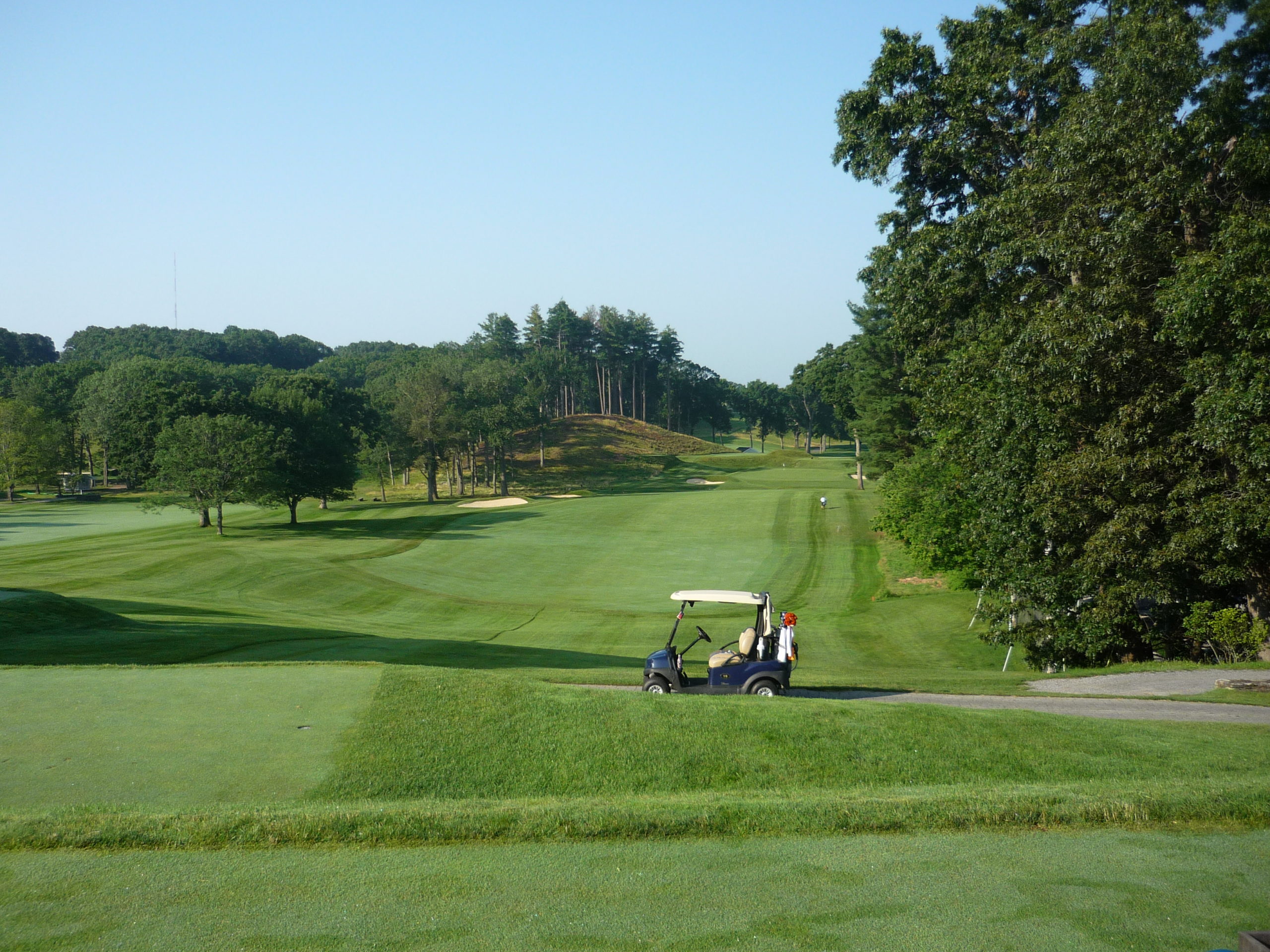
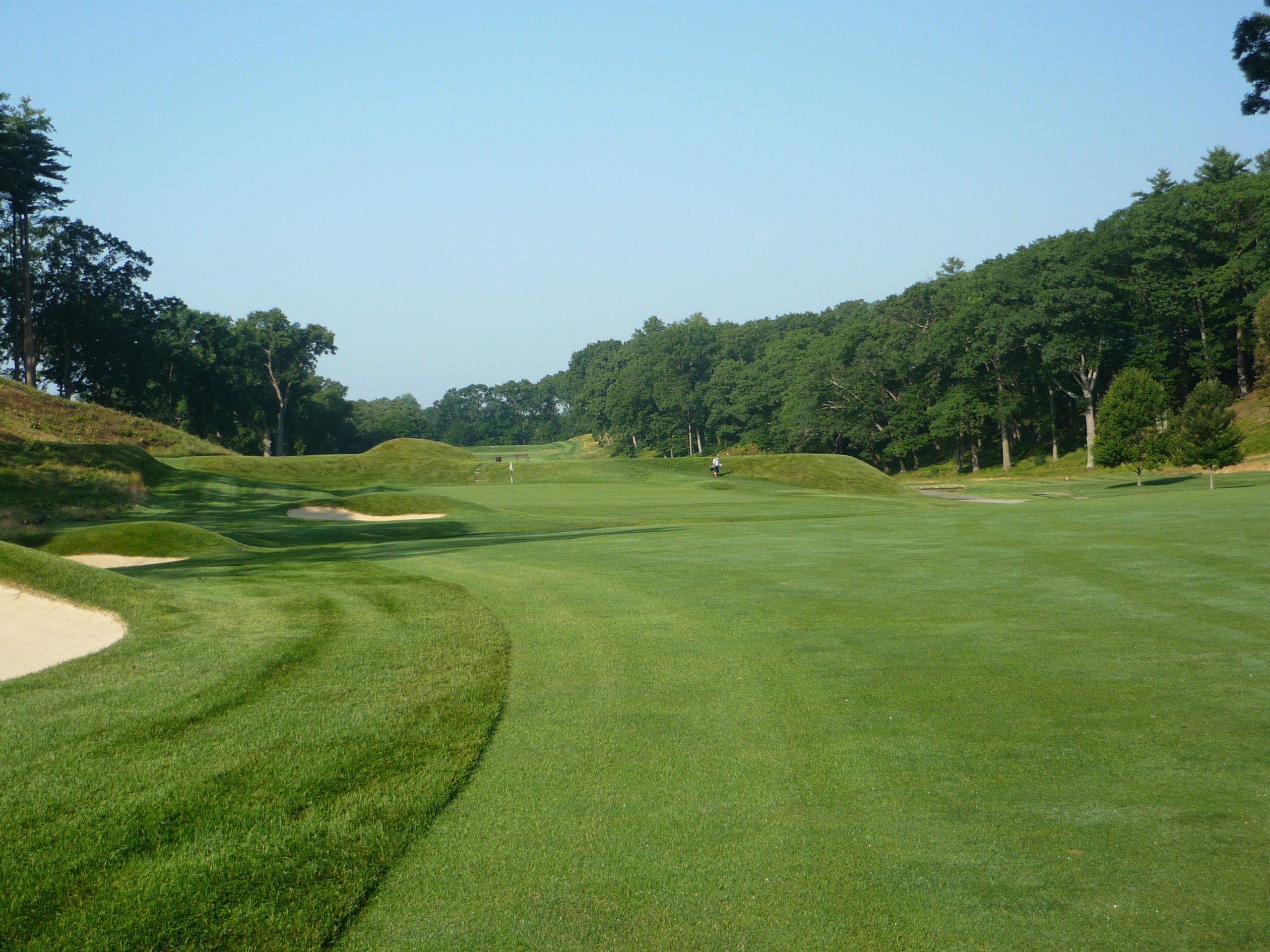
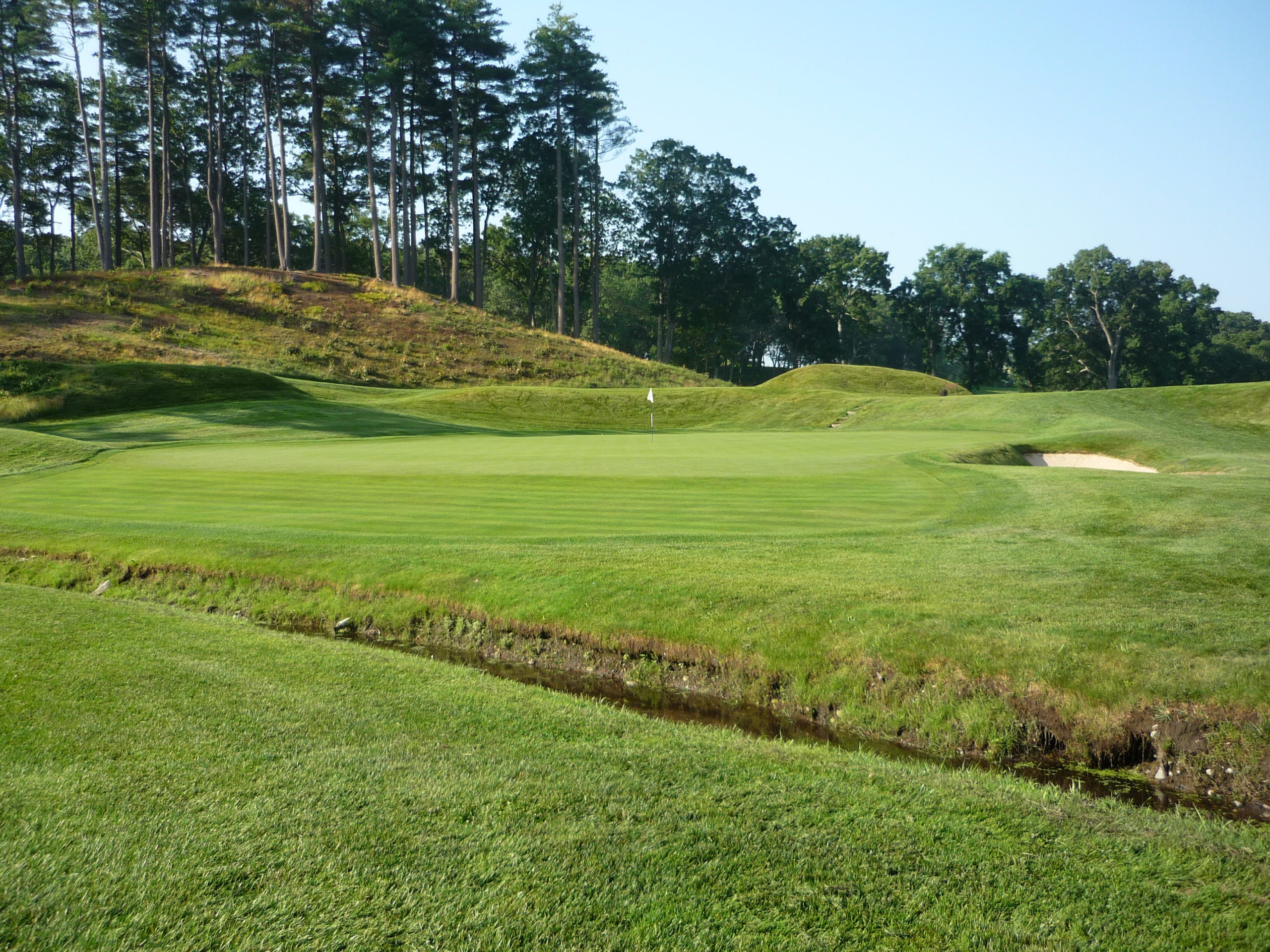
The green features a great deal of slope.
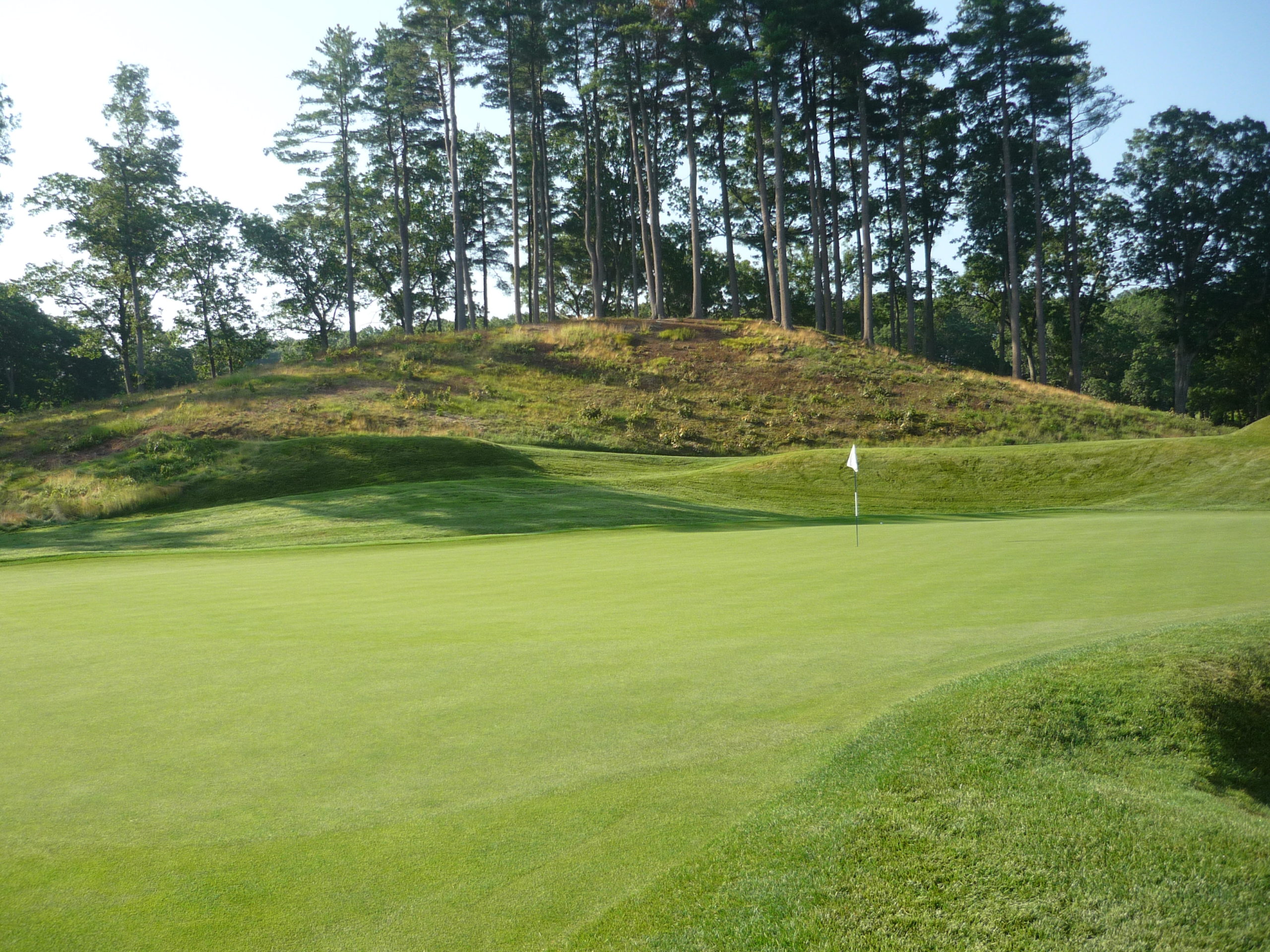
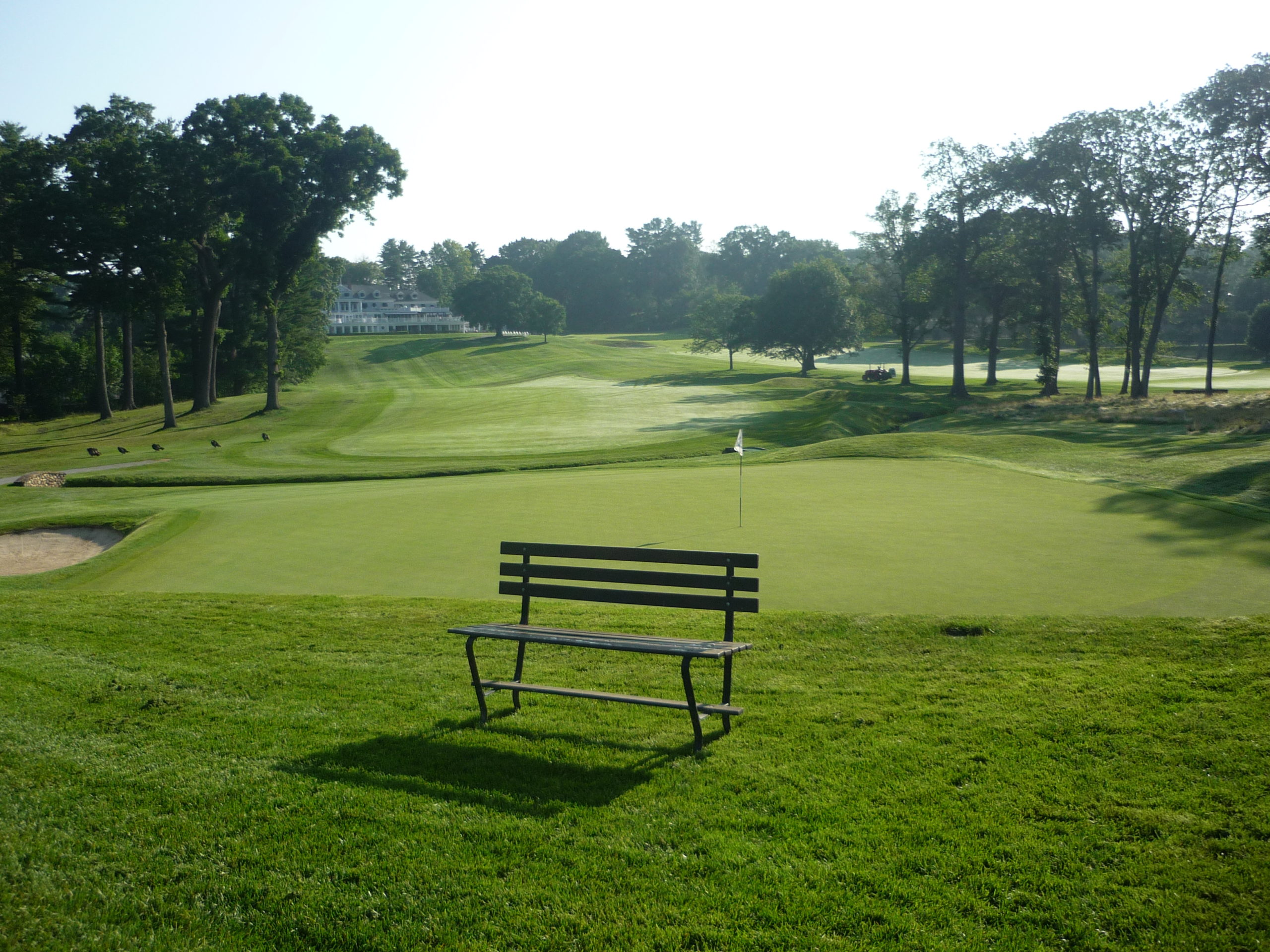
Hole 2 – 295 yards – Par 4
Carrying the mound on the left is the aggressive play here. You don’t want to miss right either.
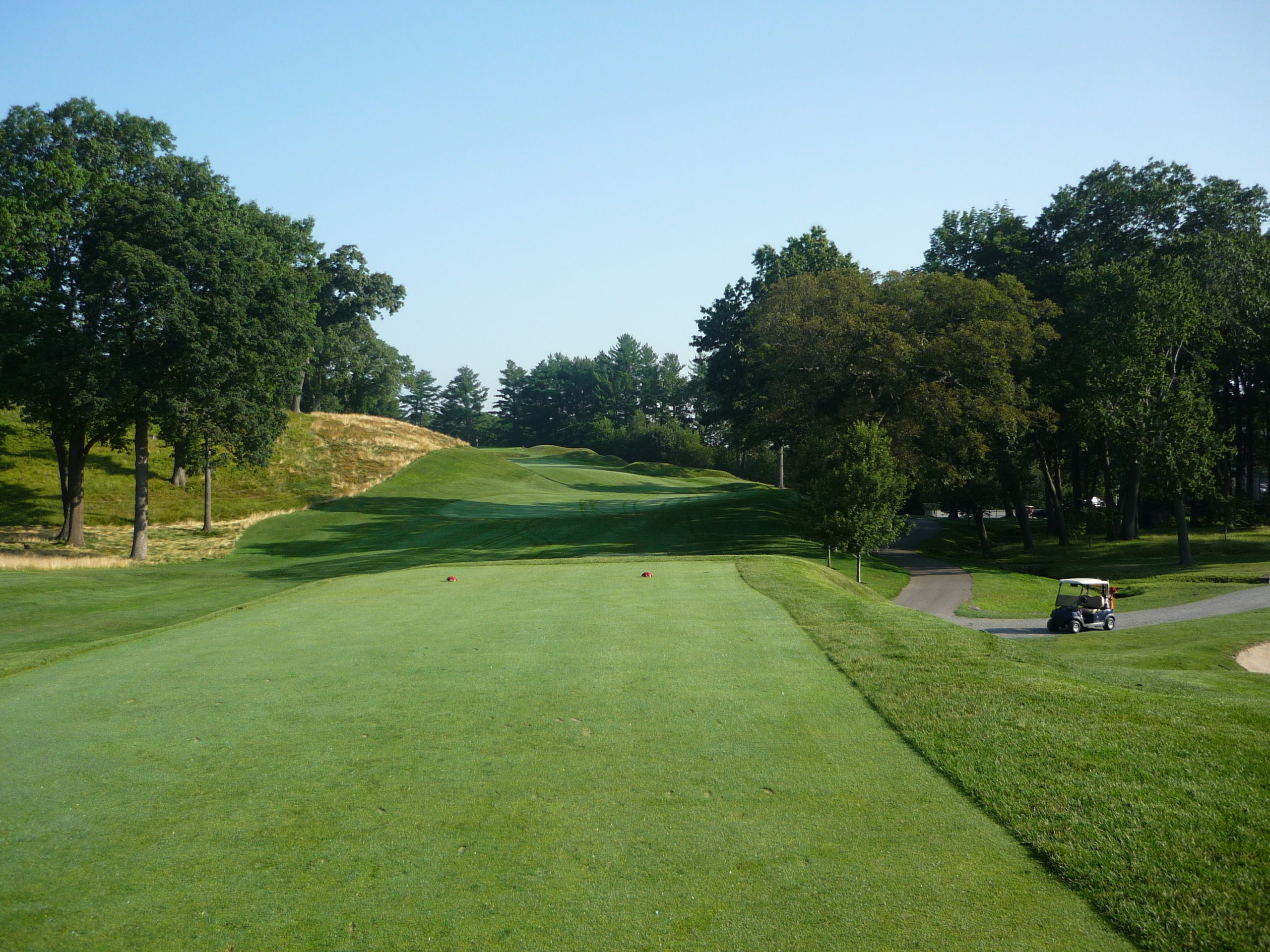
The approach is difficult with the blind green. You must get your ball on the correct level of the two-tiered green.
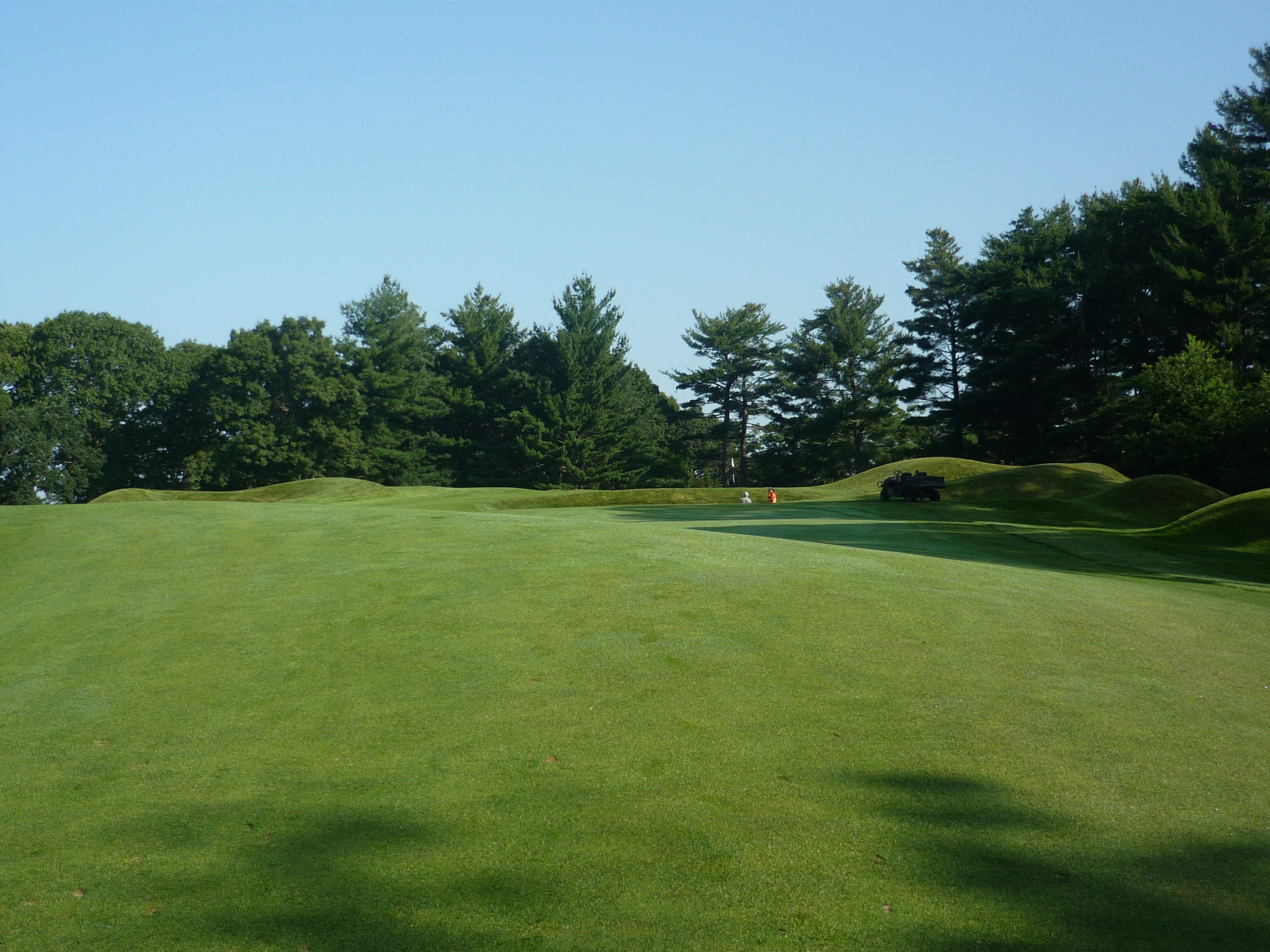
Hole 3 – 345 yards – Par 4
You’ve got a tight fairway here where anything on the short grass will be a win. Another semi-blind approach is followed by one of the toughest greens on the course with numerous mounds.
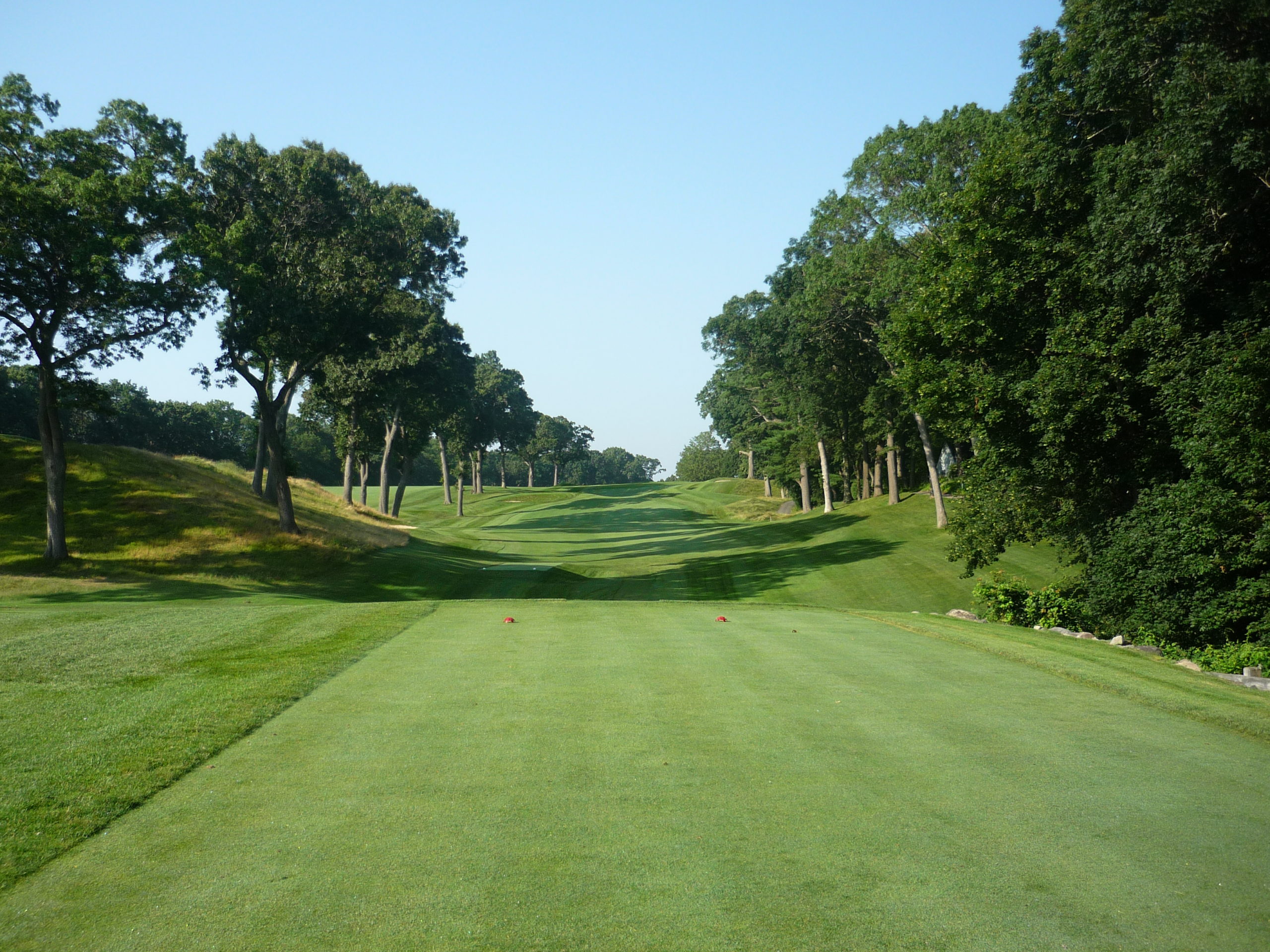
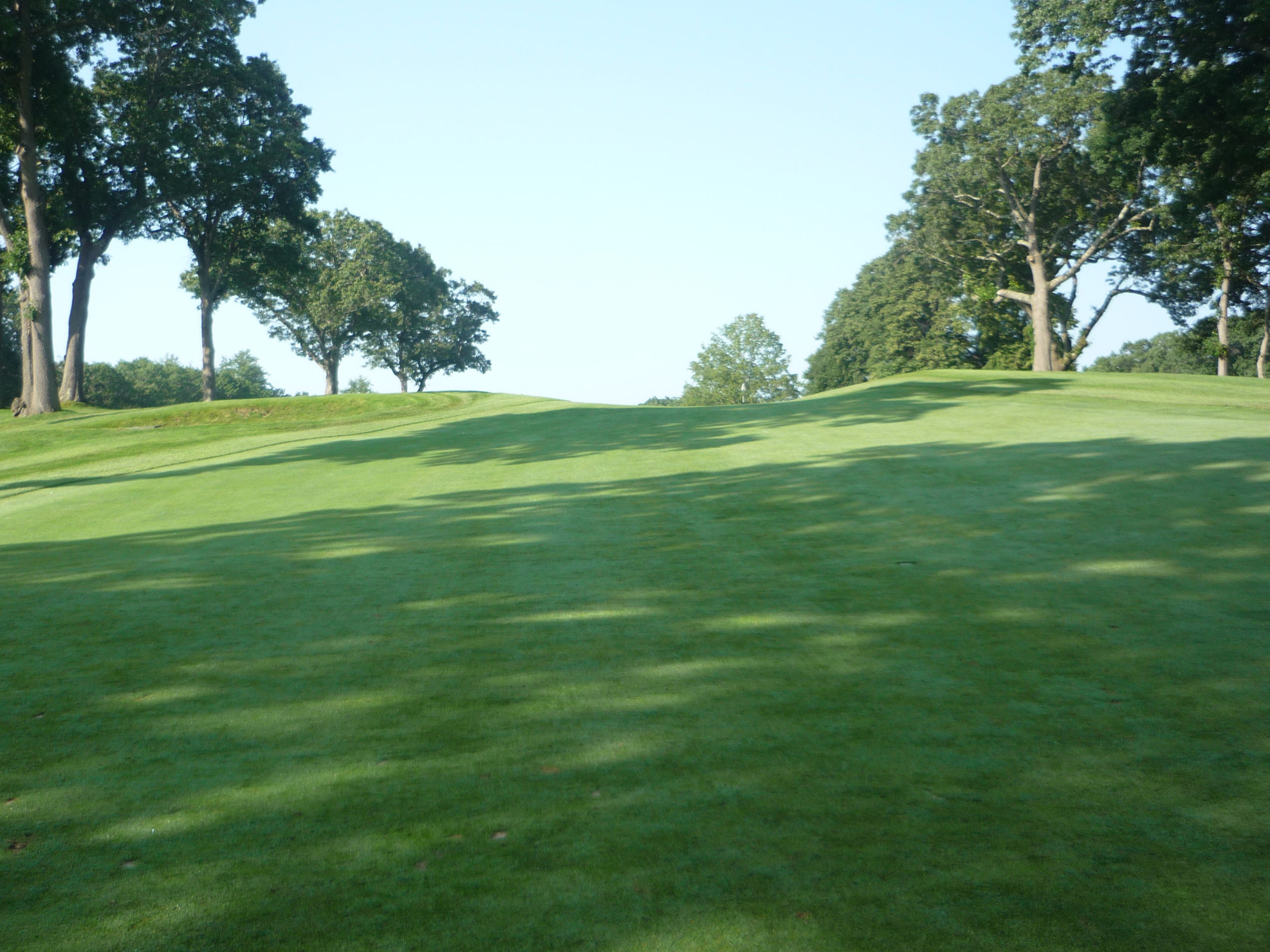
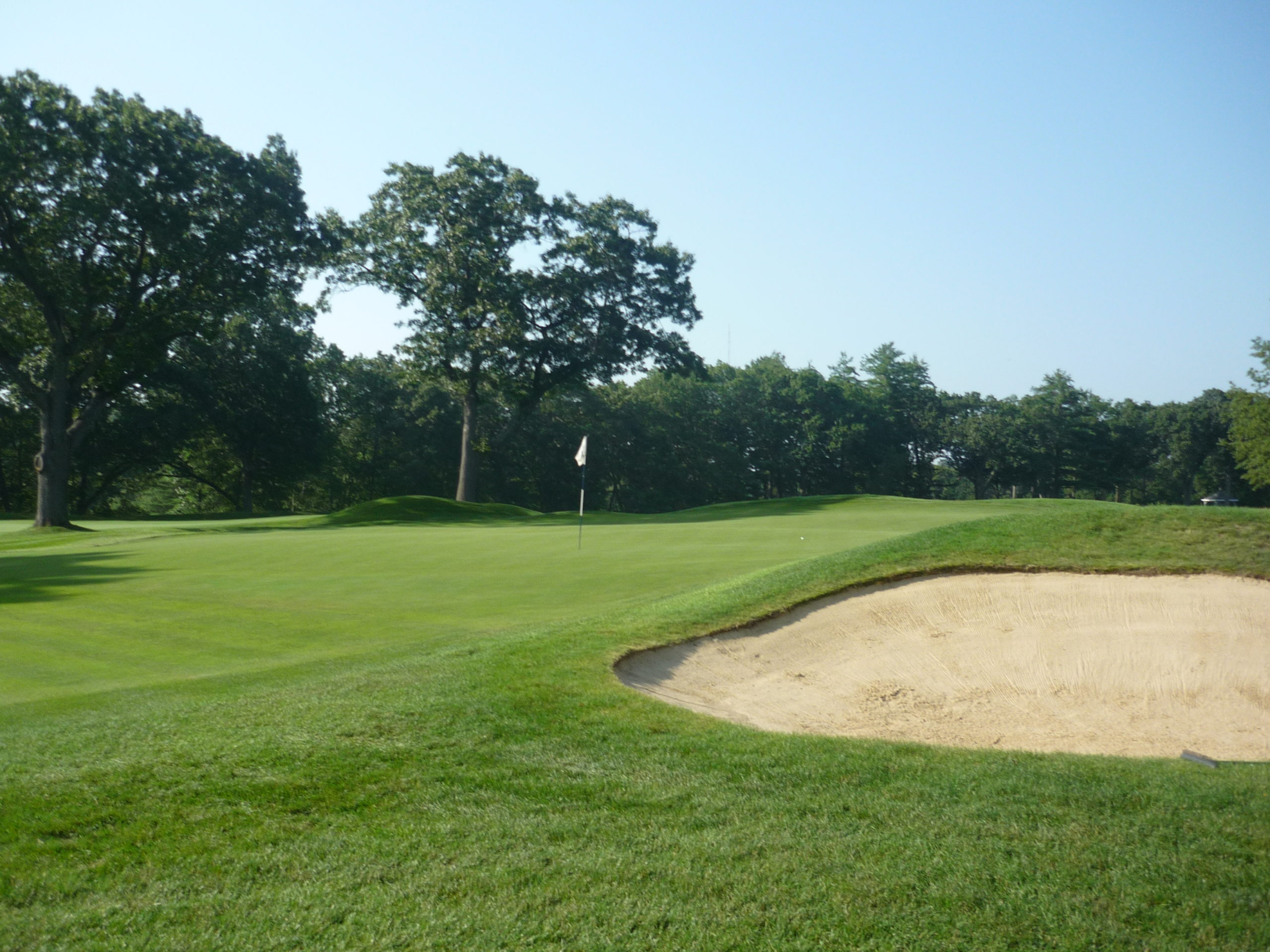
Hole 4 – 424 yards – Par 4
Rough and bunkers guard the left while out-of-bounds borders the right. If you have a fade, count yourself lucky because it fits this tee shot wonderfully.
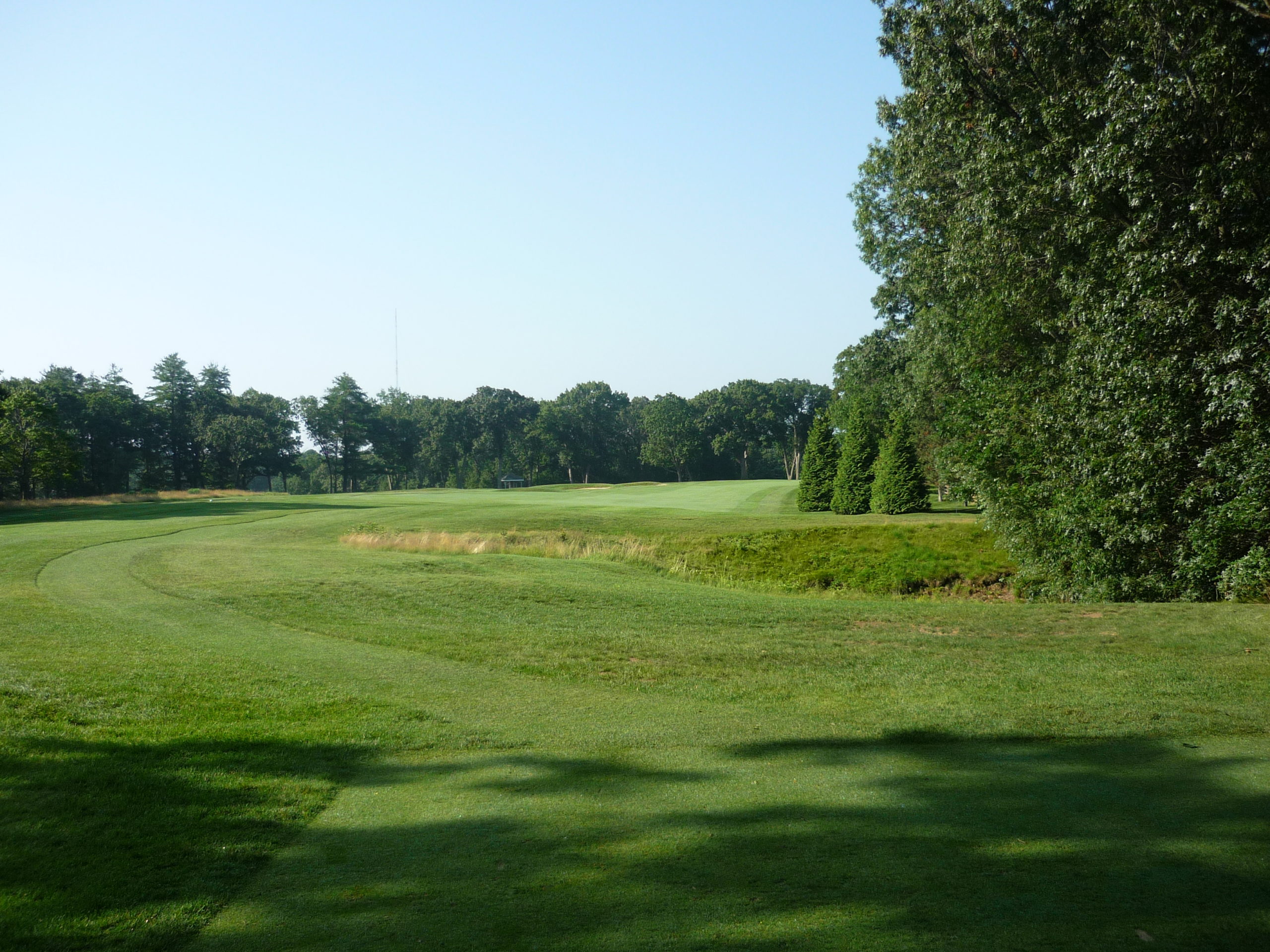
An open green will allow balls to filter on from short.
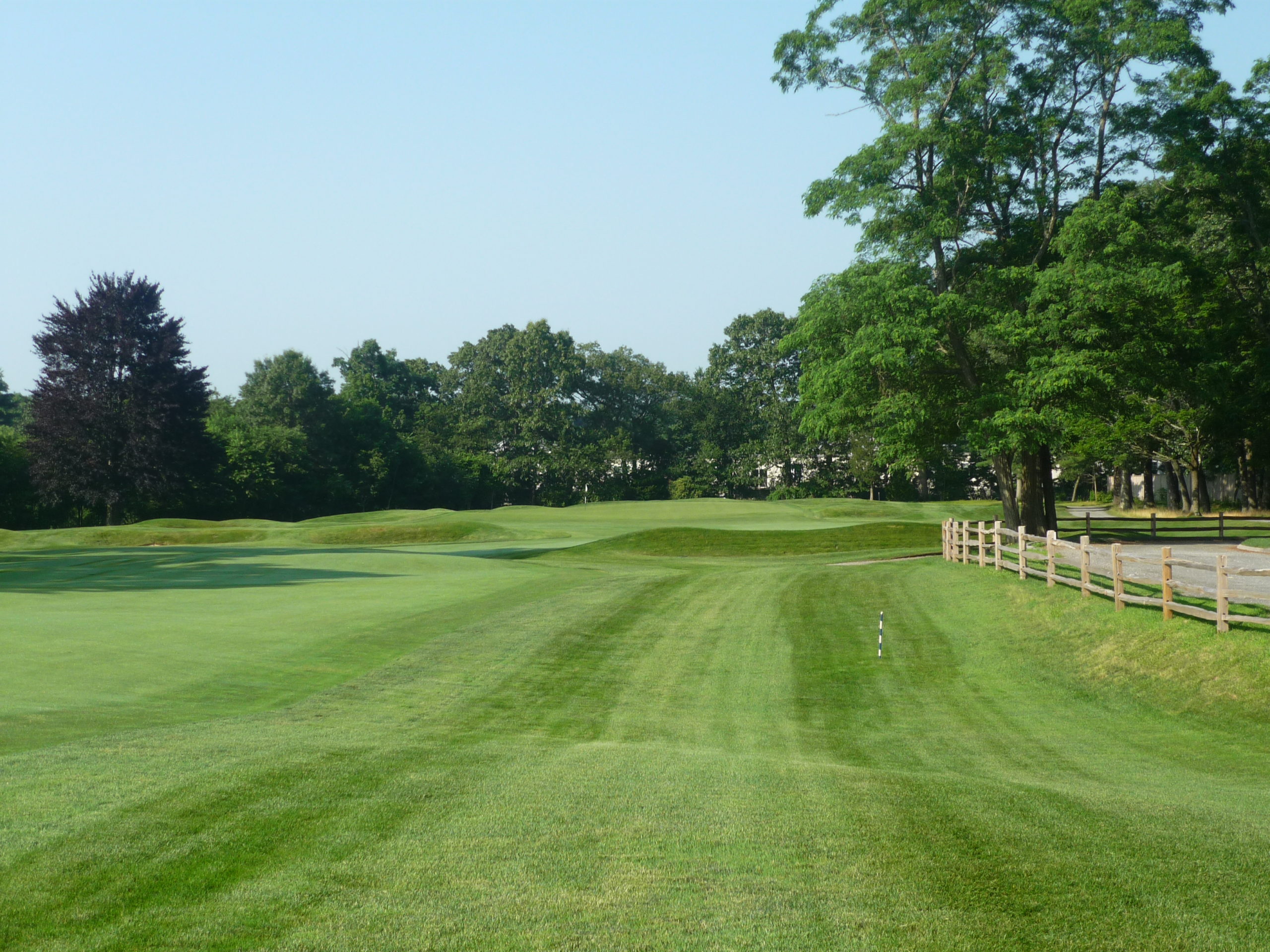
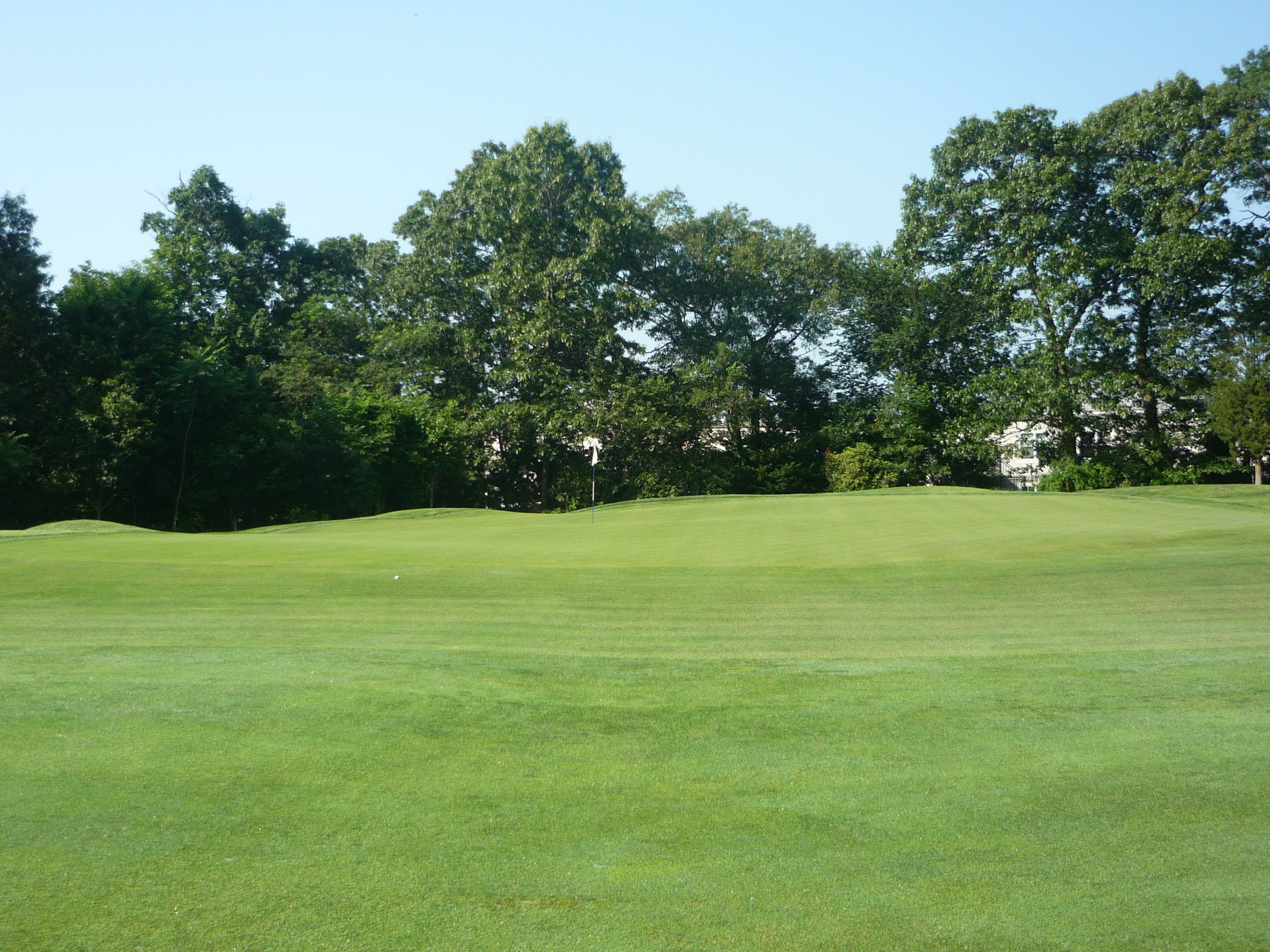
Hole 5 – 546 yards – Par 5
Hitting the fairway is imperative if you want to get home in two here. The fairway is narrow before it dips severely and rises back to the green.
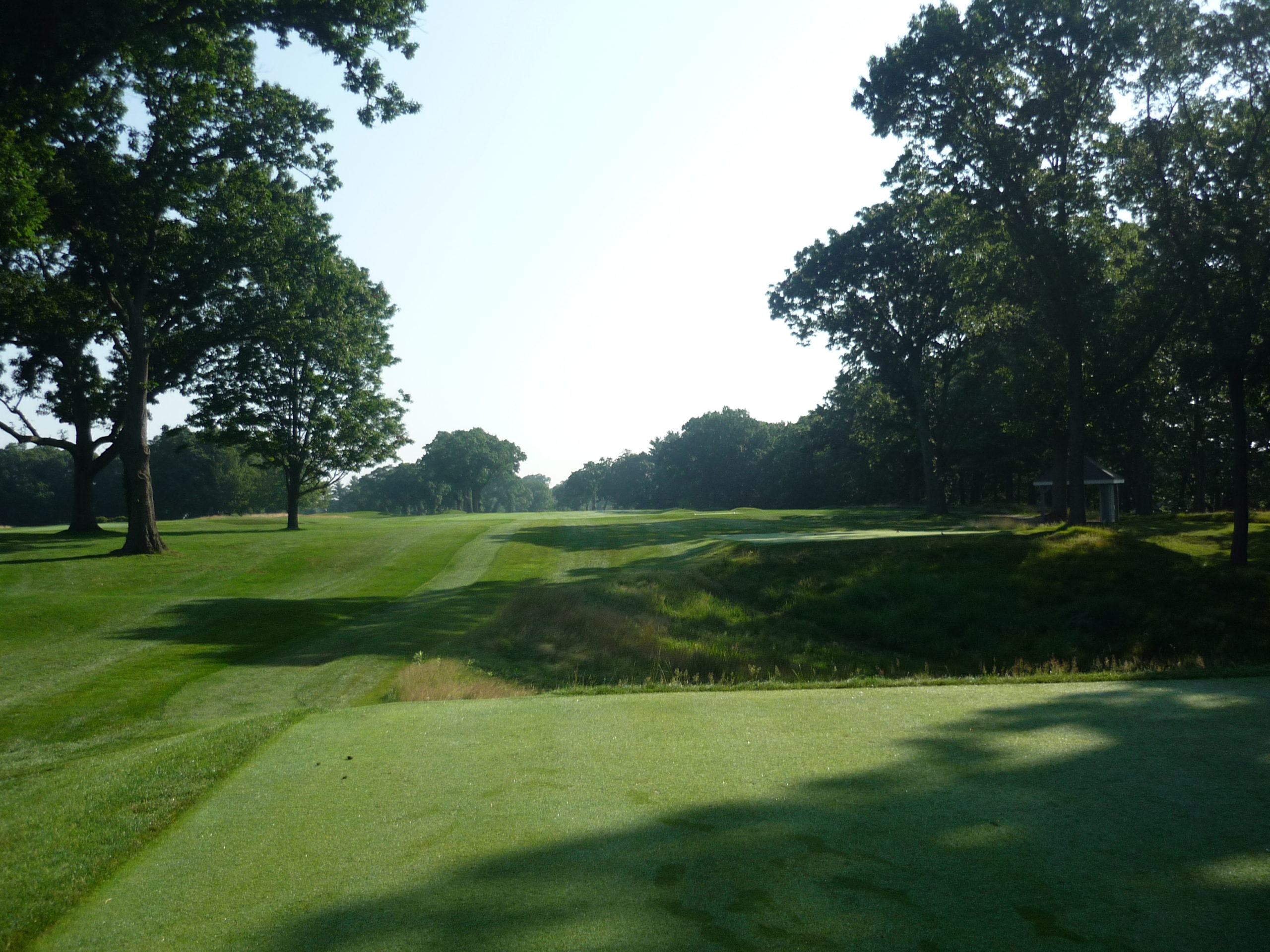
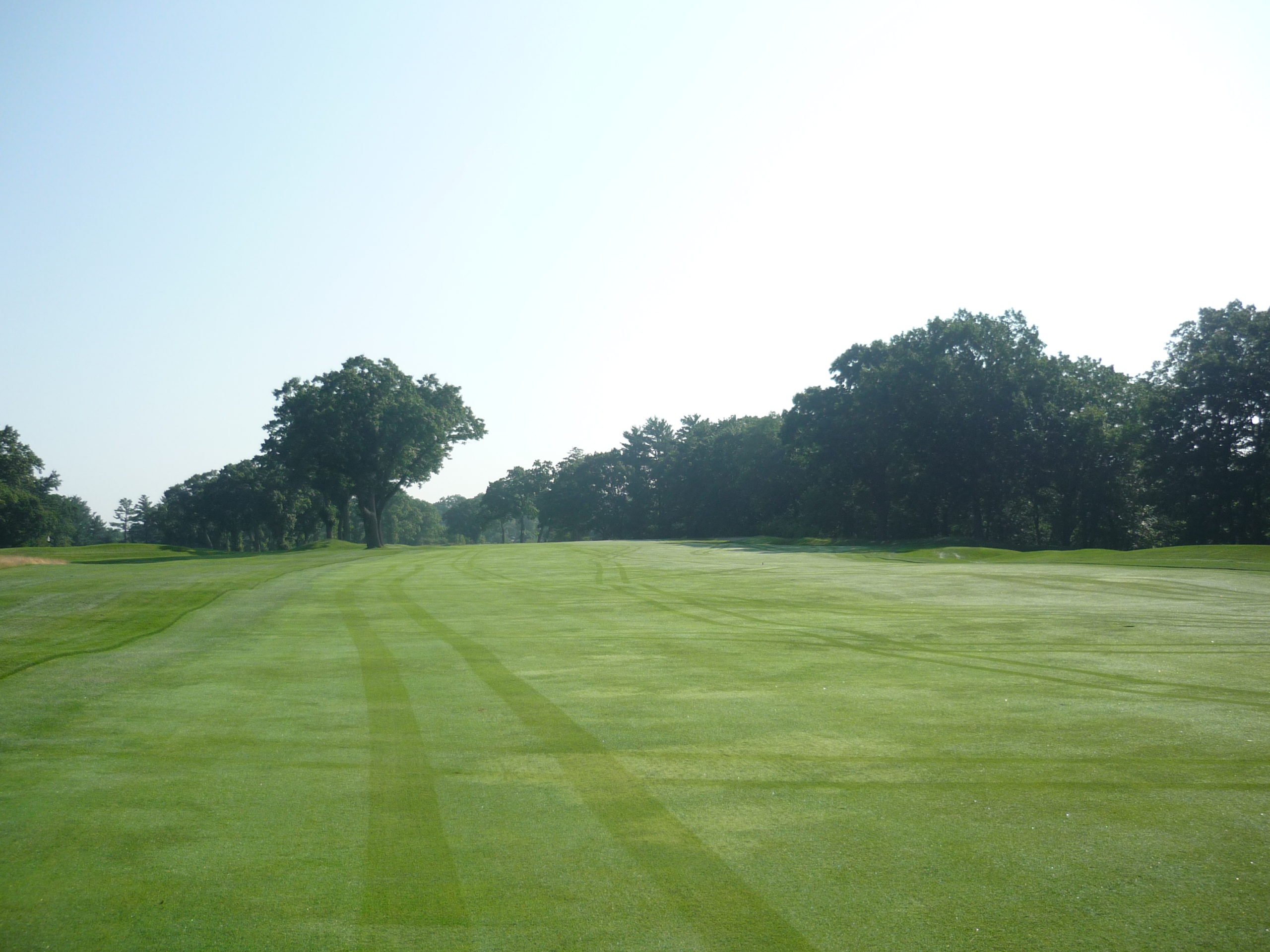
If you feature too much spin on your approach shot, it might roll back quite a bit with the false front.
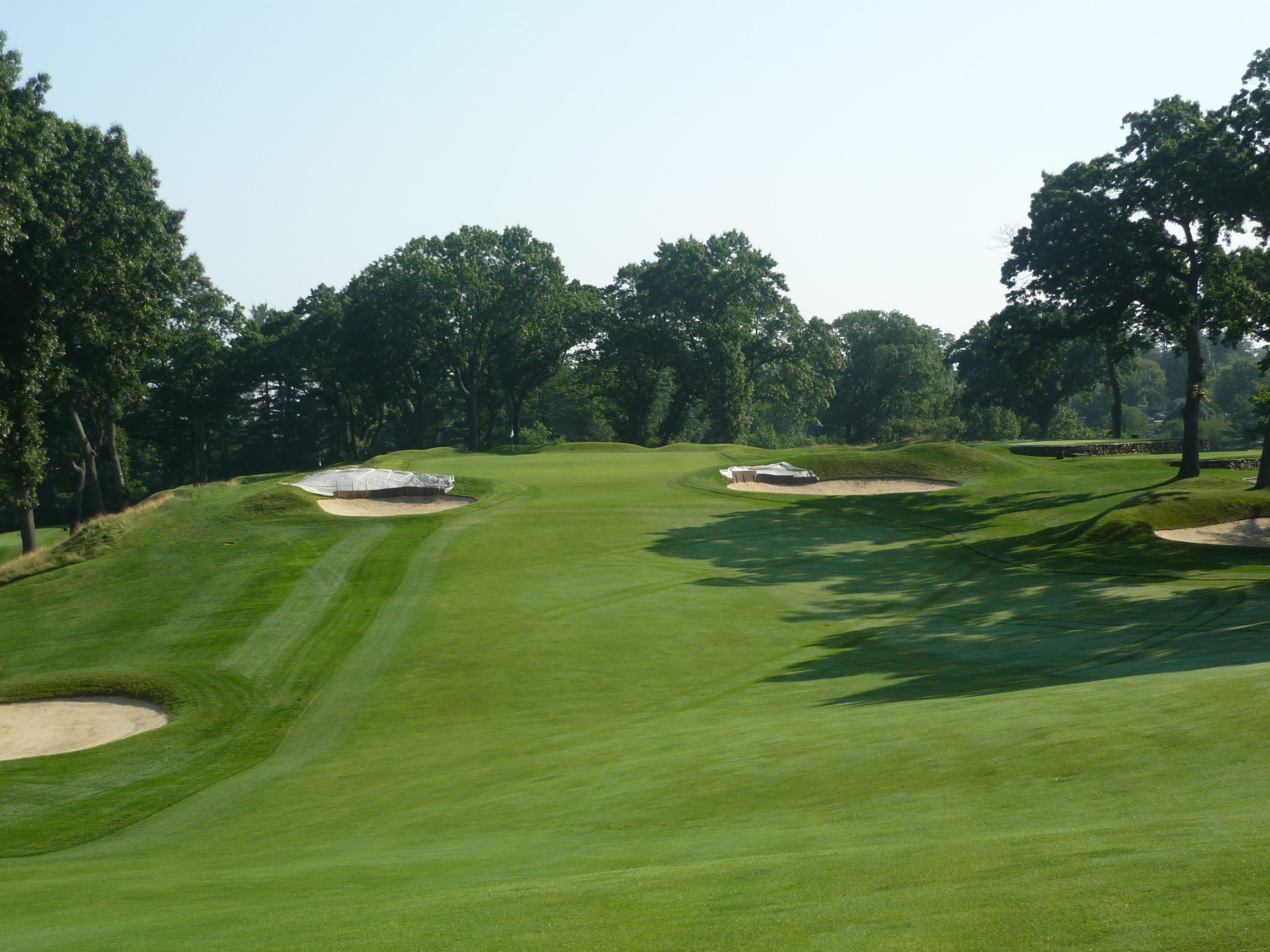
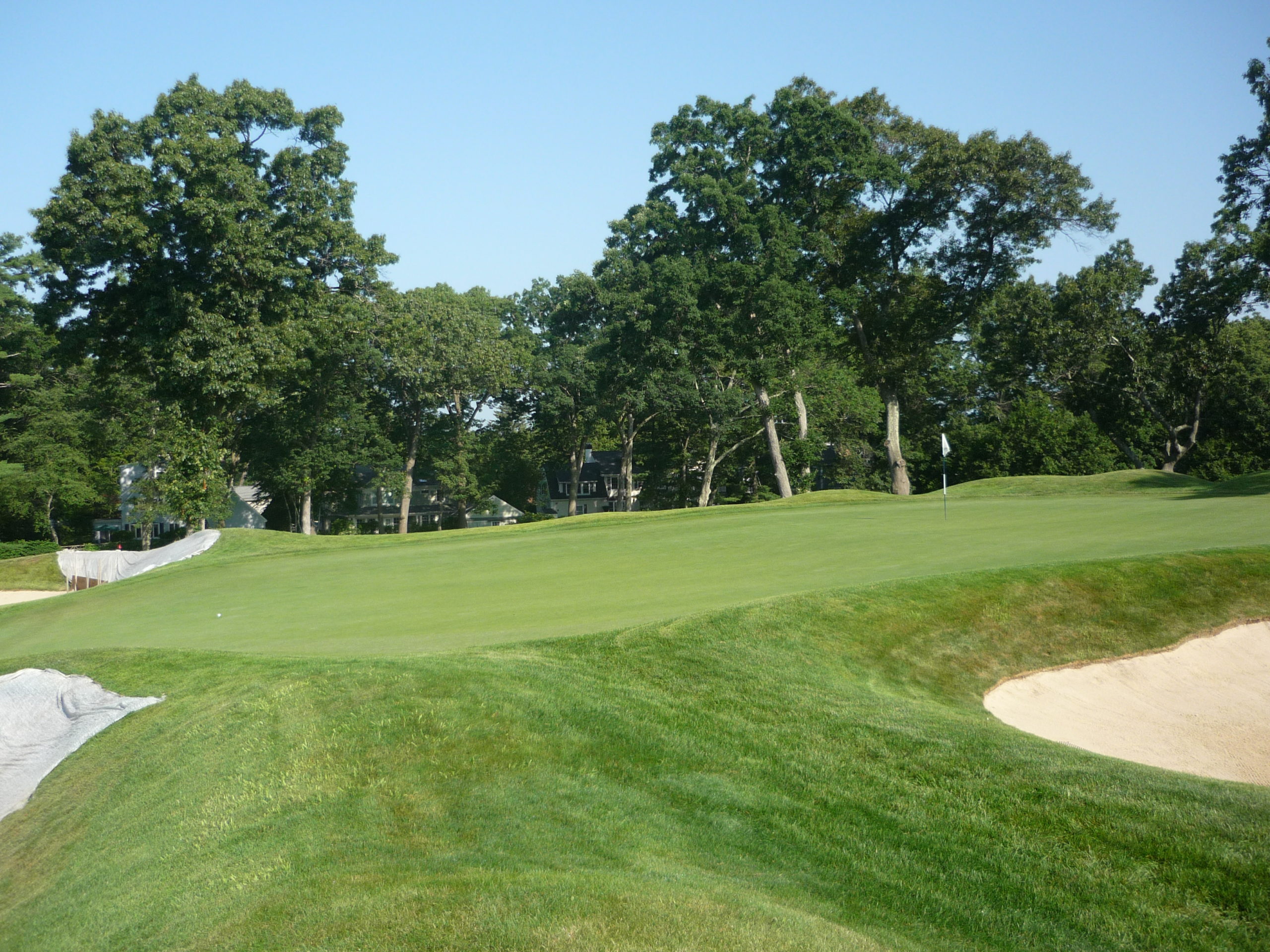
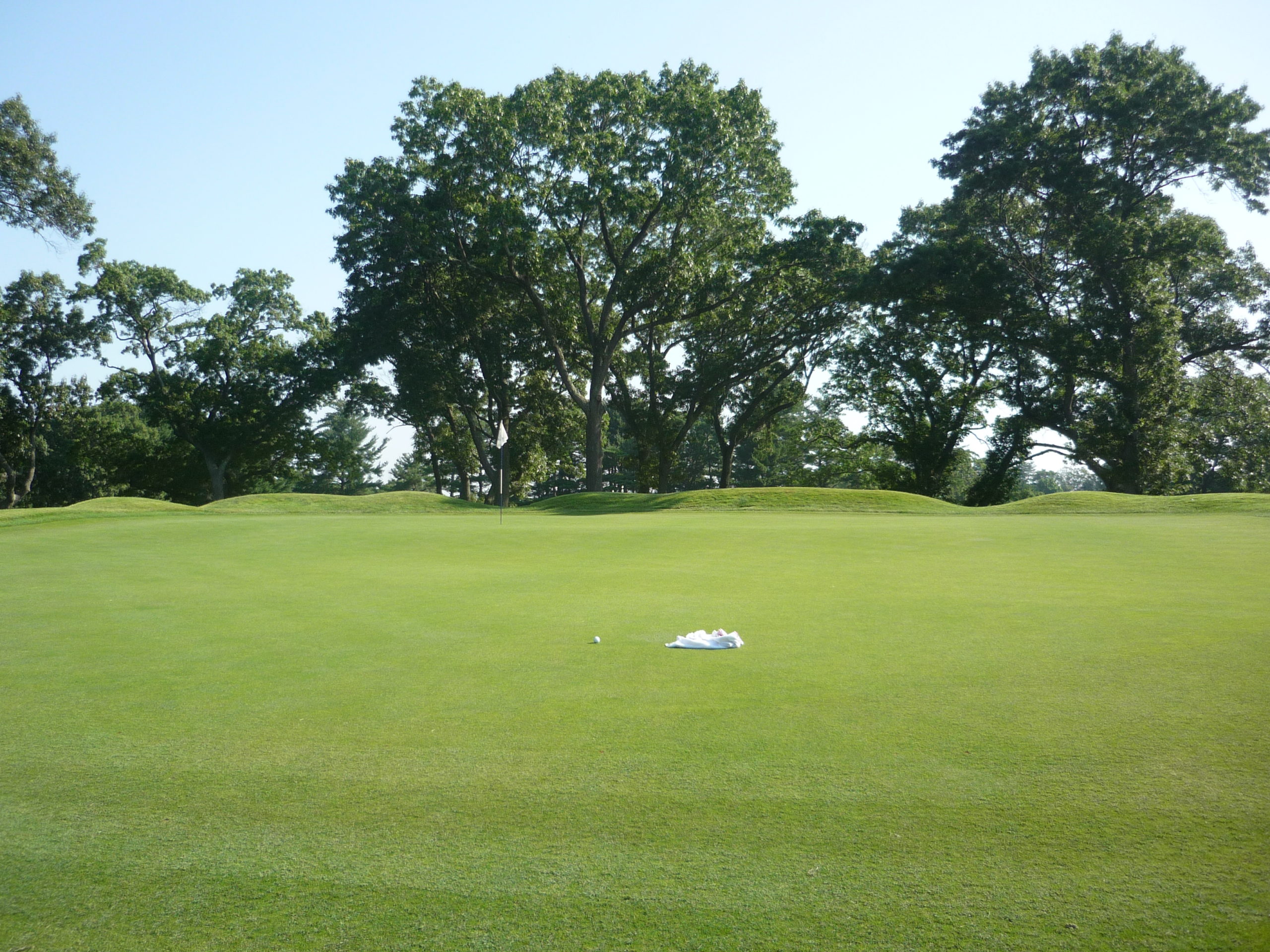
Hole 6 – 149 yards – Par 3
The elevation change coupled with a small, contoured green makes this a difficult short hole. I missed left of the green in some thick rough and was in jail.
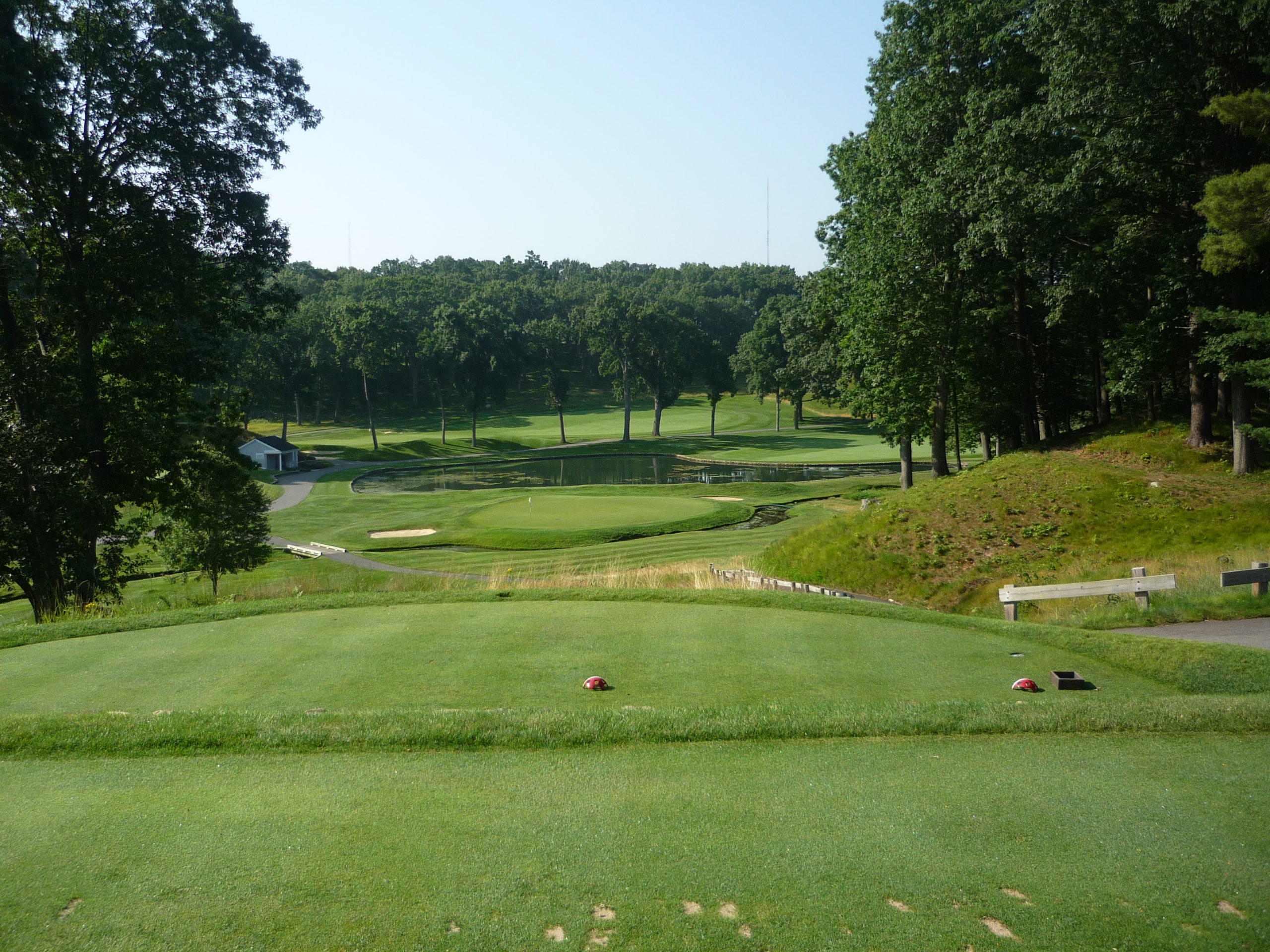
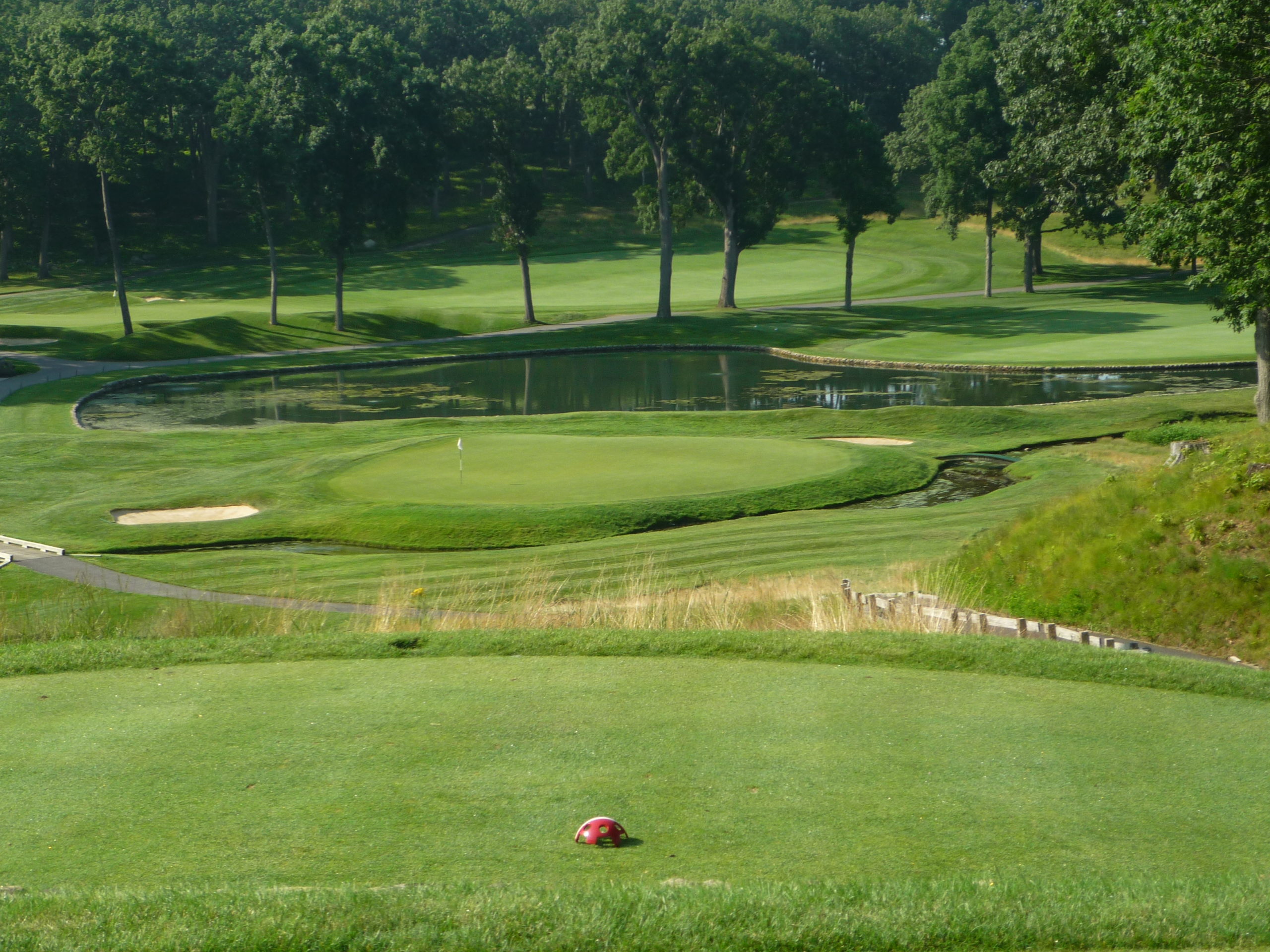
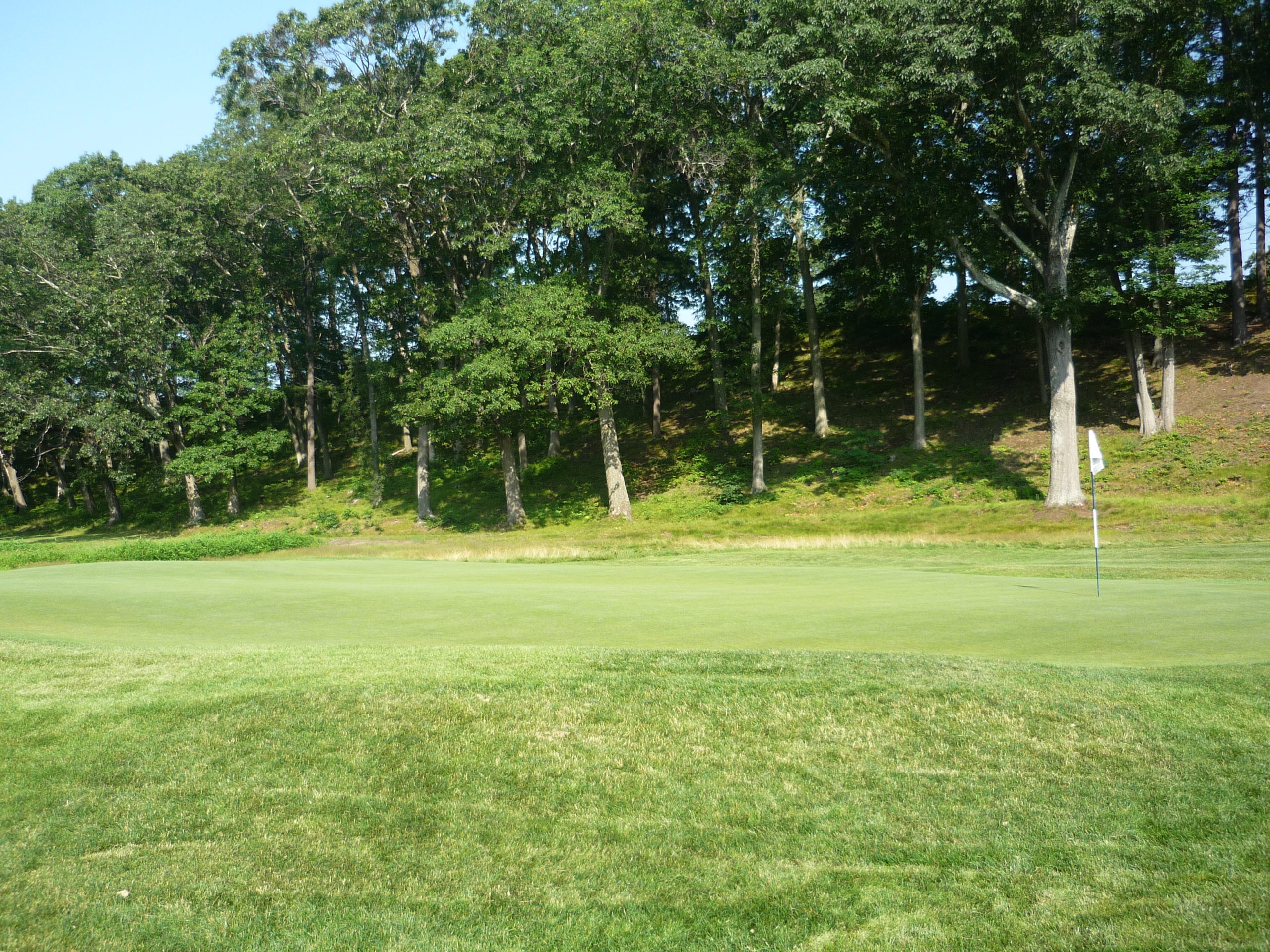
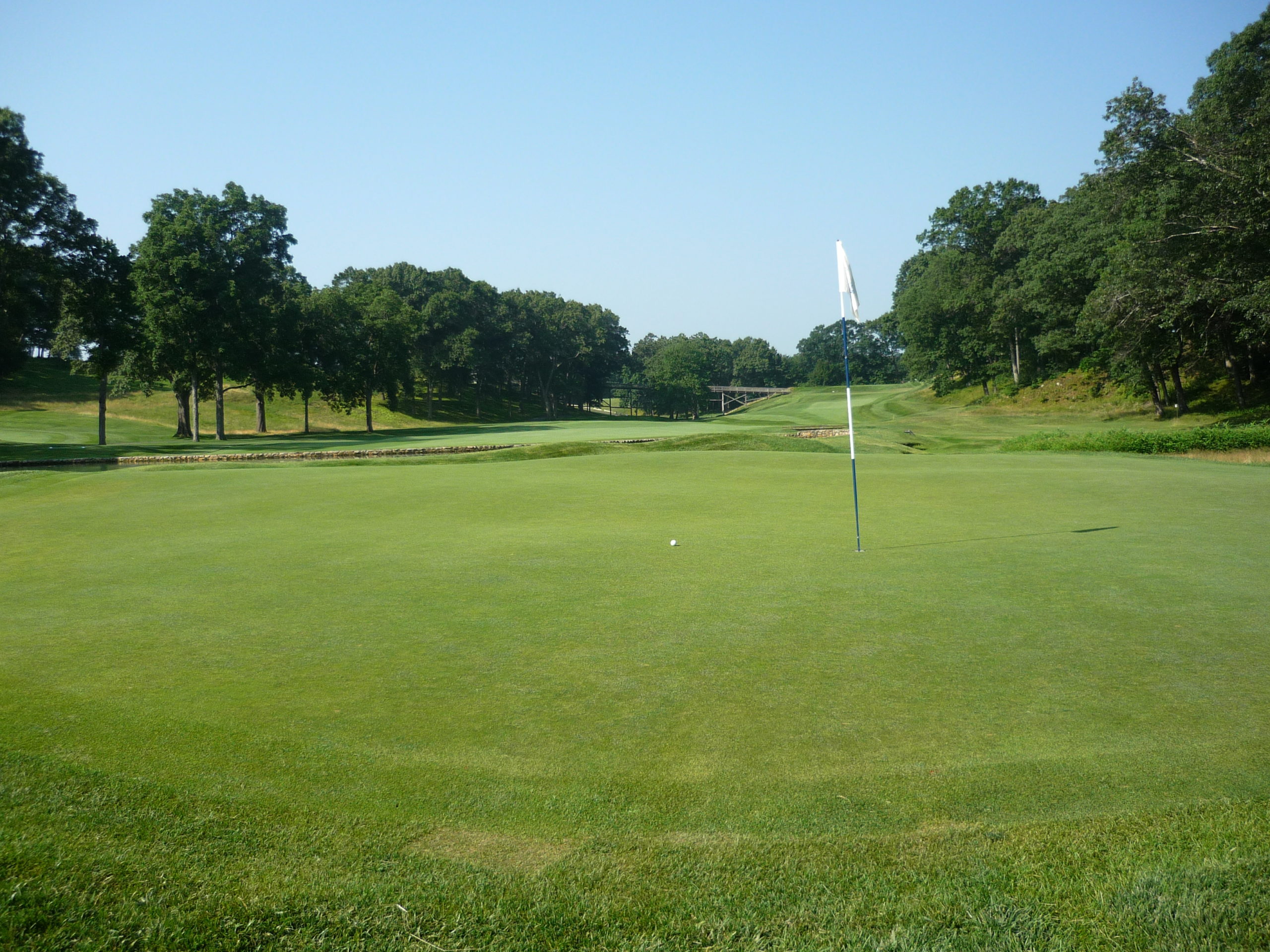
Hole 7 – 400 yards – Par 4
Be mindful of the creek meandering up the right side and crossing the fairway. Missing short of the green could spell disaster with a heavily sloped short grass area.
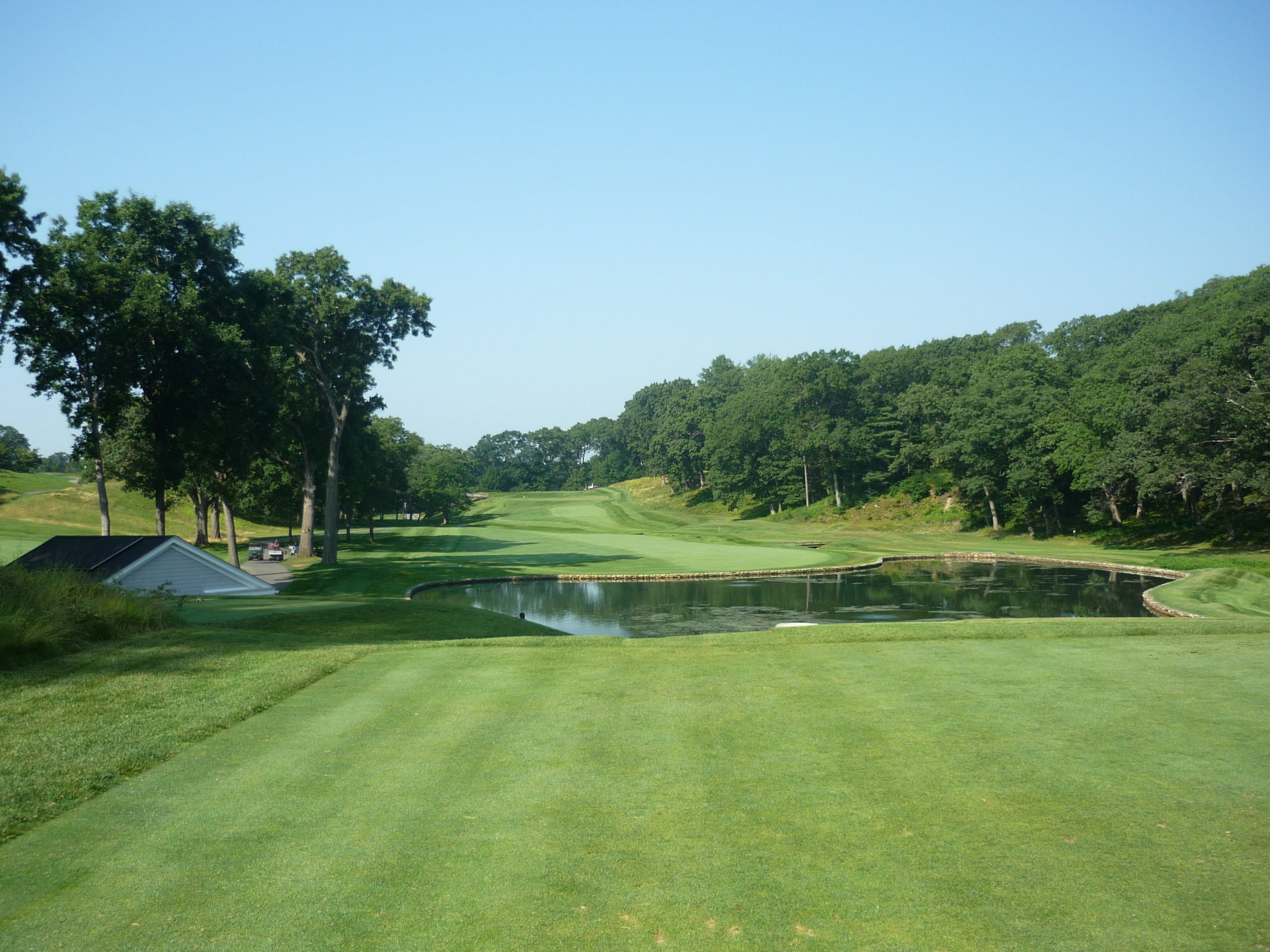
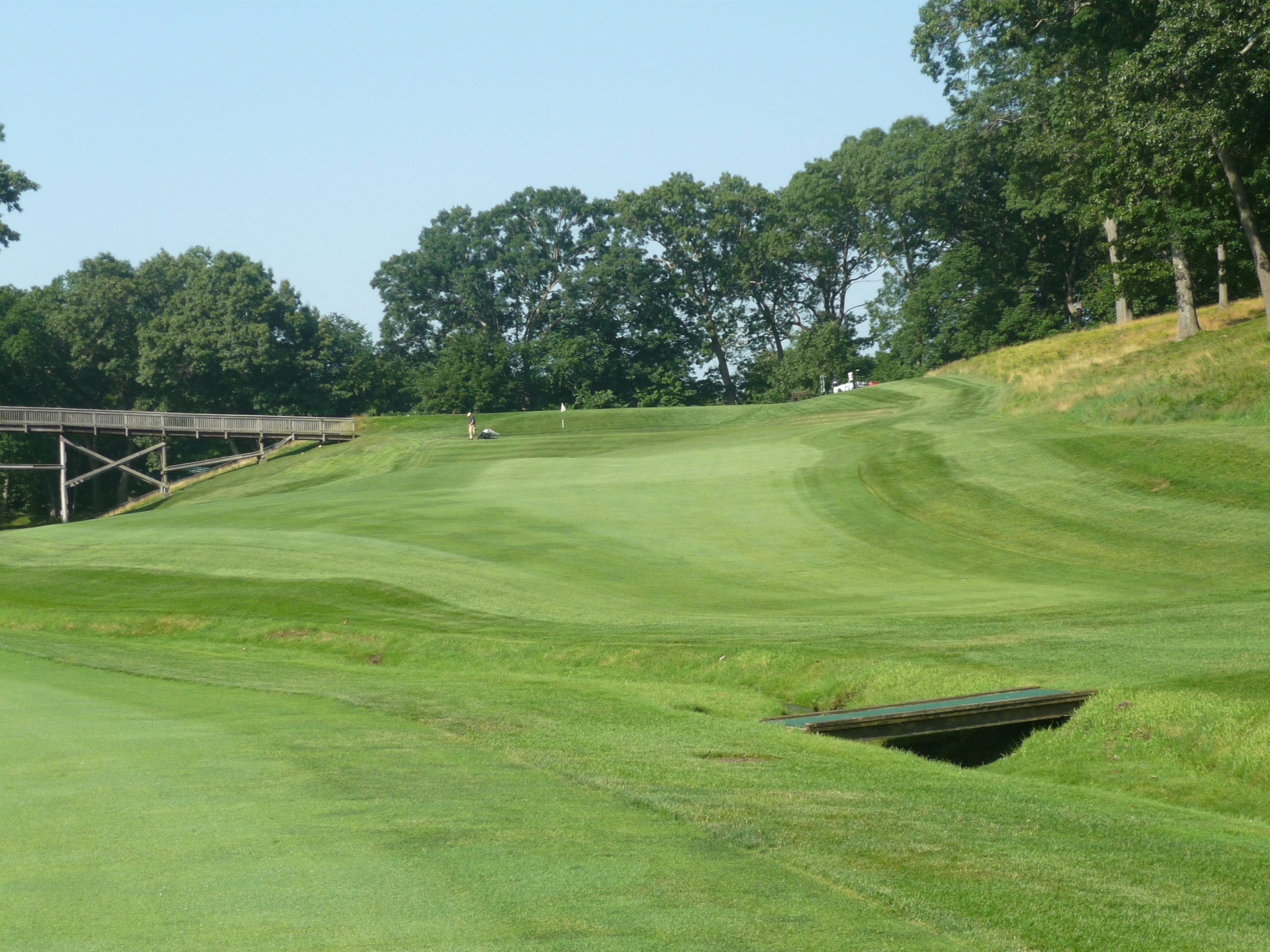
Beautiful but difficult.
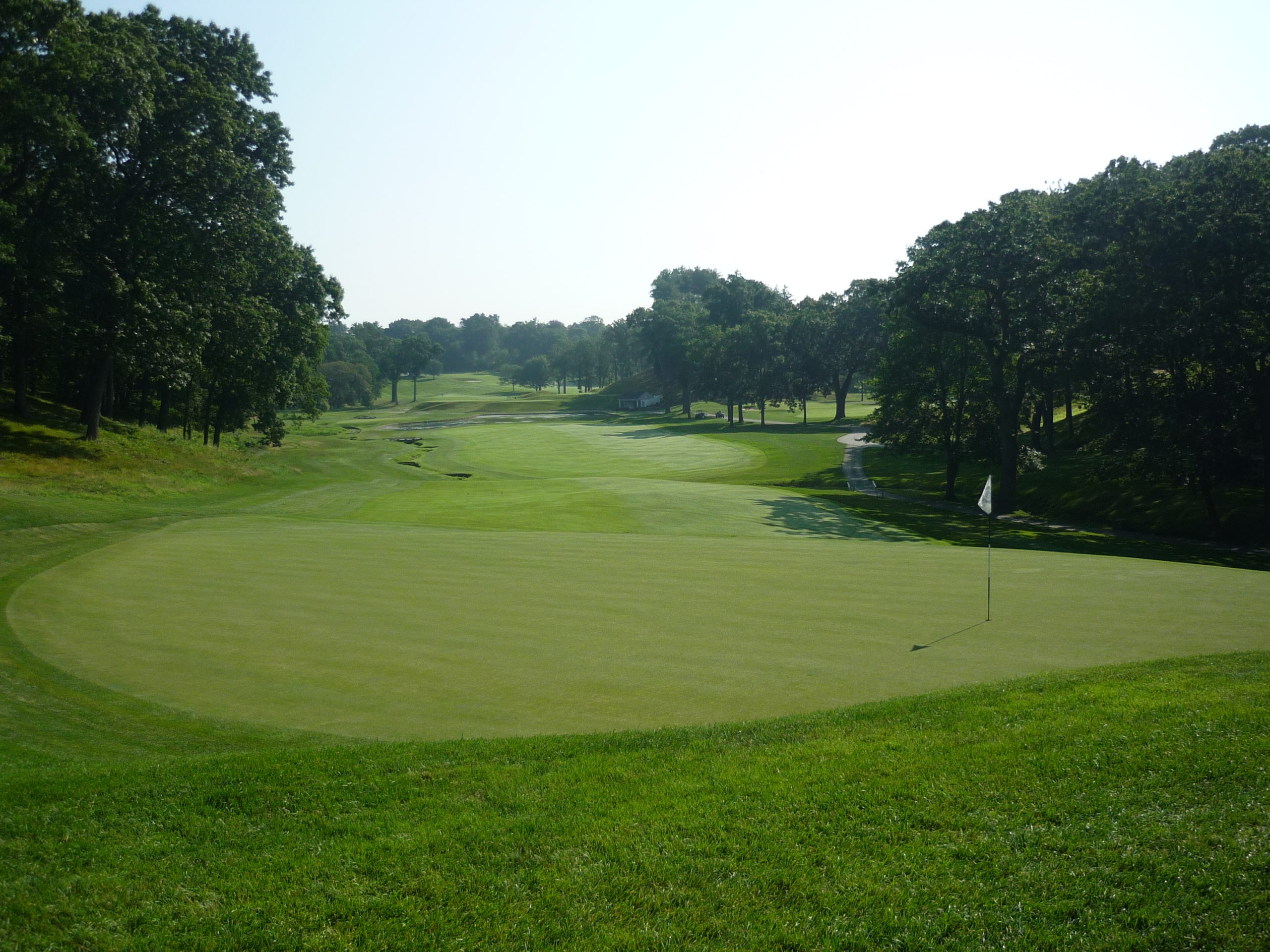
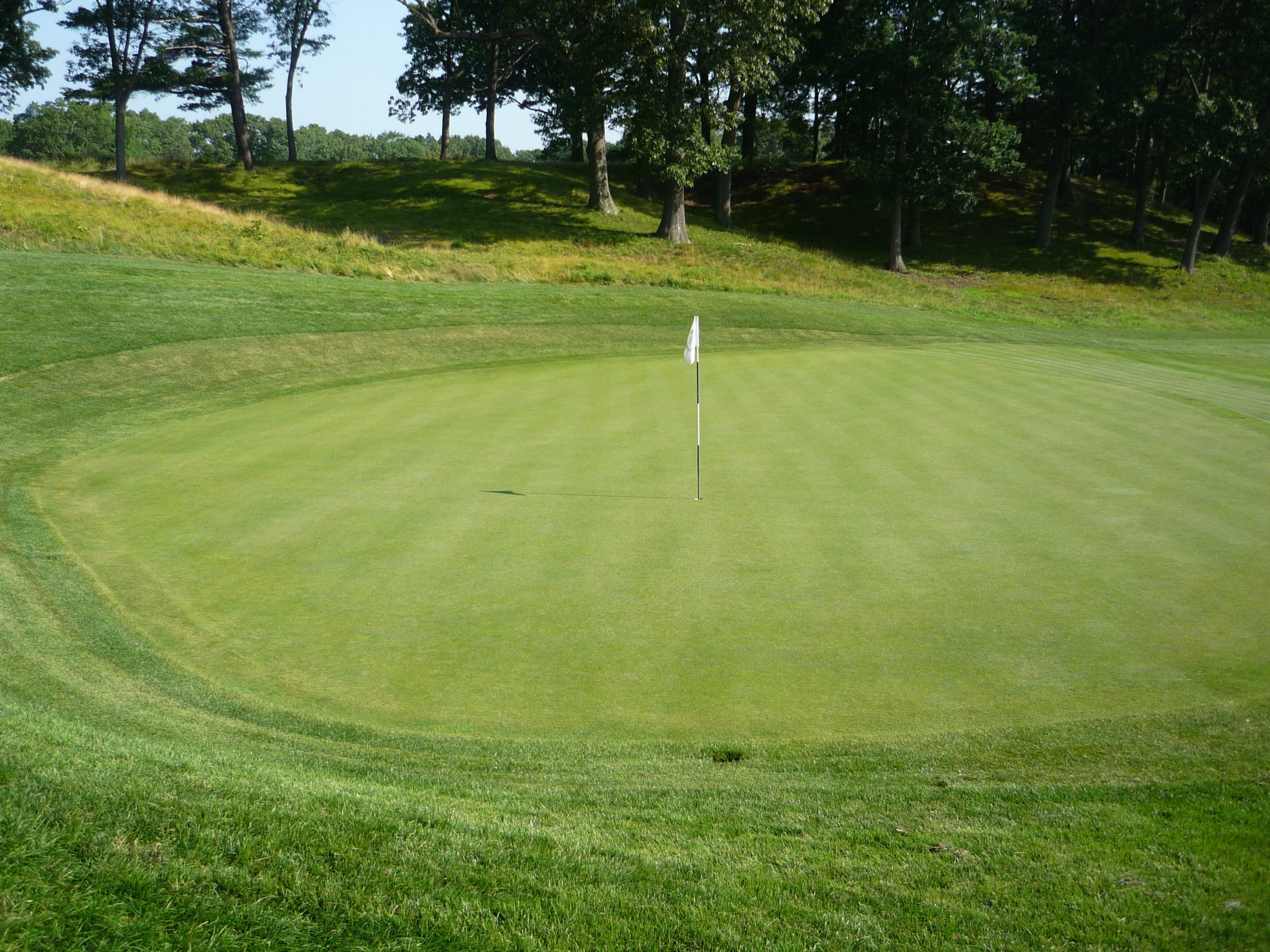
Hole 8 – 164 yards – Par 3
In the 1919 US Open, a competitor made an 18 here, a record that still stands. Finding the green should result in a much lower score than that.
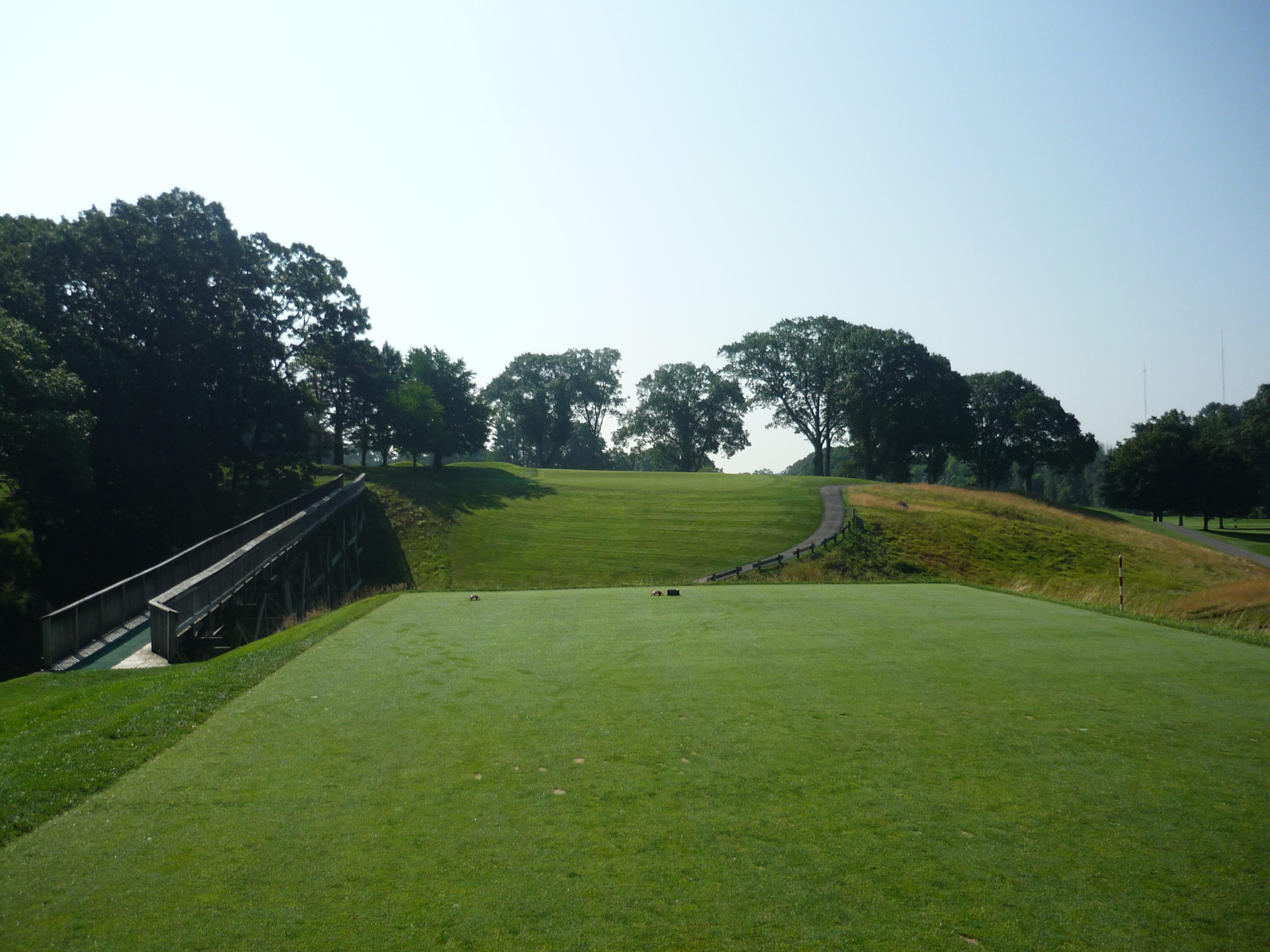
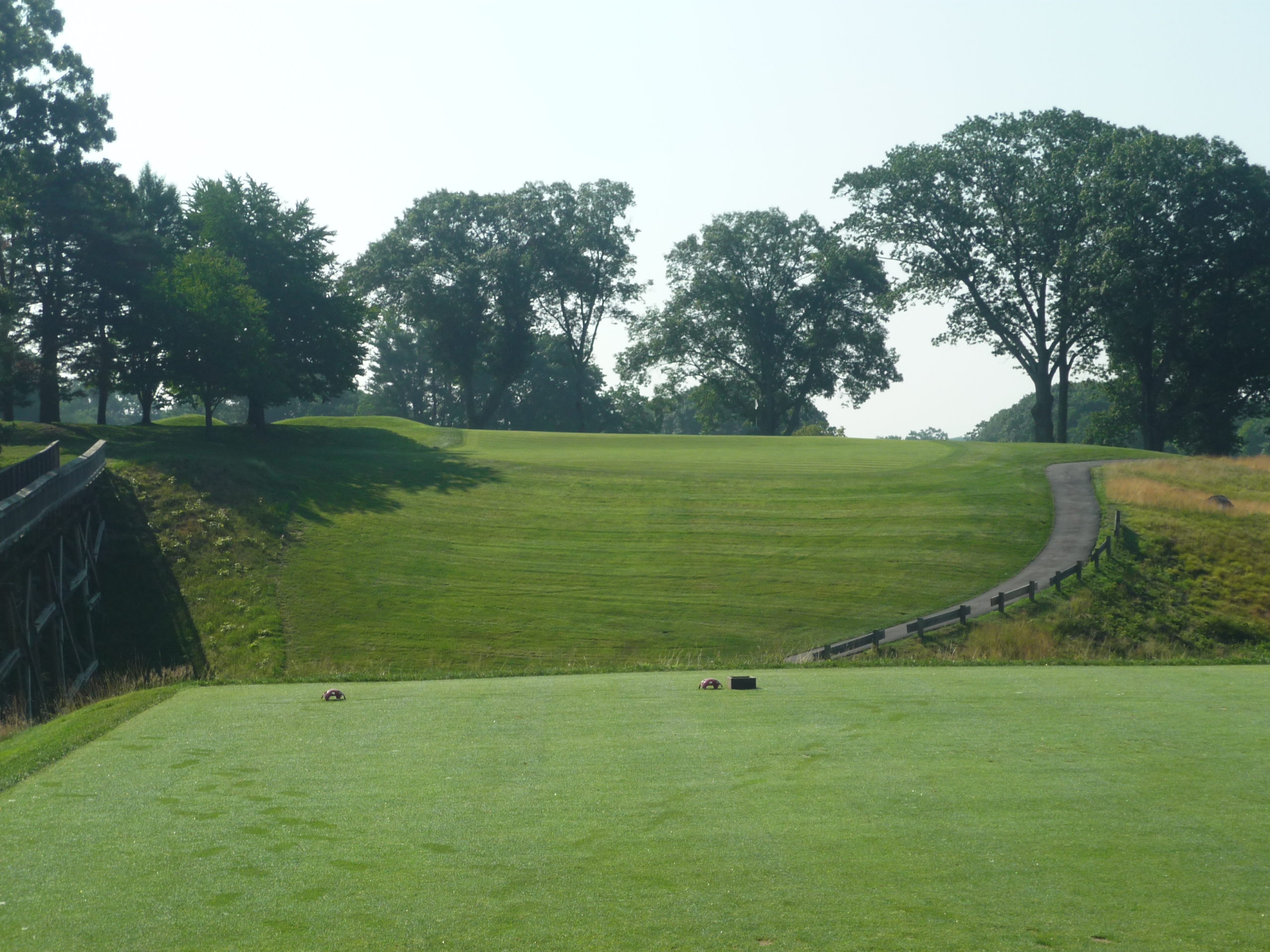
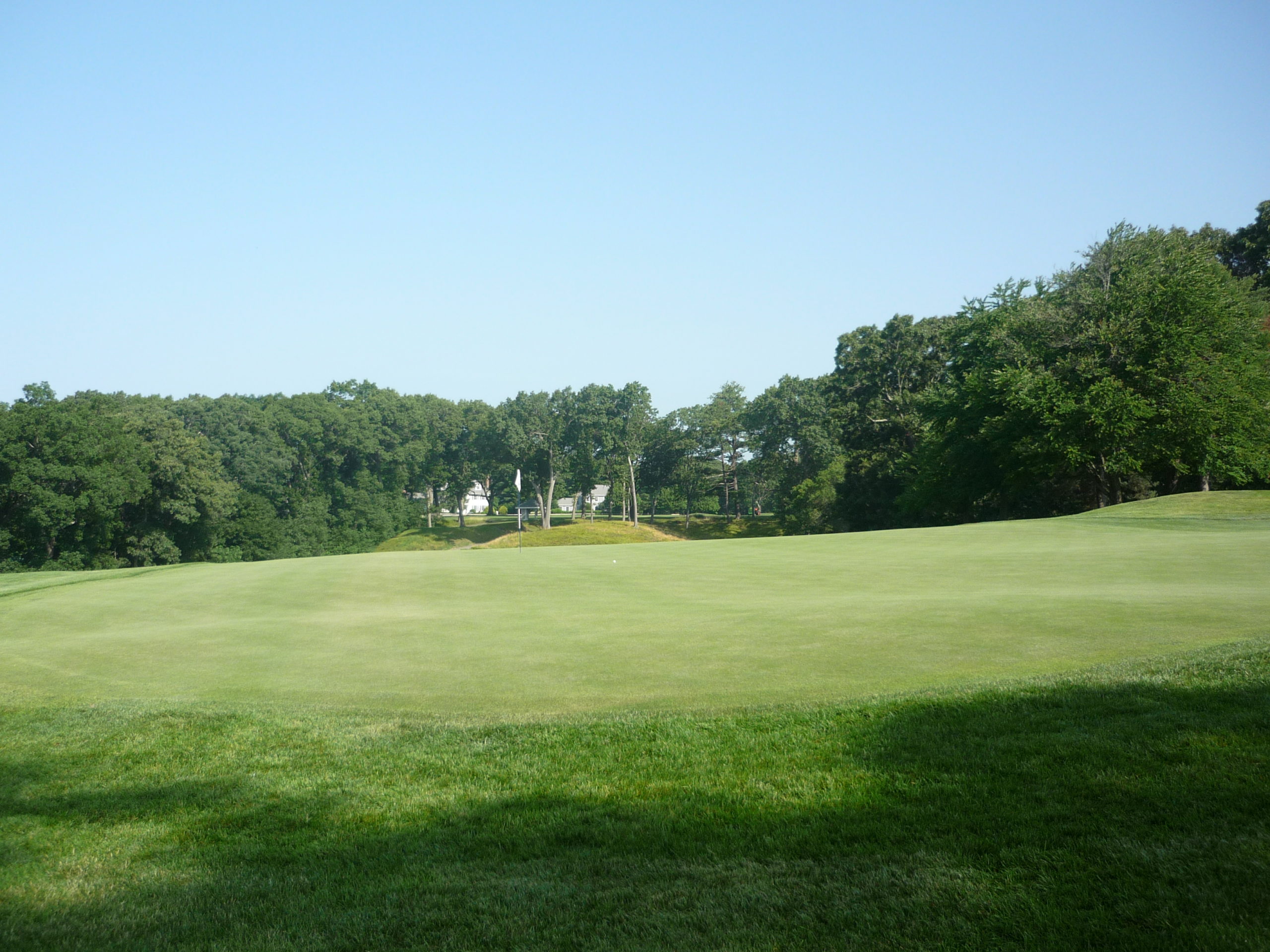
Hole 9 – 289 yards – Par 4
For a full approach, you can play to the top of the hill here. Otherwise, blast one down to the bottom for a short wedge shot. Shots that come up short of the green will be snagged by deep rough.
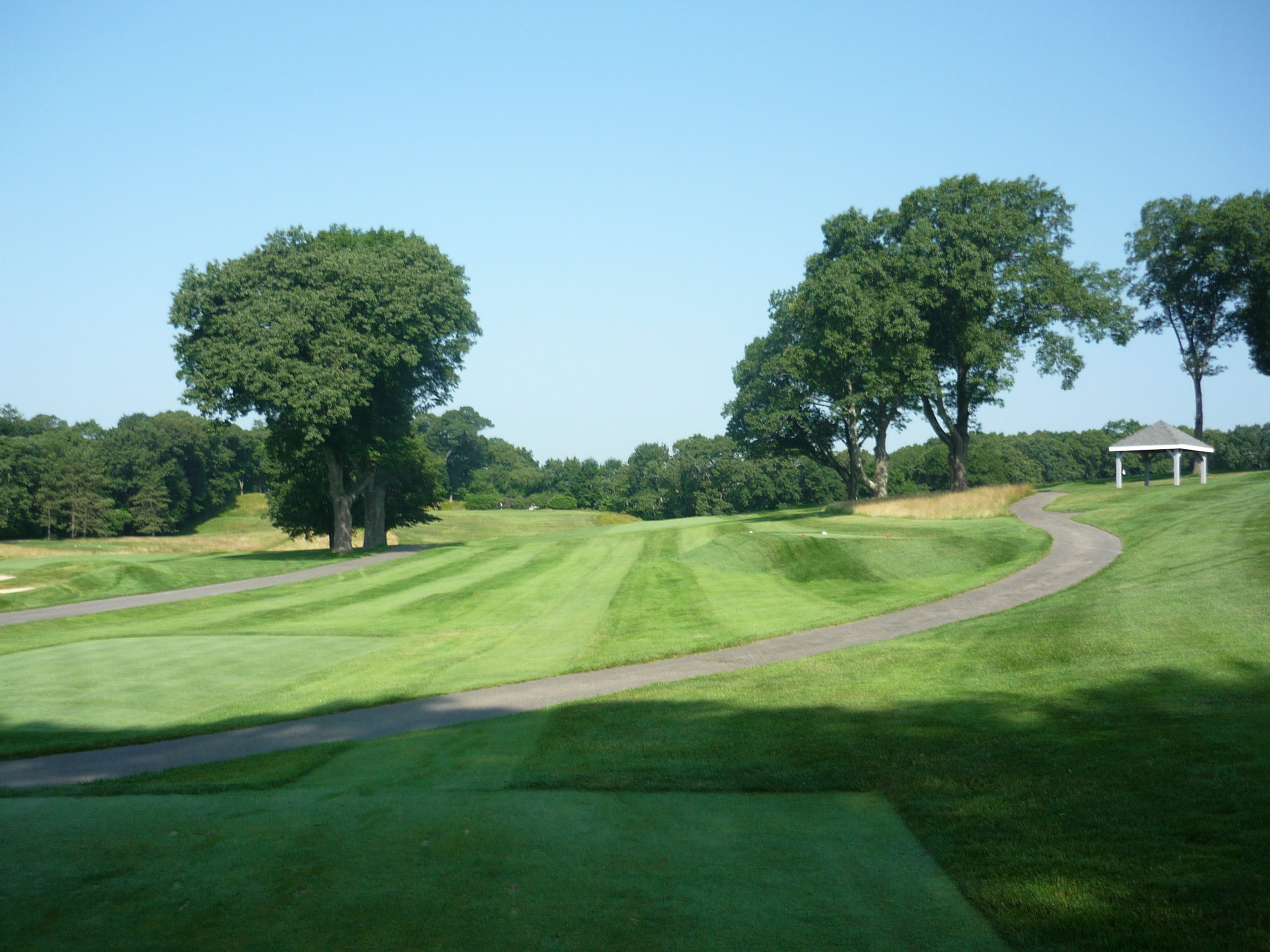
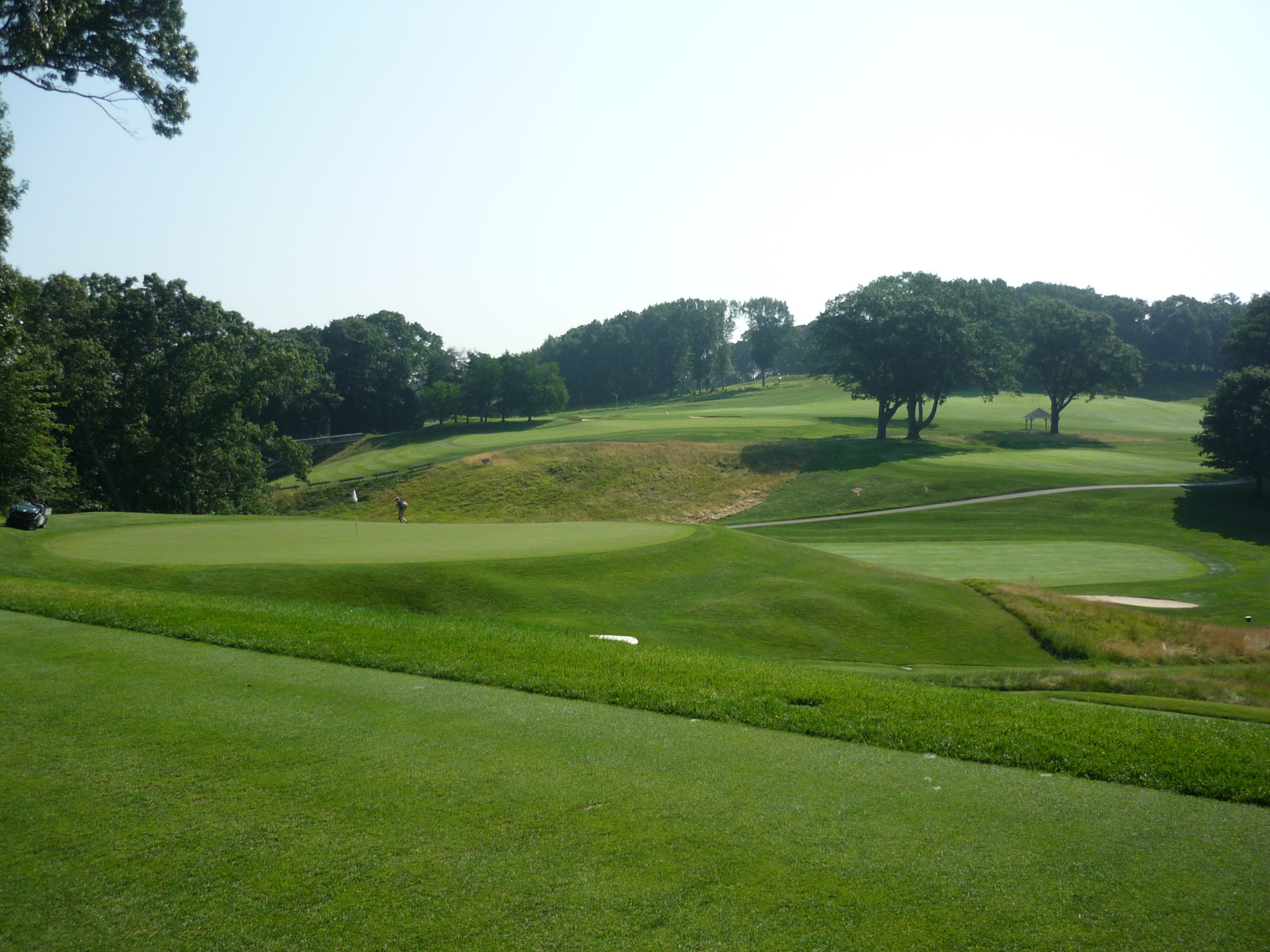
Hole 10 – 480 yards – Par 5
The entire hole unfolds before you from this tee. Bunkers on the left should be avoided in order to get home in two.
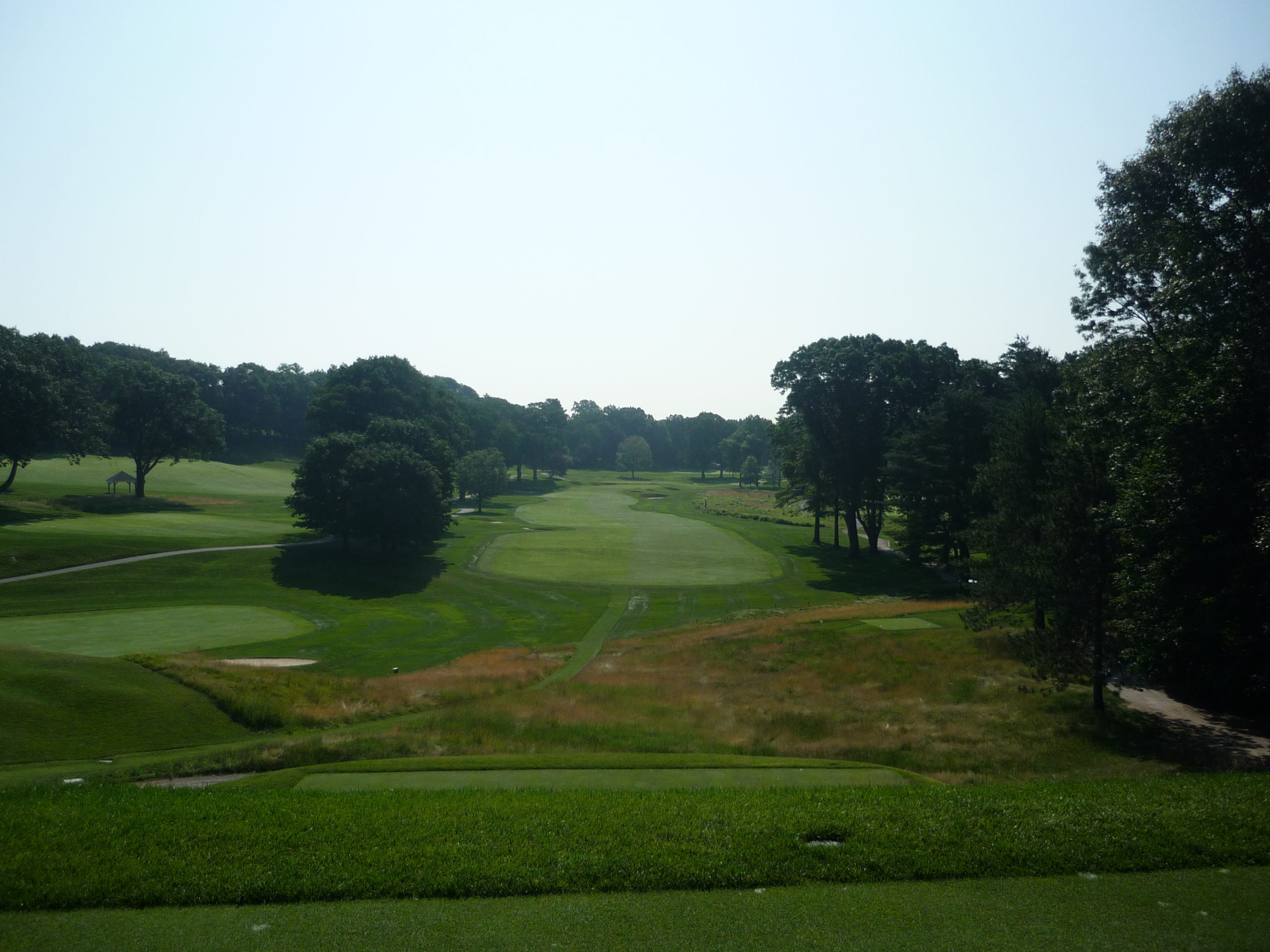
The flattest part of the fairway is about 100 yards from the green, so keep that in mind on your lay up.
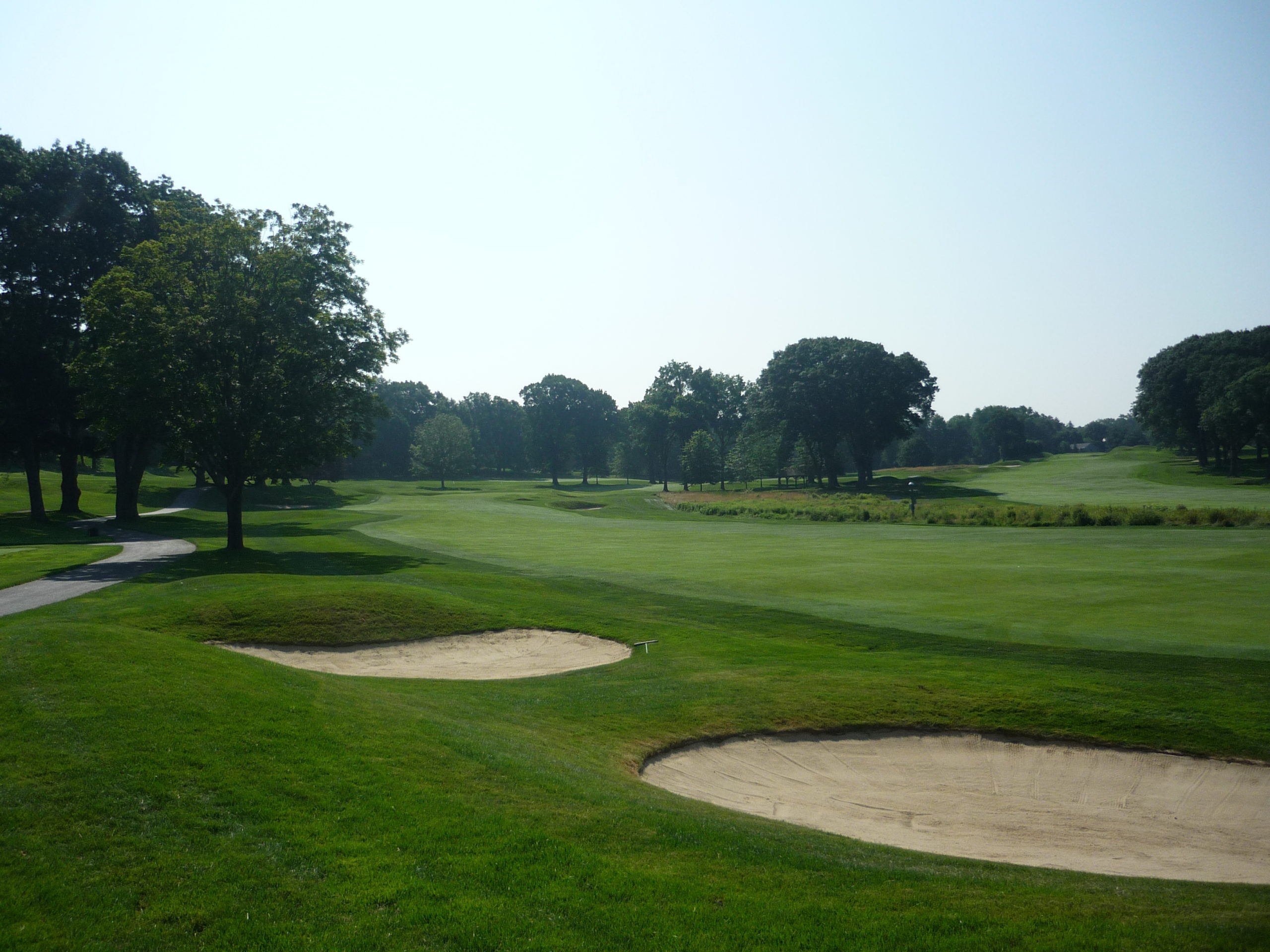
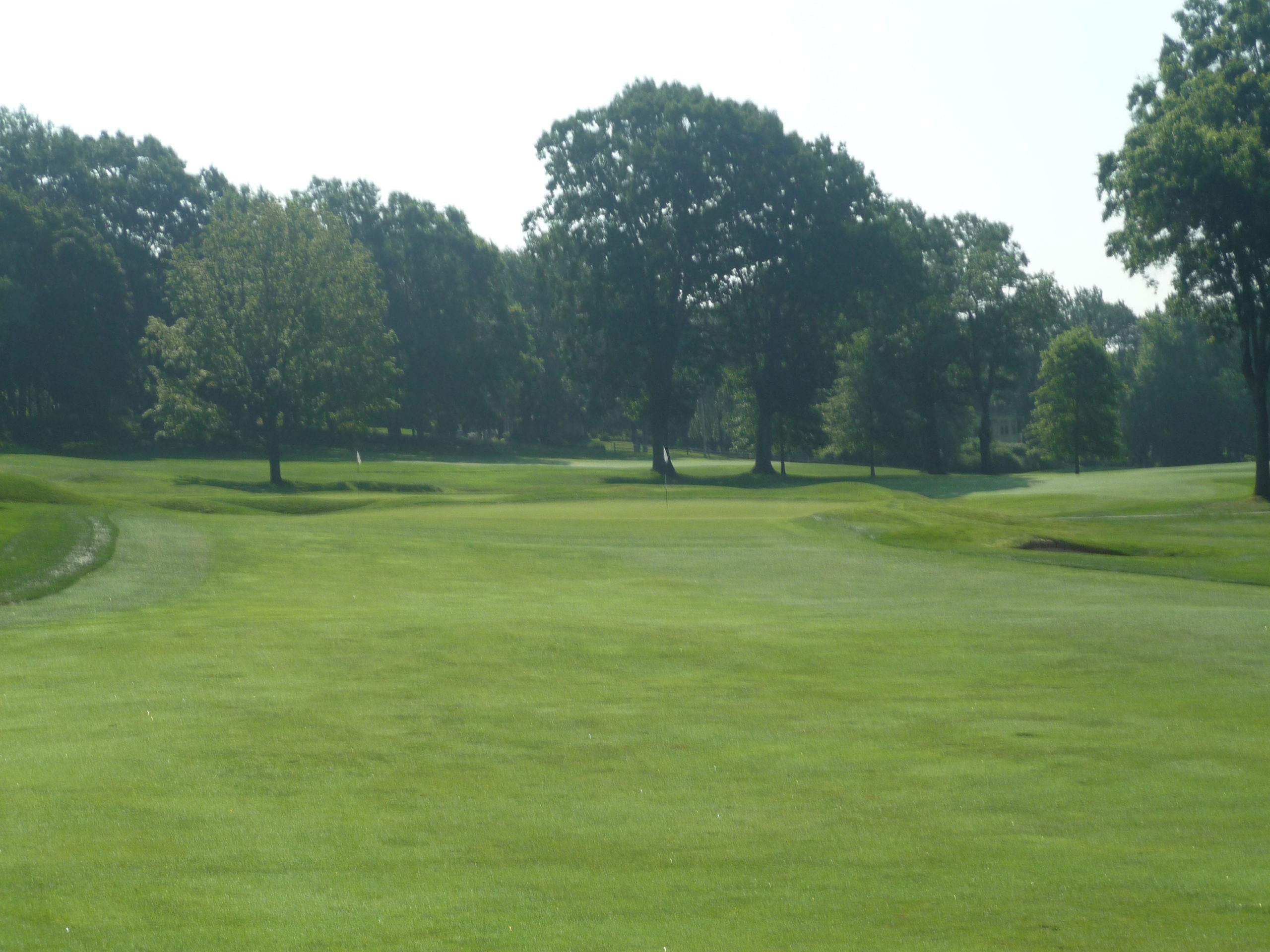
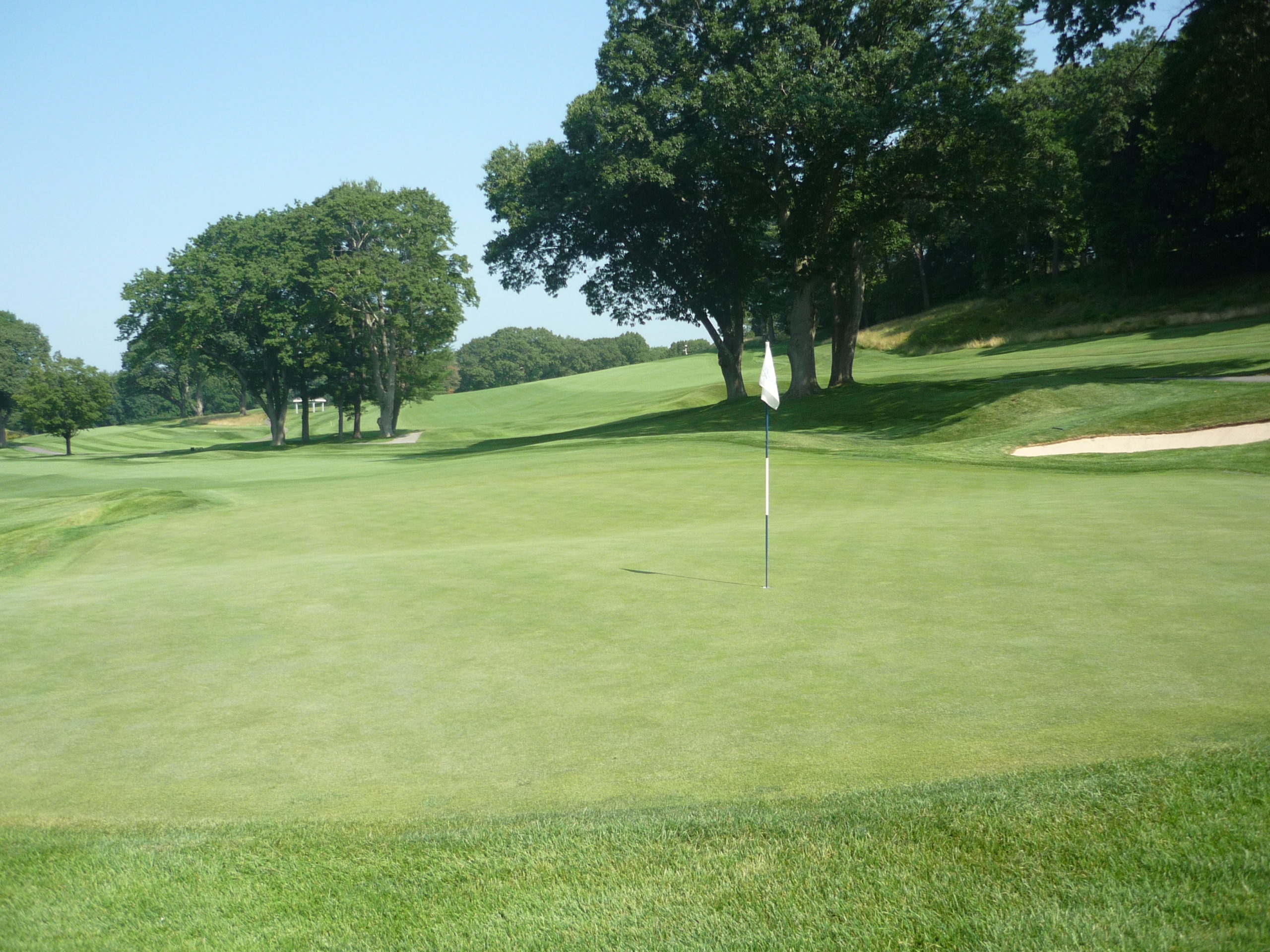
Hole 11 – 418 yards – Par 4
A difficult tee shot here is made tougher with out-of-bounds up the left side. If you flare your drive to the right, trees can block your path to the green.
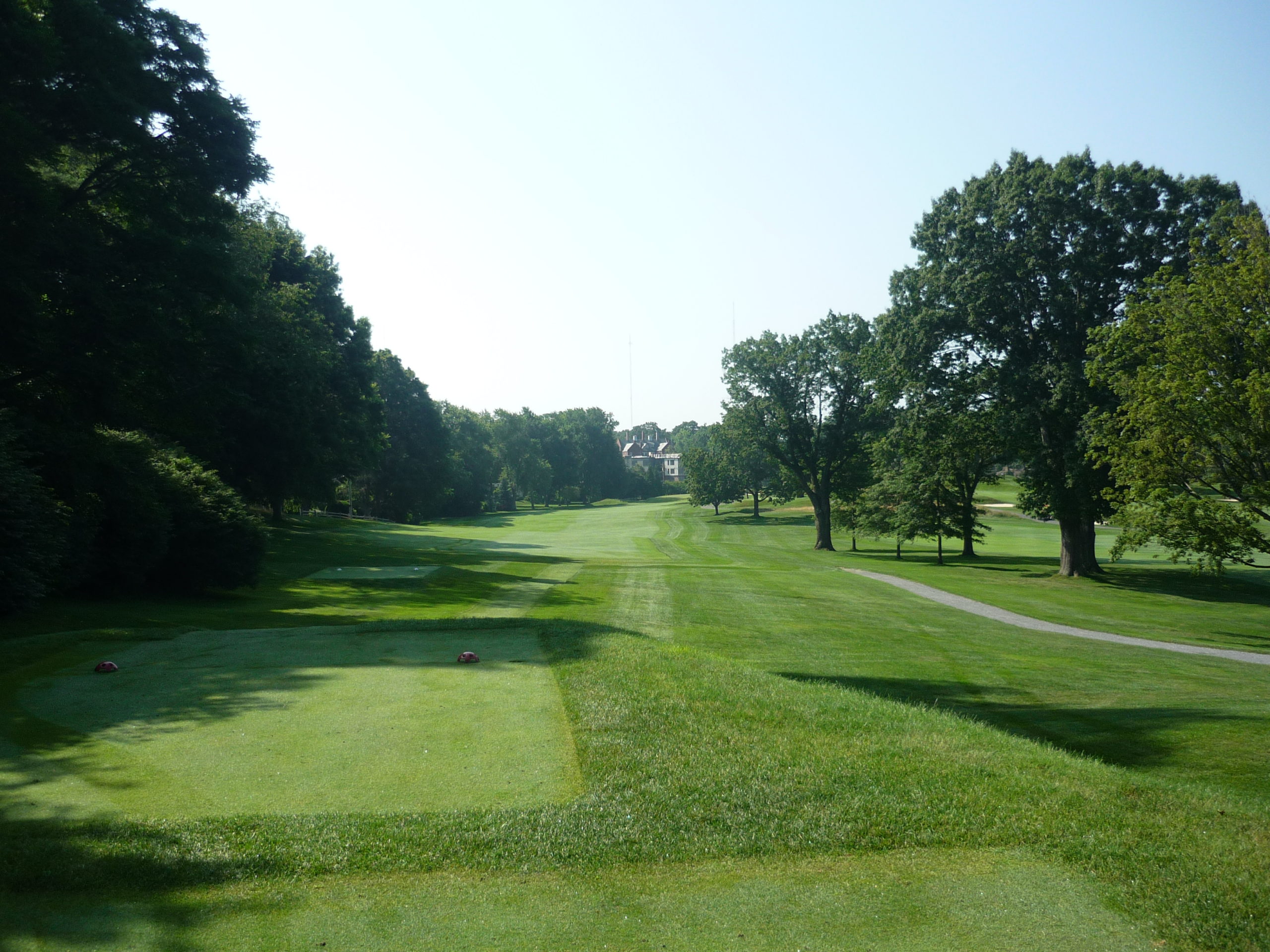
Don’t miss right due to the bunkers on that side.
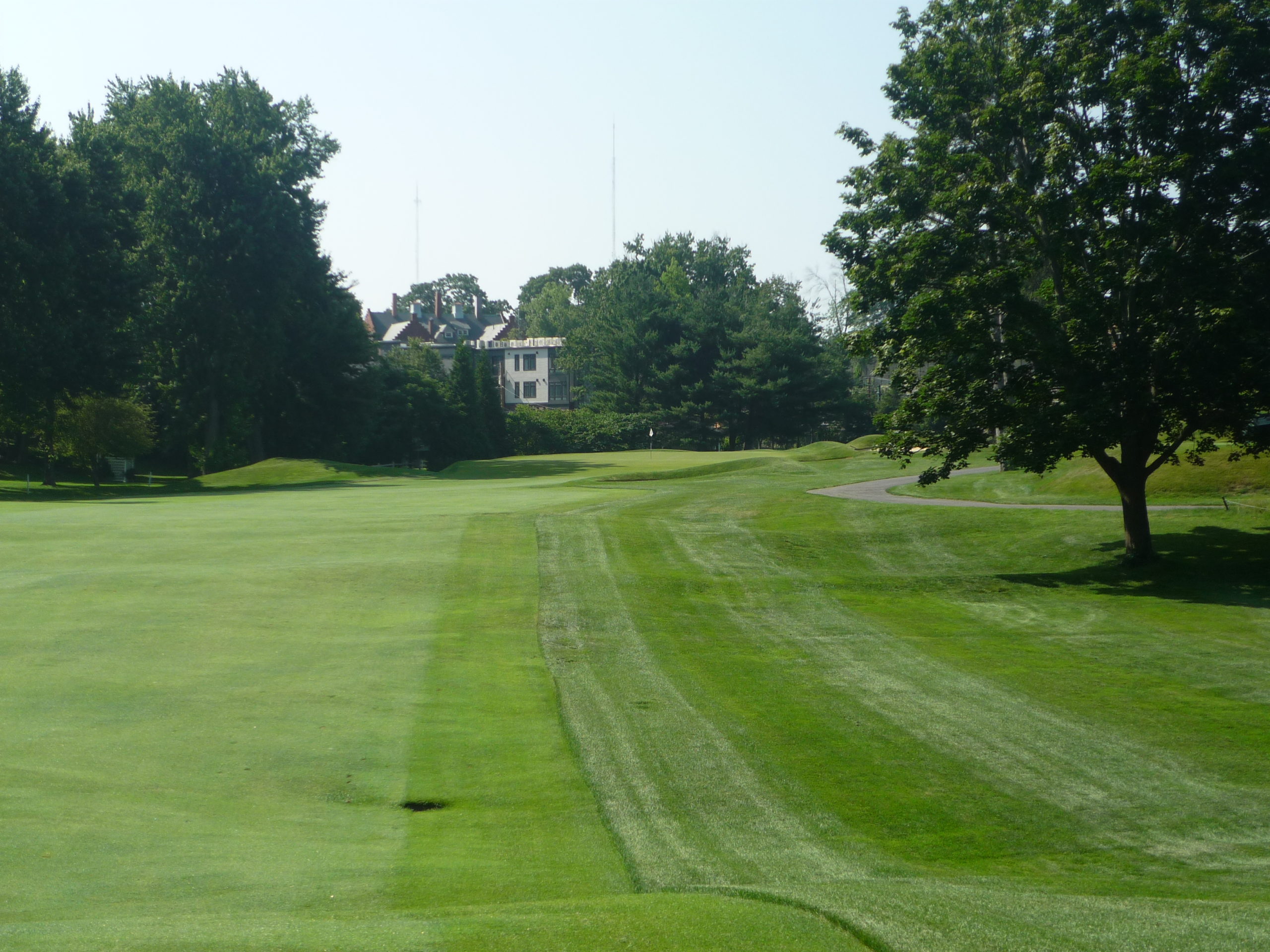
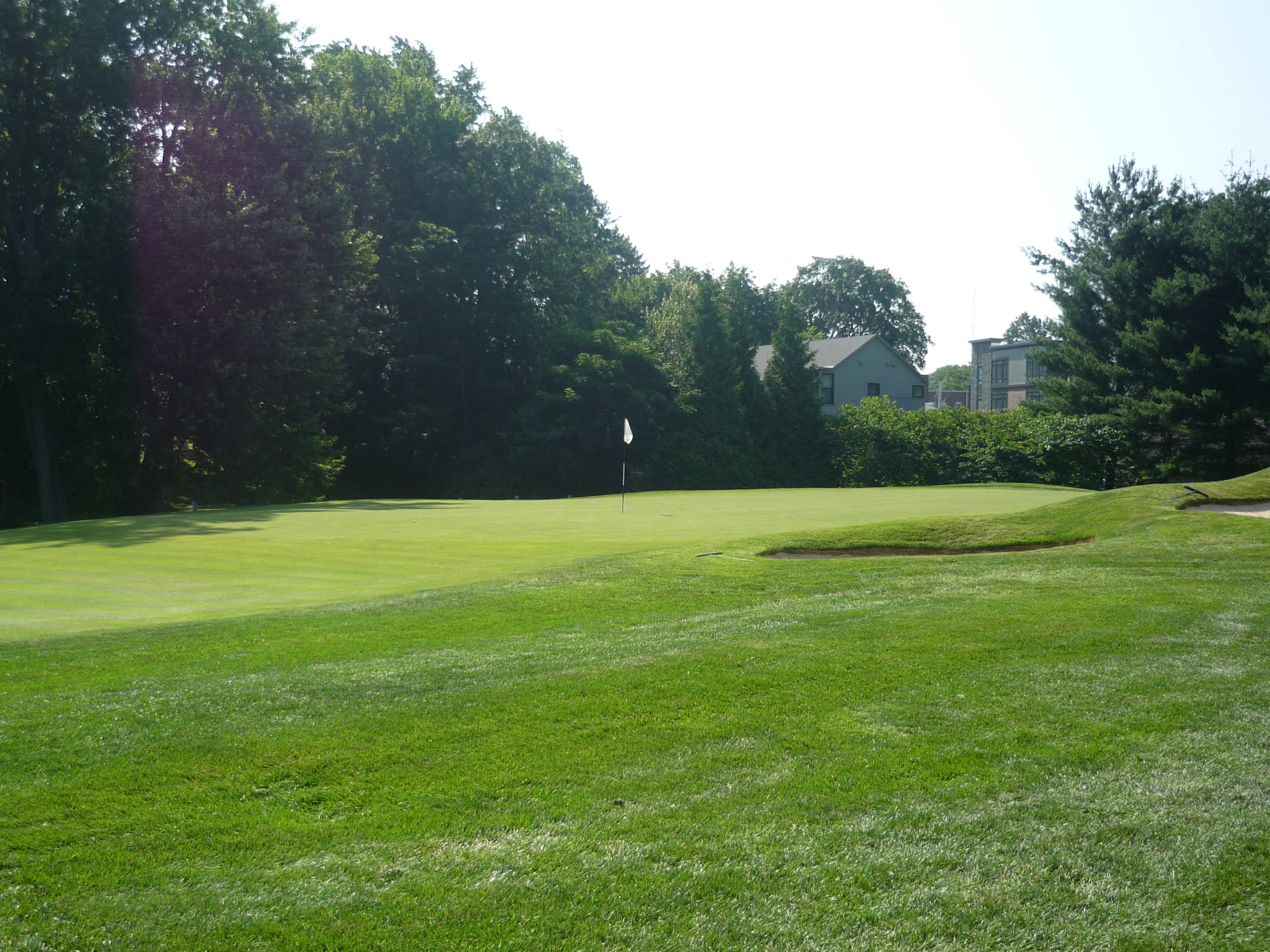
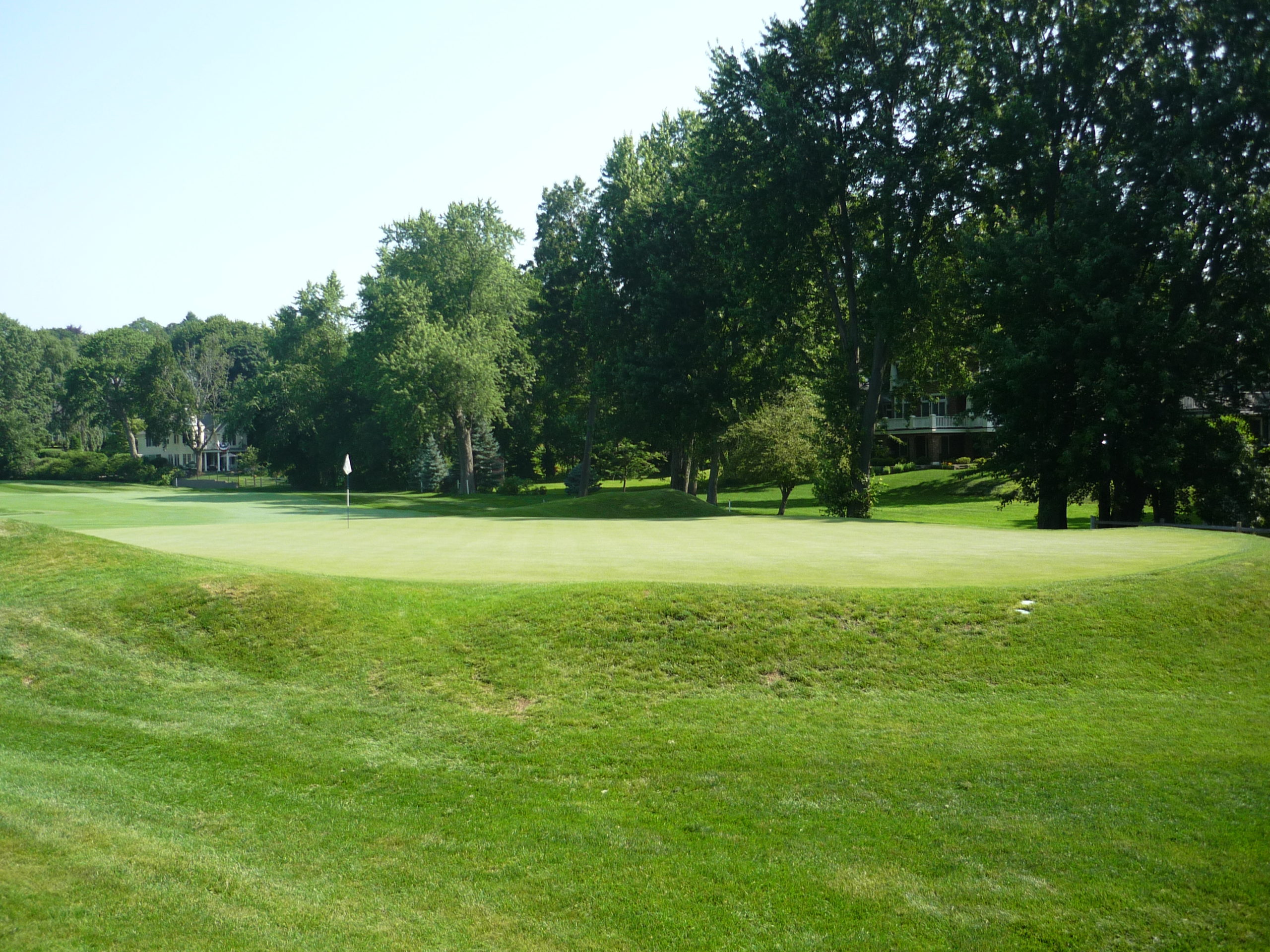
Hole 12 – 151 yards – Par 3
Deep bunkers guard this green that slopes back to front with a valley in the middle. Staying below the hole is a good strategy.
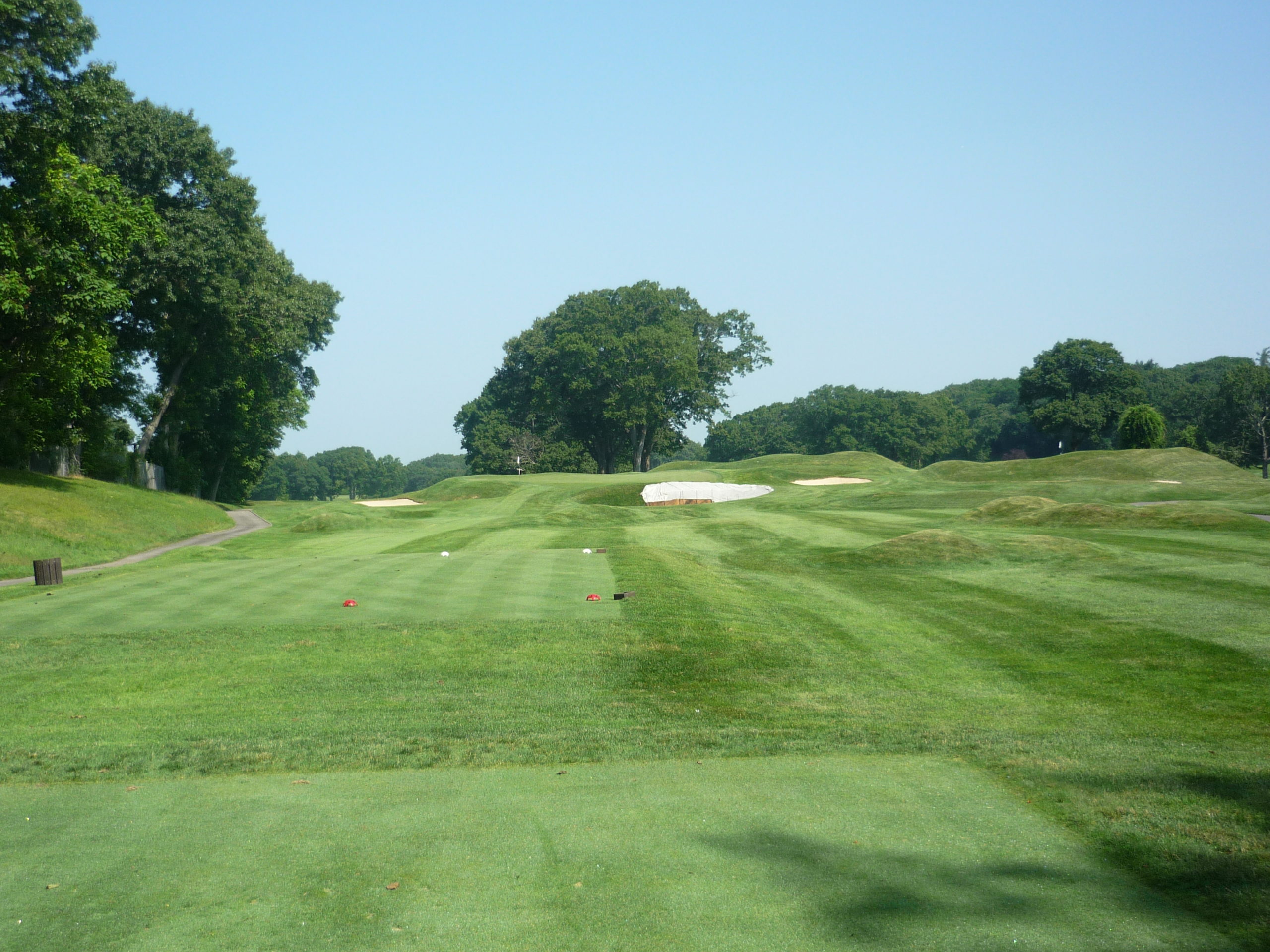
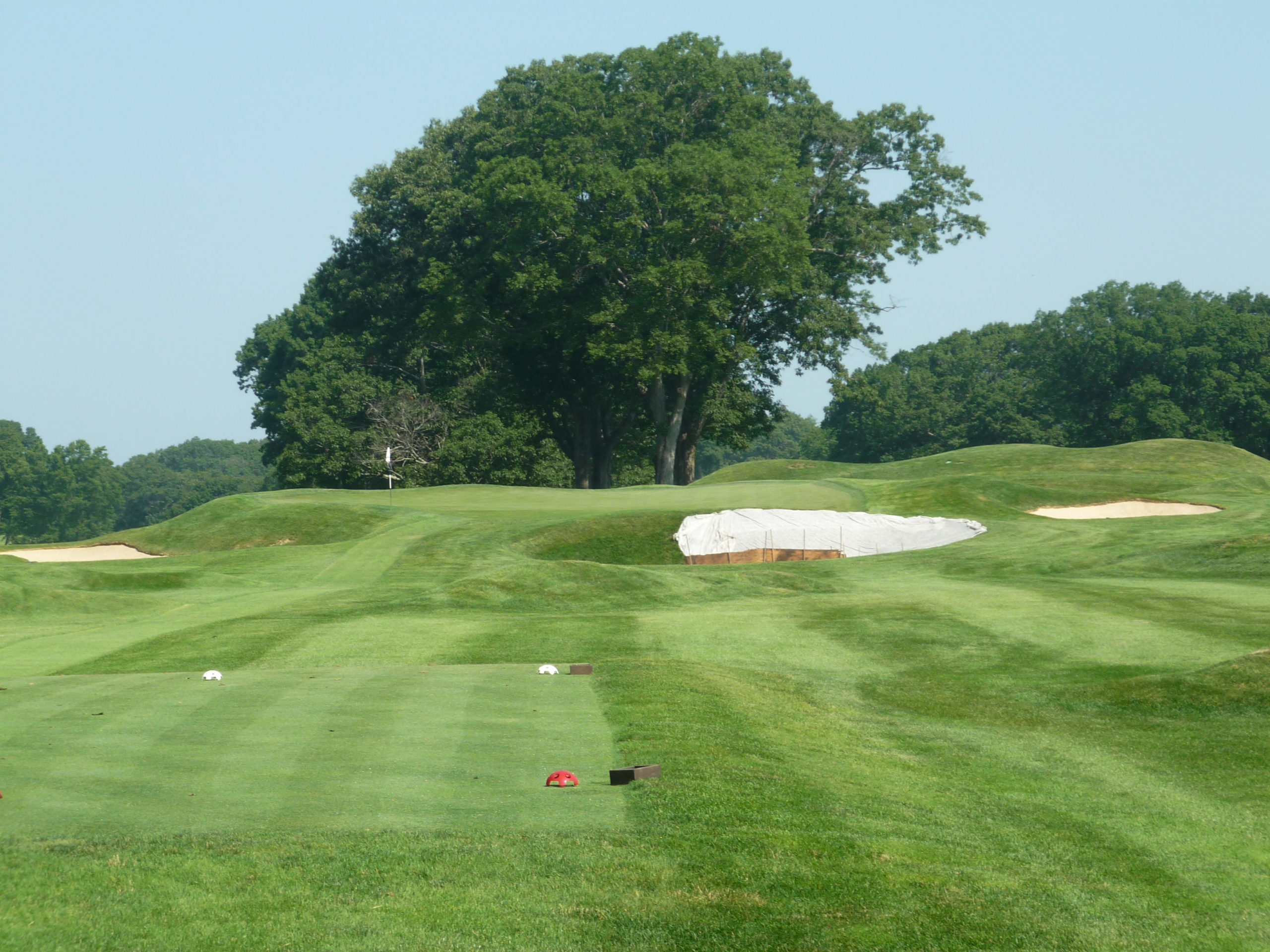
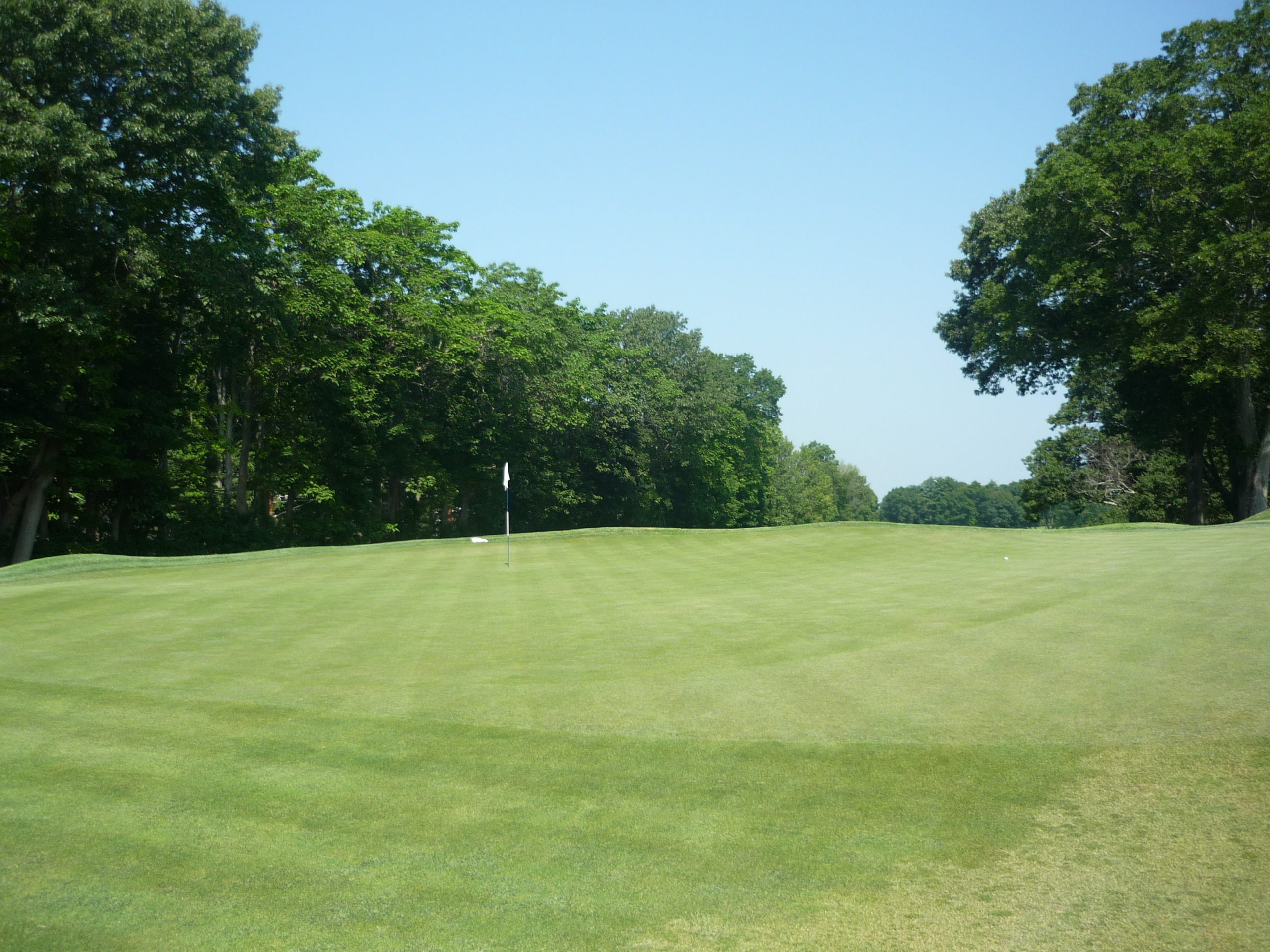
Hole 13 – 467 yards – Par 5
Trouble lurks on both sides of this hole. To the left is out-of-bounds while rough and a stream waits on the right. If you lay up, leave it about 80 yards out to avoid the bunkering short of the green.
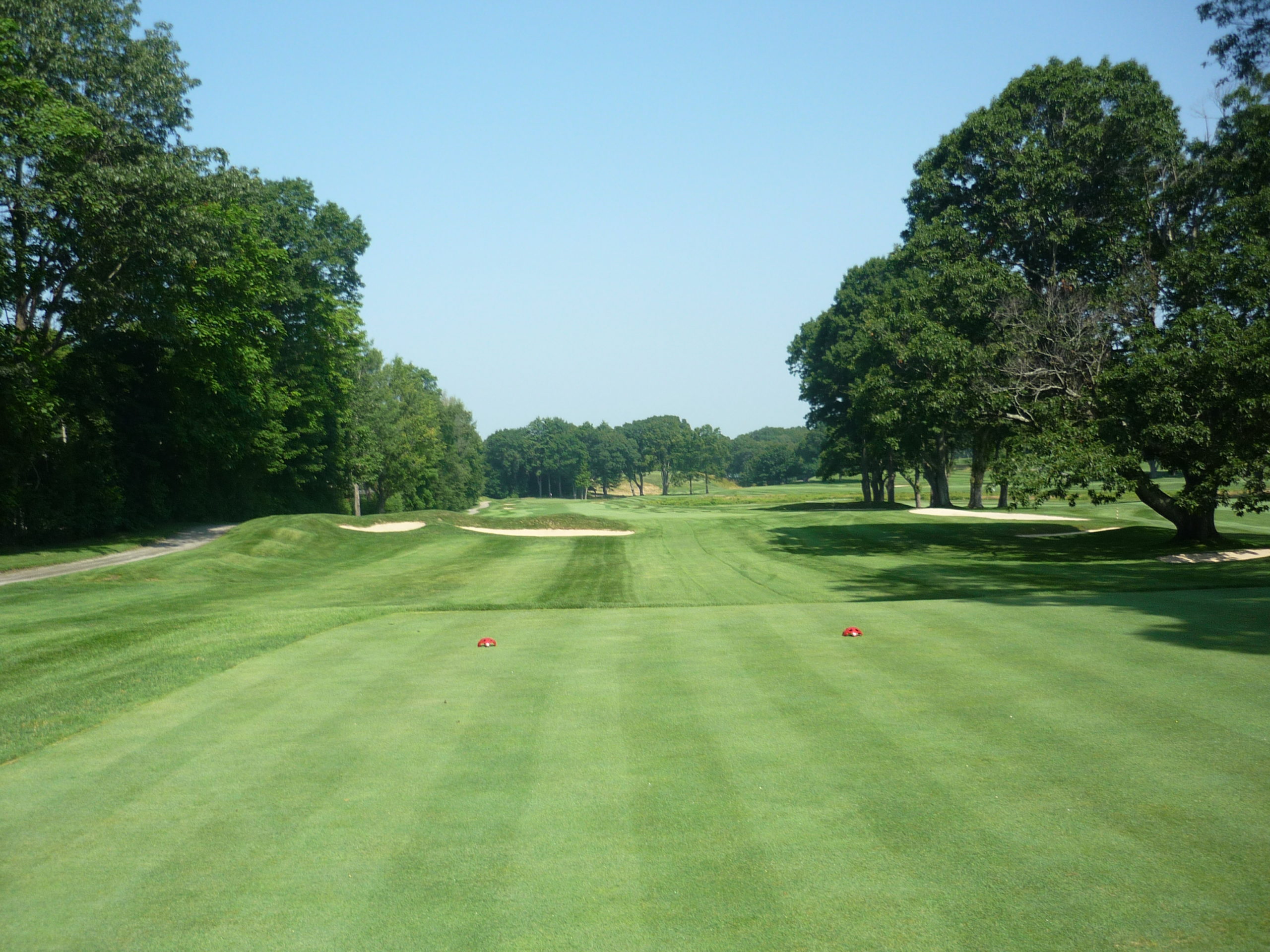
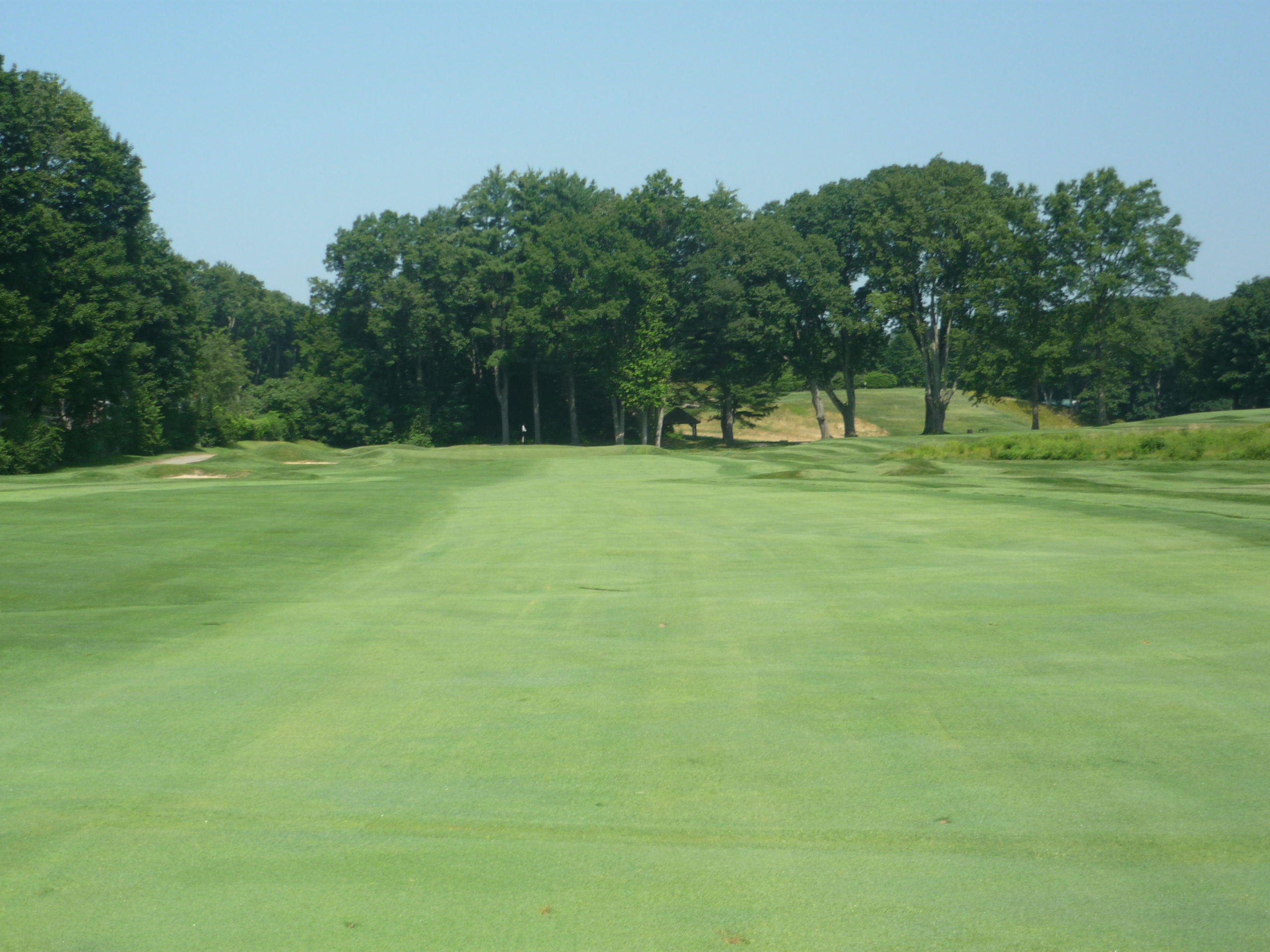
Below is the bunkering I mentioned. You can also get an idea of the fairway contouring short of the green.
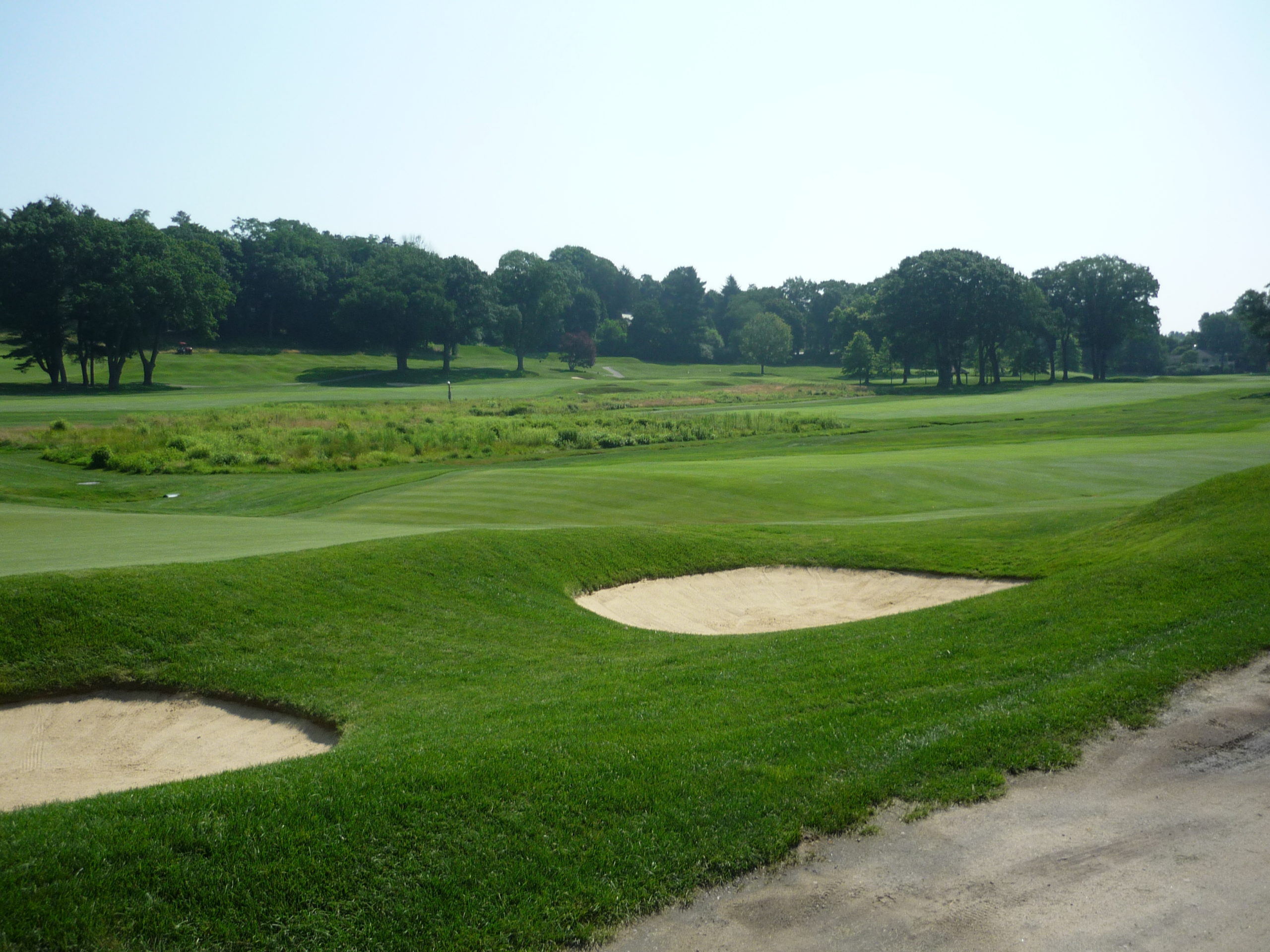
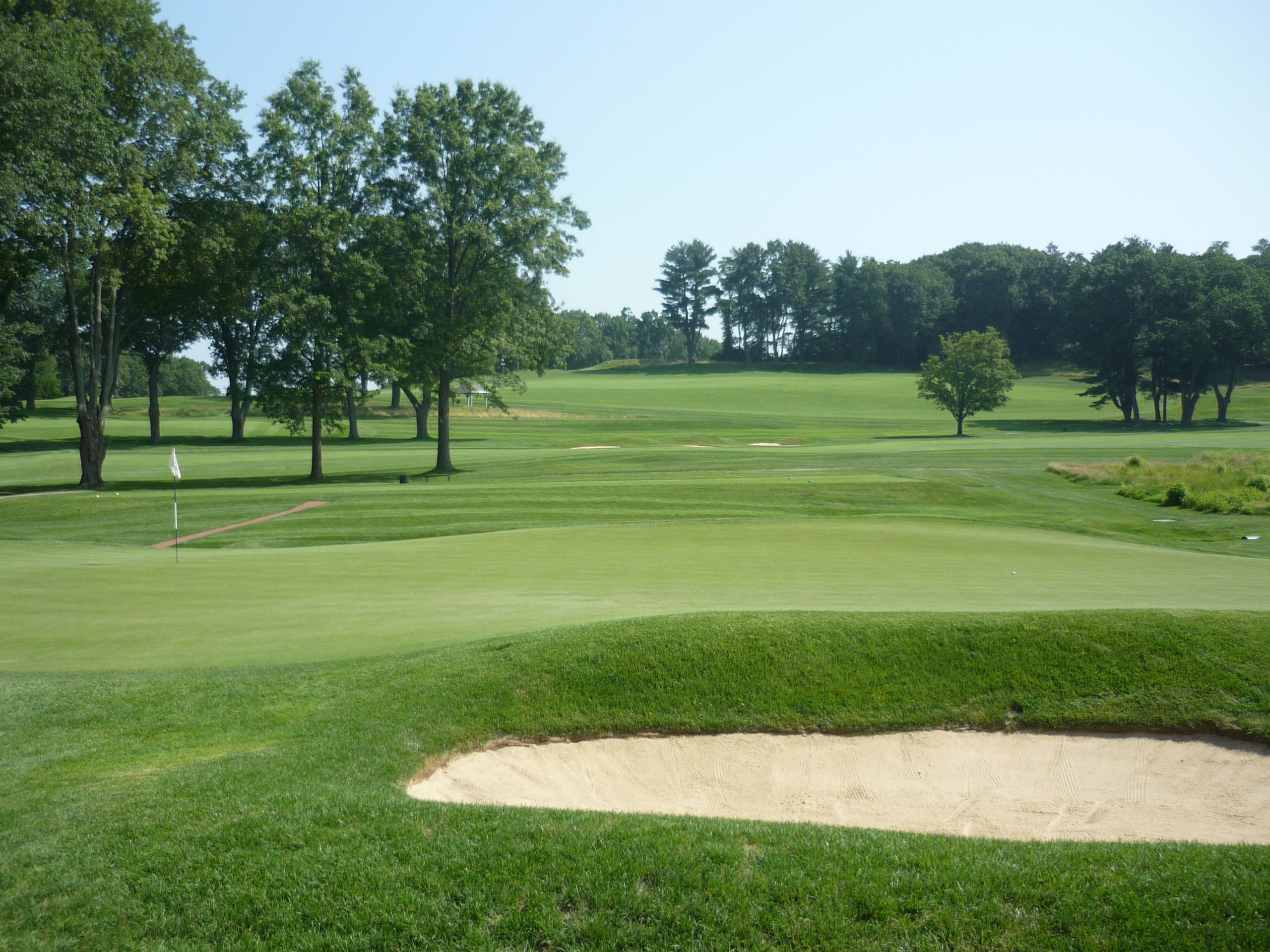
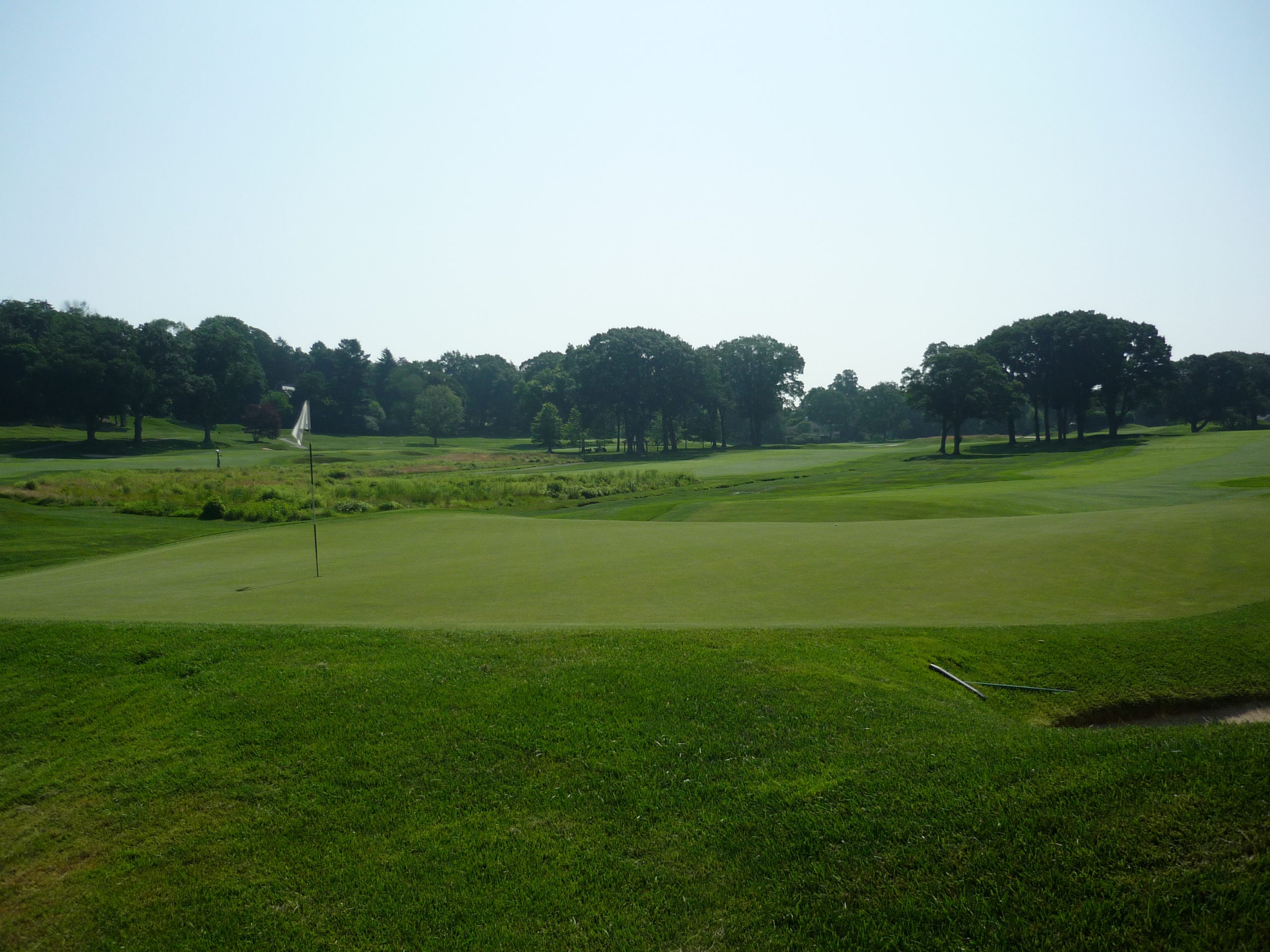
Hole 14 – 535 yards – Par 5
This is going to be a three-shot hole for most players. The fairway is fairly generous for the tee shot before it narrows for the second shot.
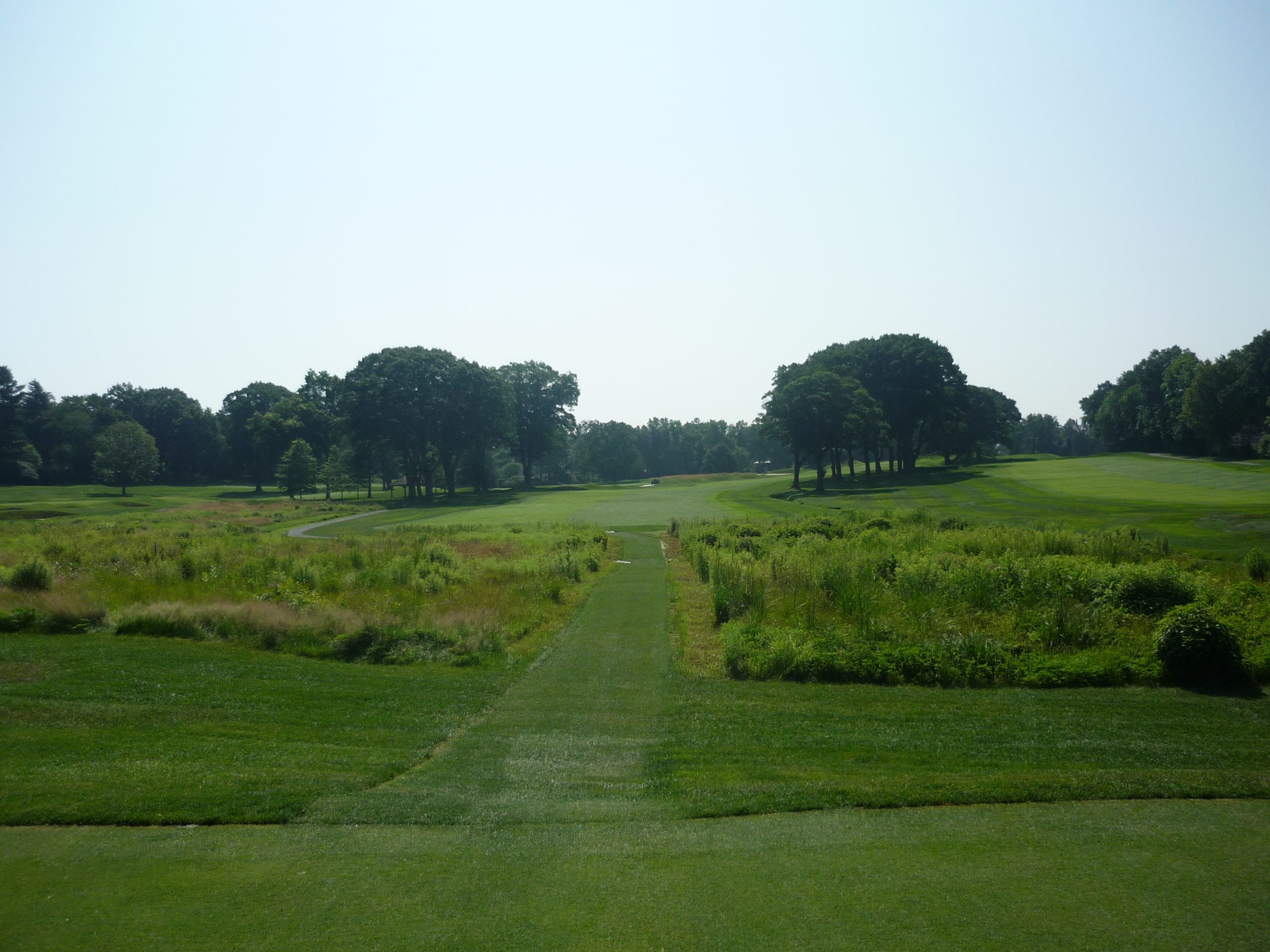
Prominent mounds and bunkers dot the landscape as you progress to the green. You’ll definitely want to stay out of those.
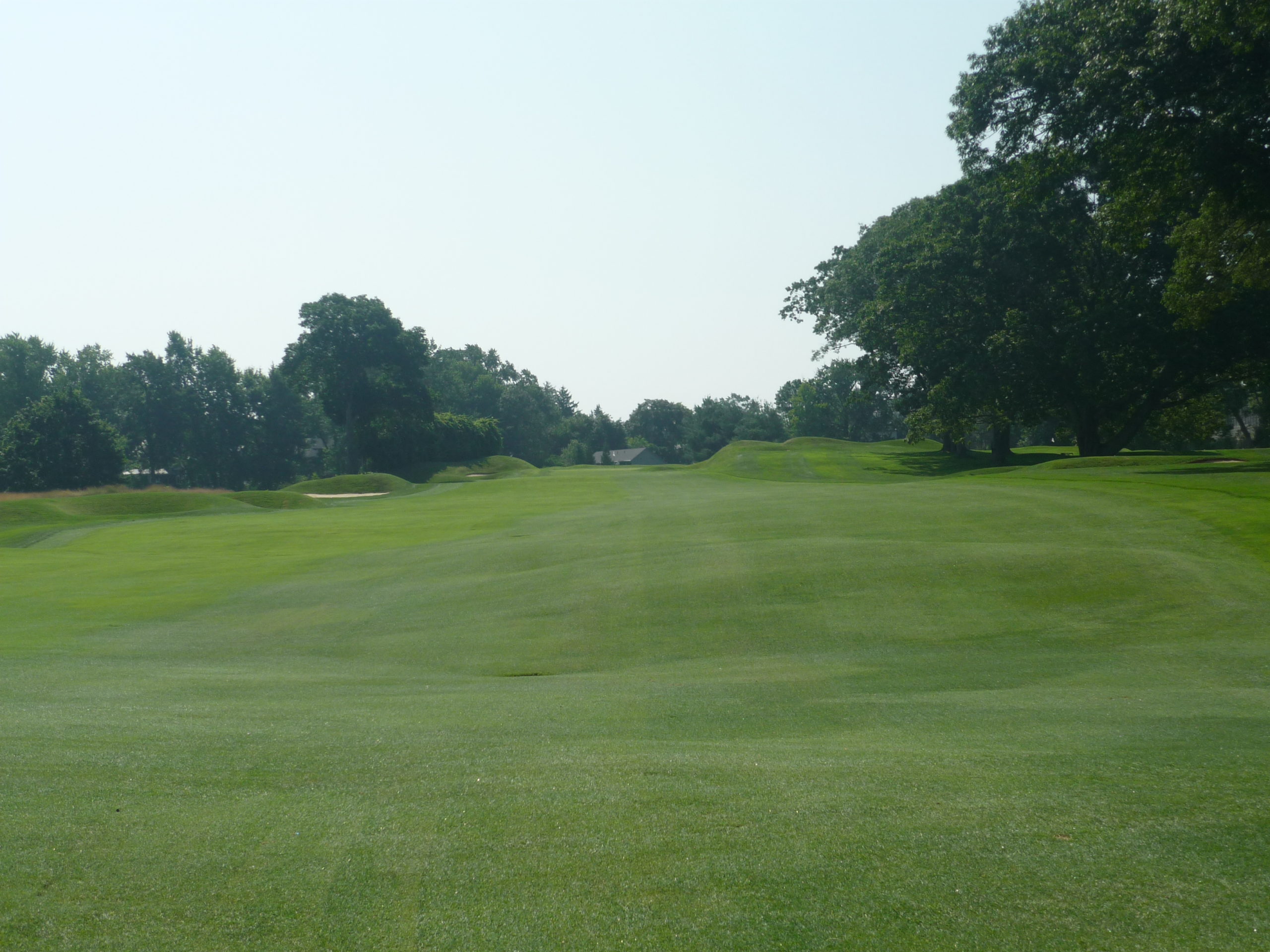
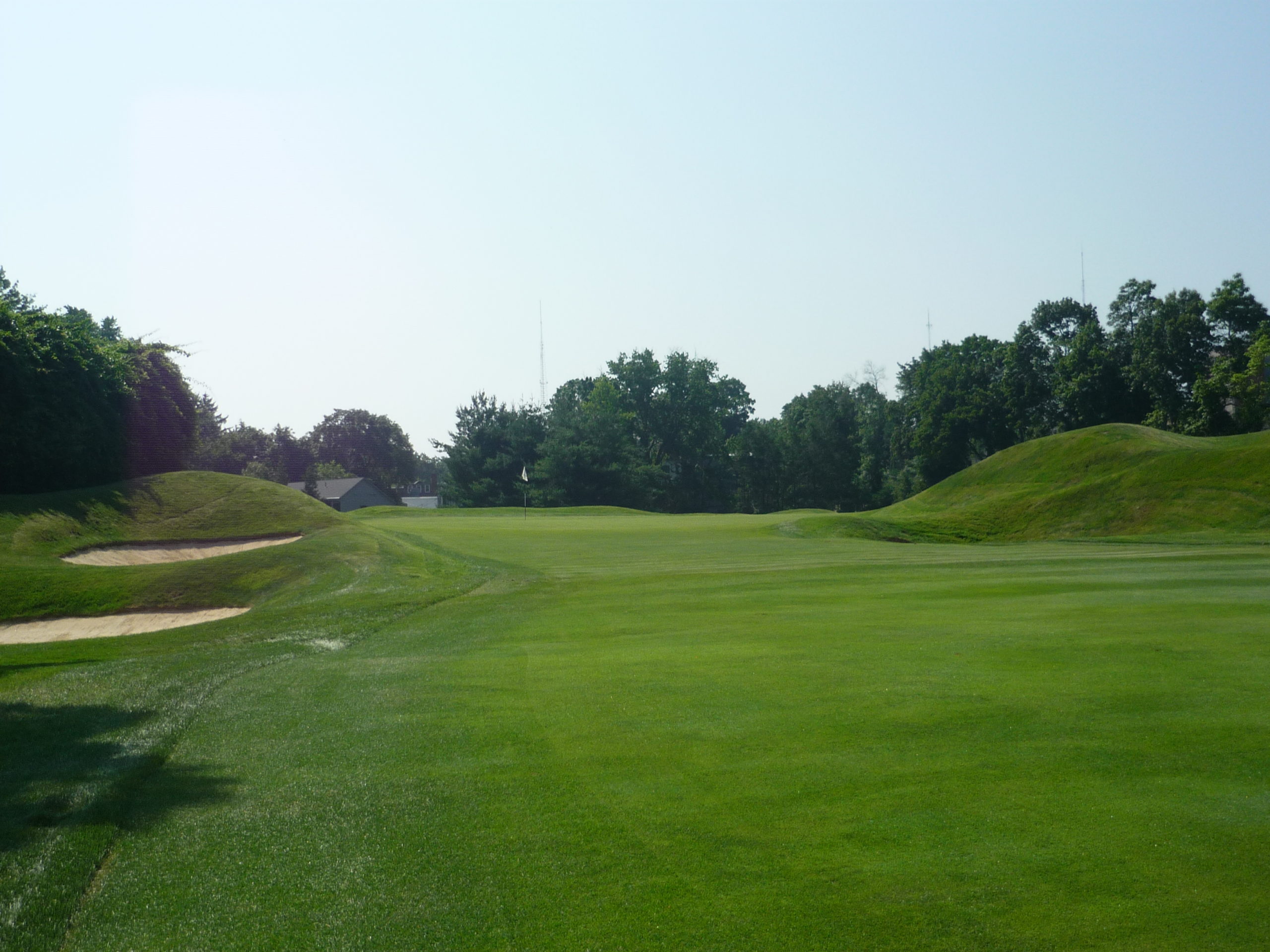
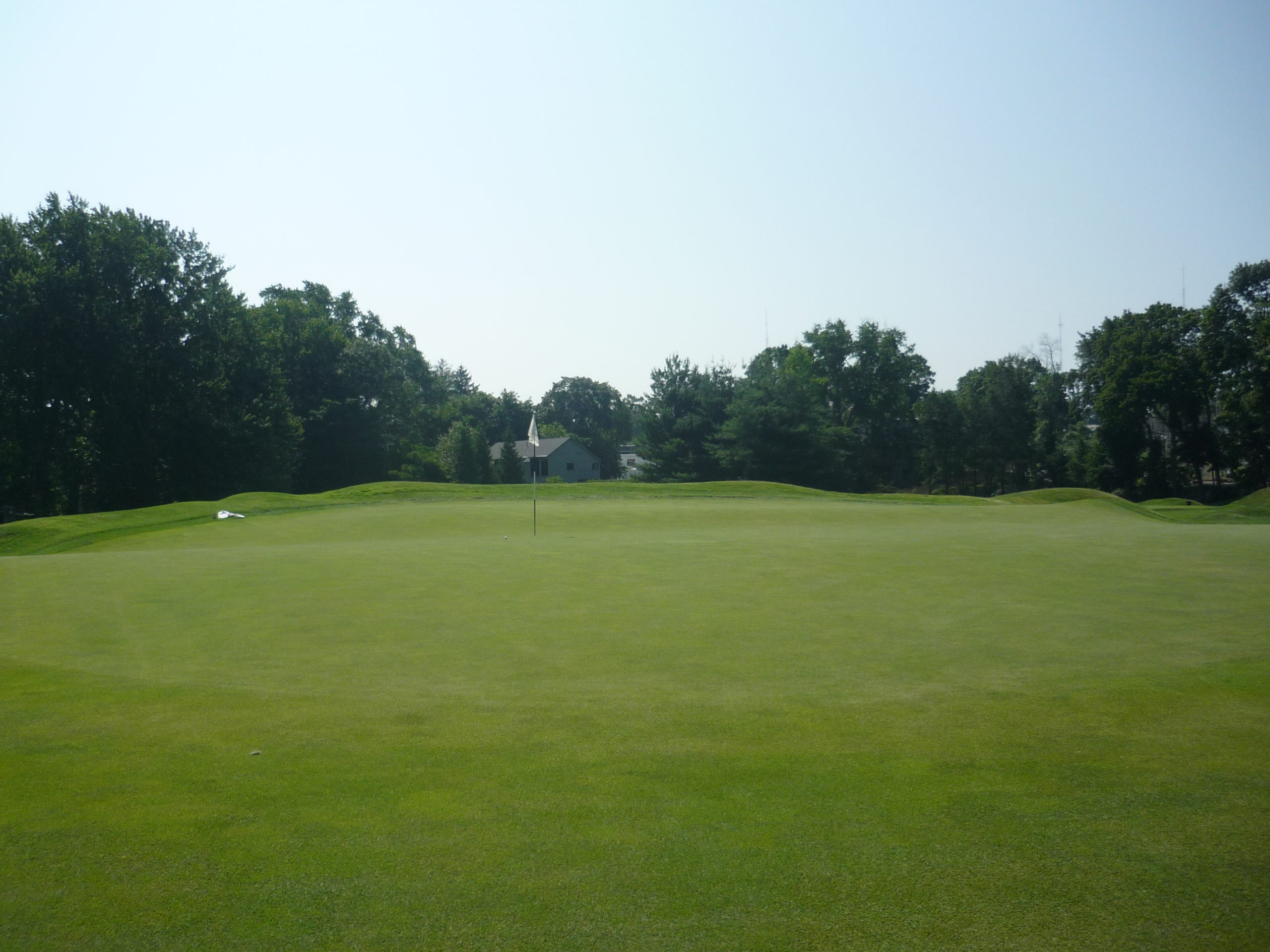
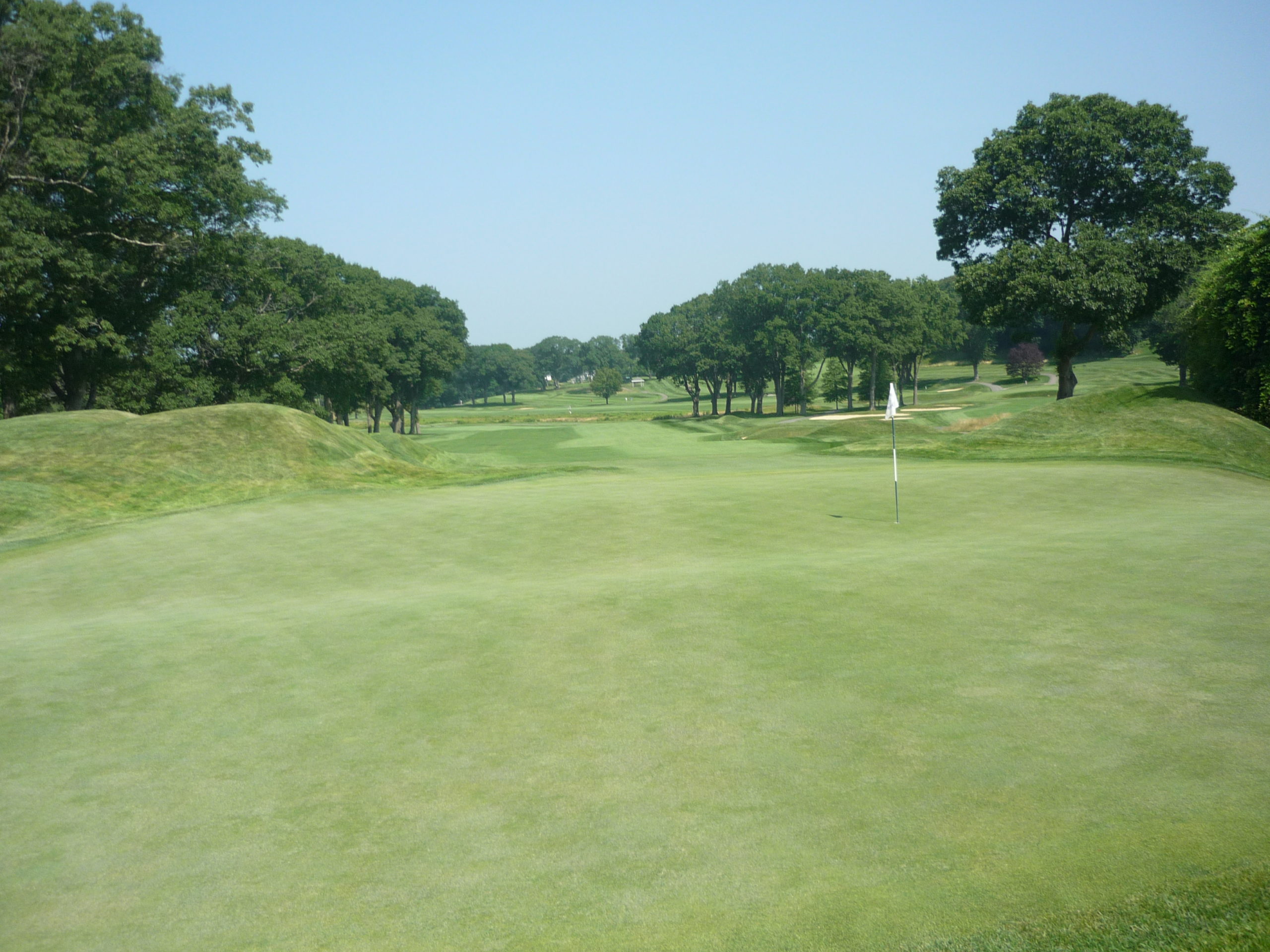
Hole 15 – 295 yards – Par 4
To get the best angle for your approach, the left side is preferred but unsurprisingly there are bunkers waiting there if you overdo it.
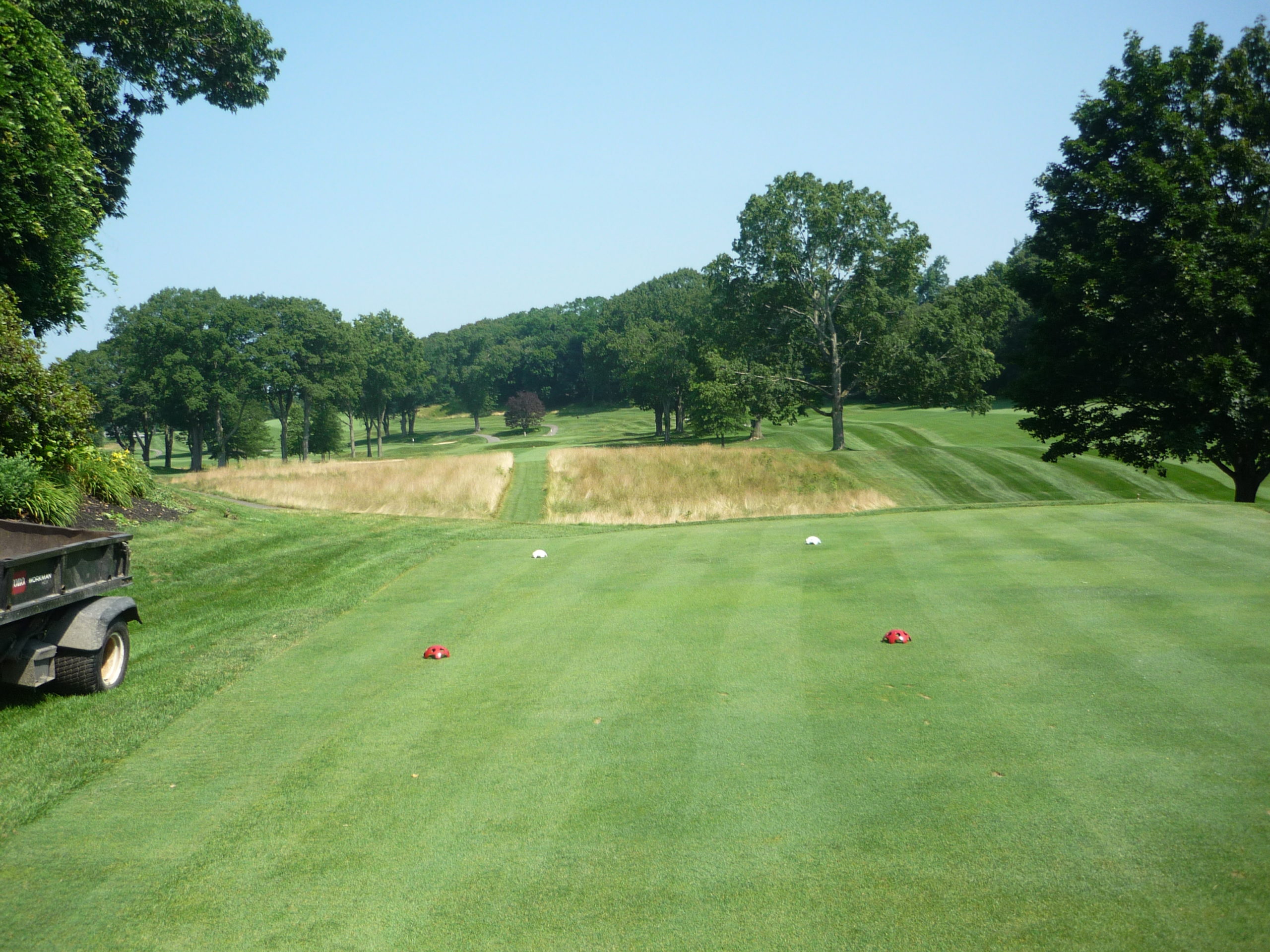
Deep bunkers guard the green as well.
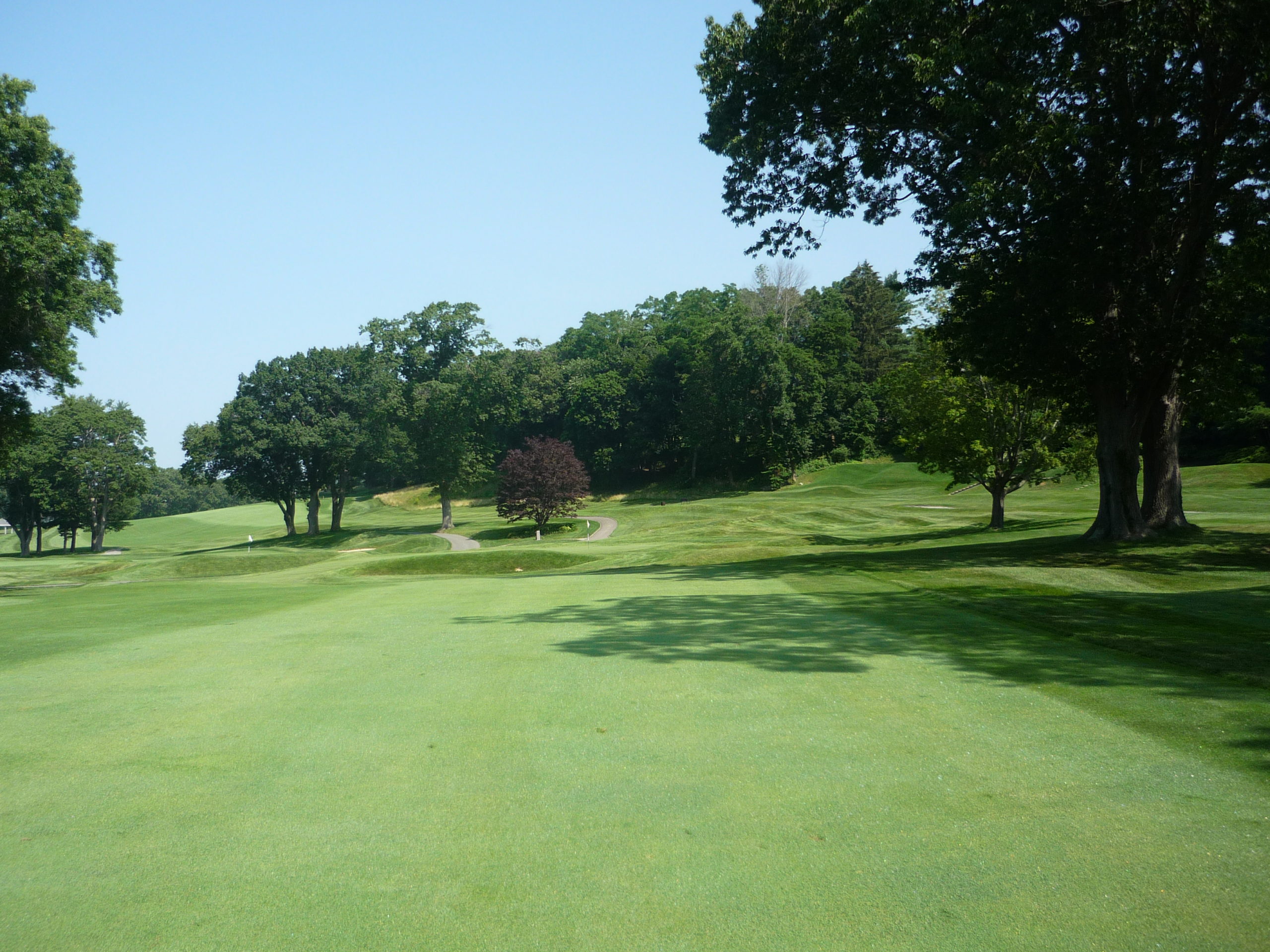
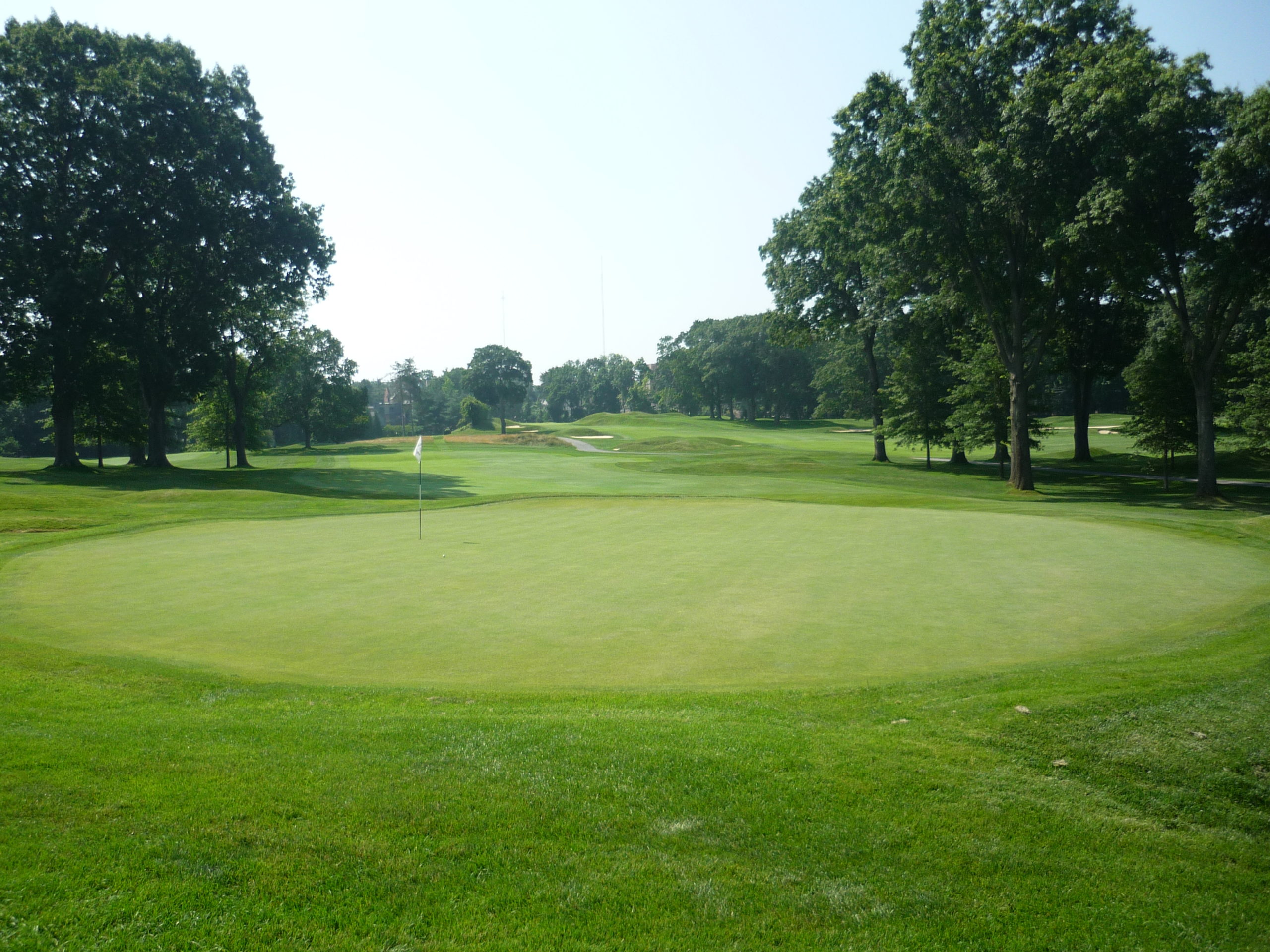
Hole 16 – 351 yards – Par 4
The first thing you notice here is the sharp sloping of the fairway. Then you might wonder where the green is and no, it is not the one you can see off to the left. The green is hidden off to the right. Drives should be played up the right side to hold the fairway.
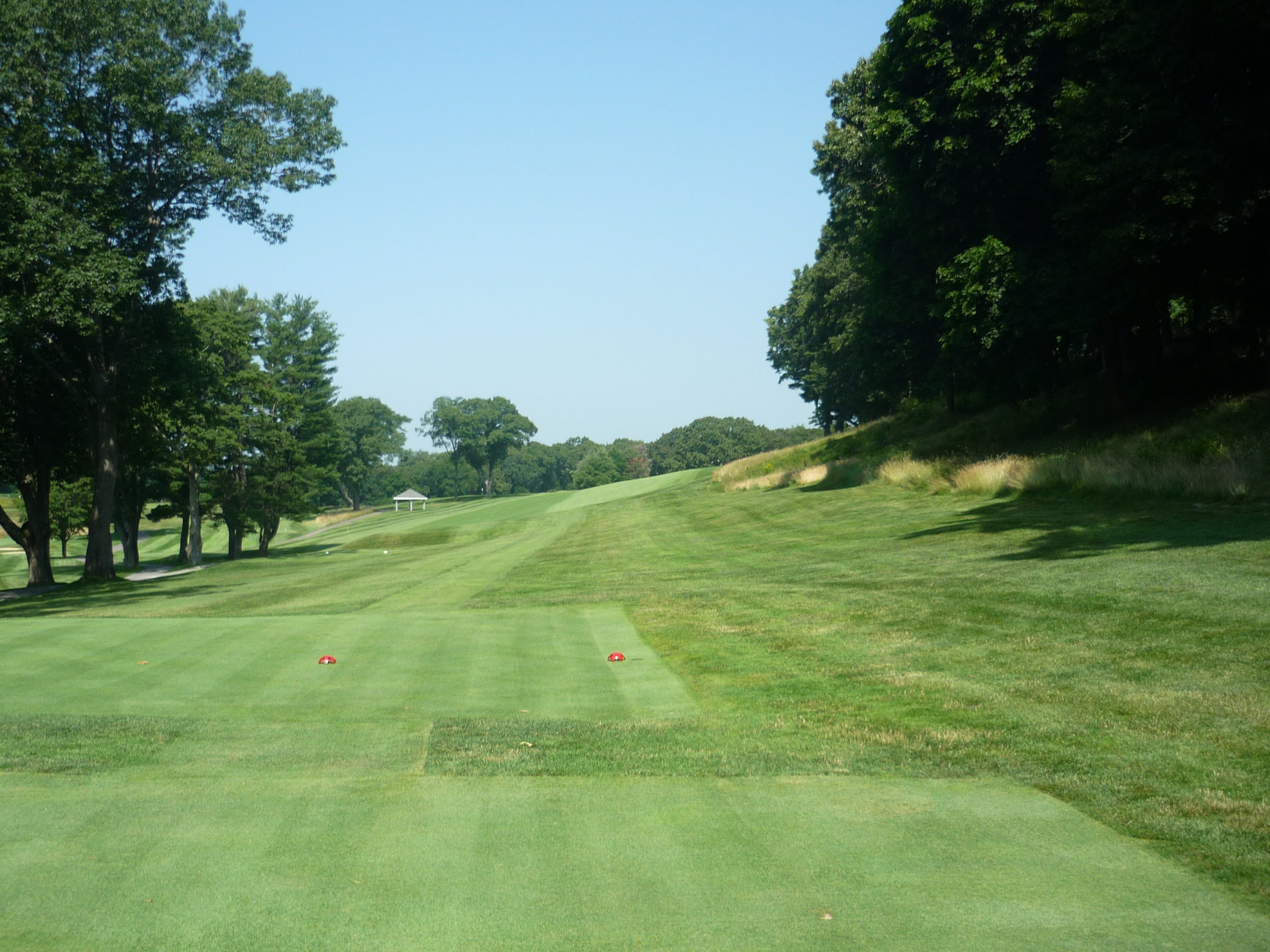
The fairway drops as it goes proceeds to a green that is open in front.
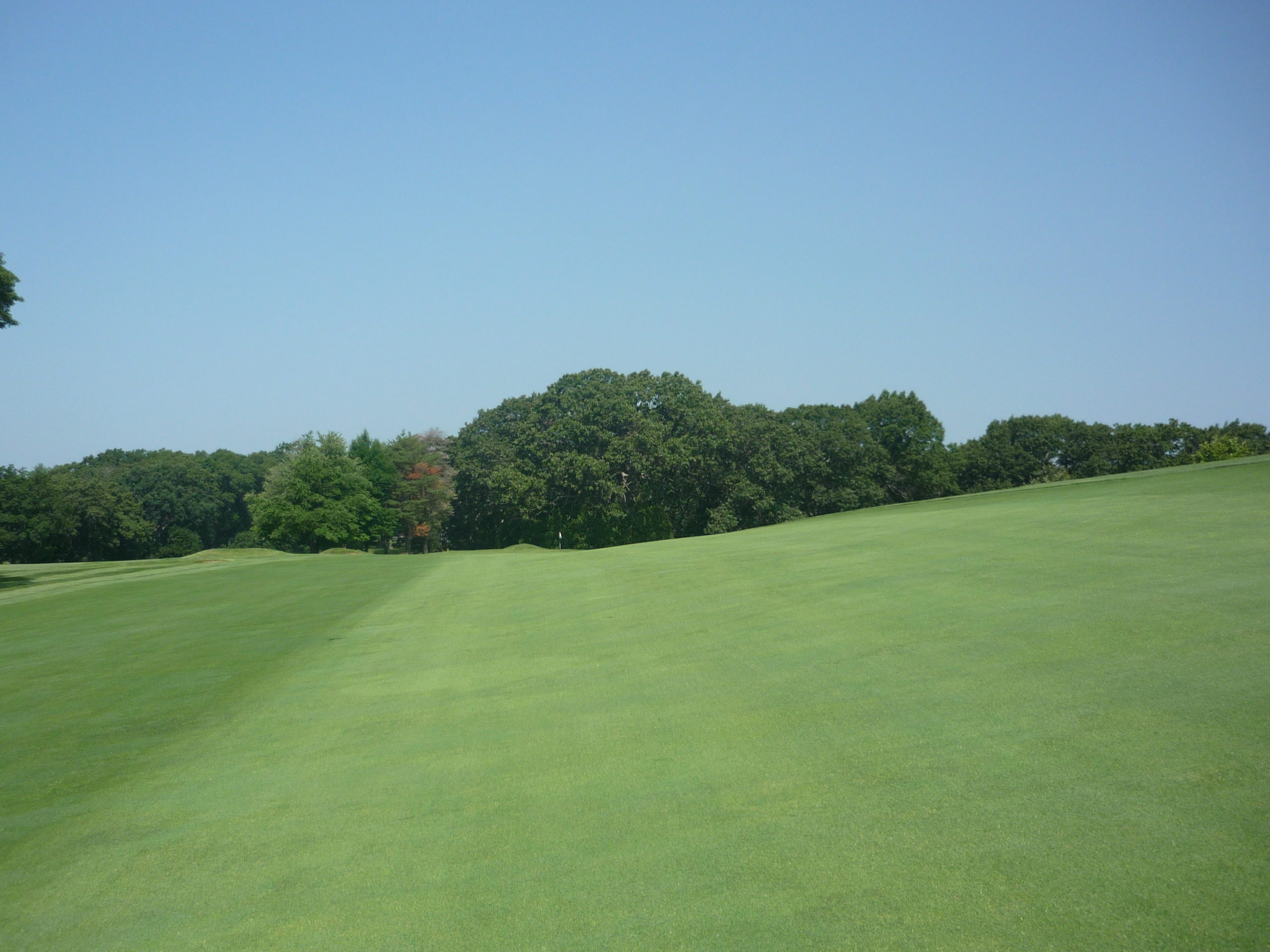
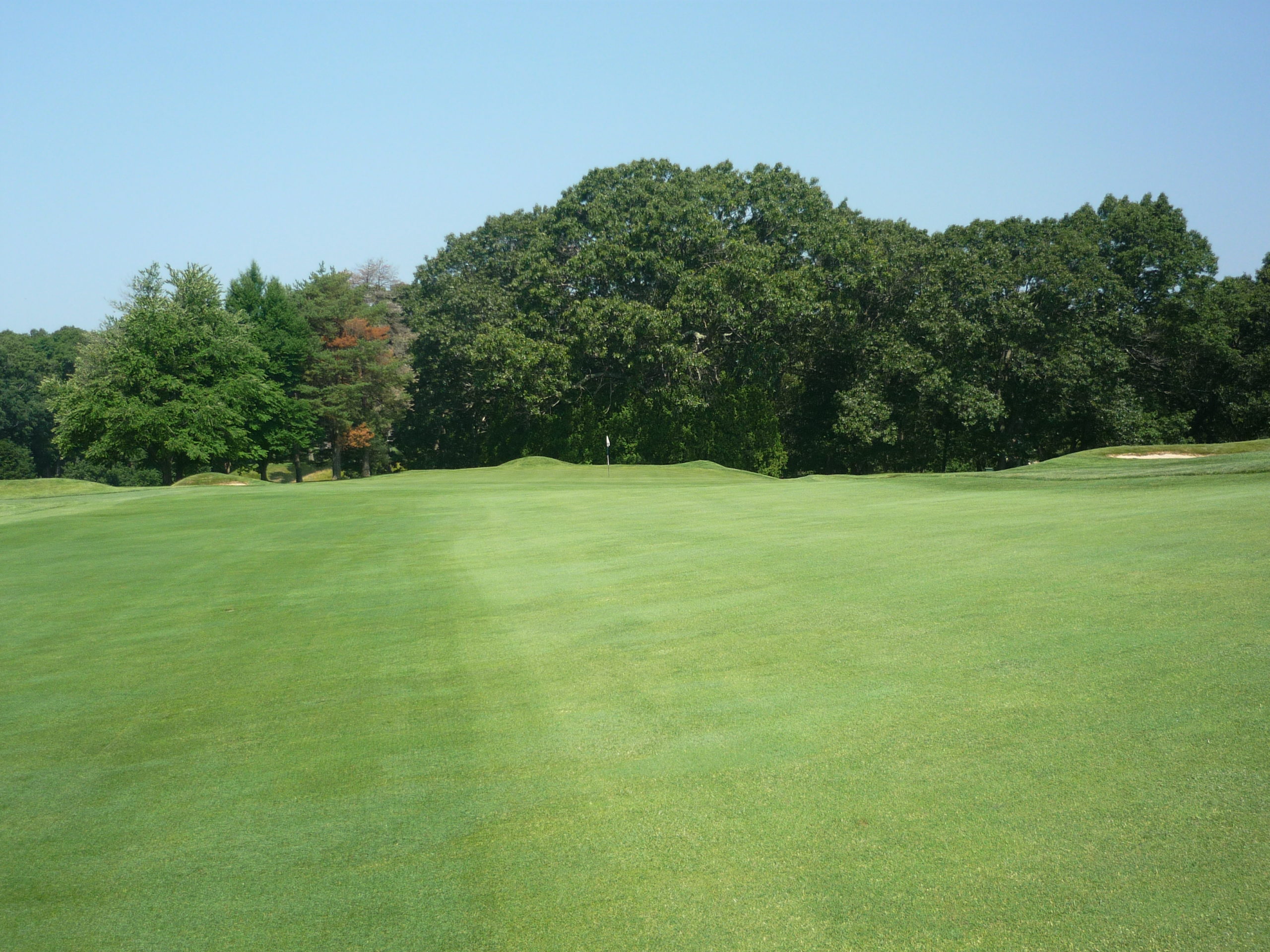
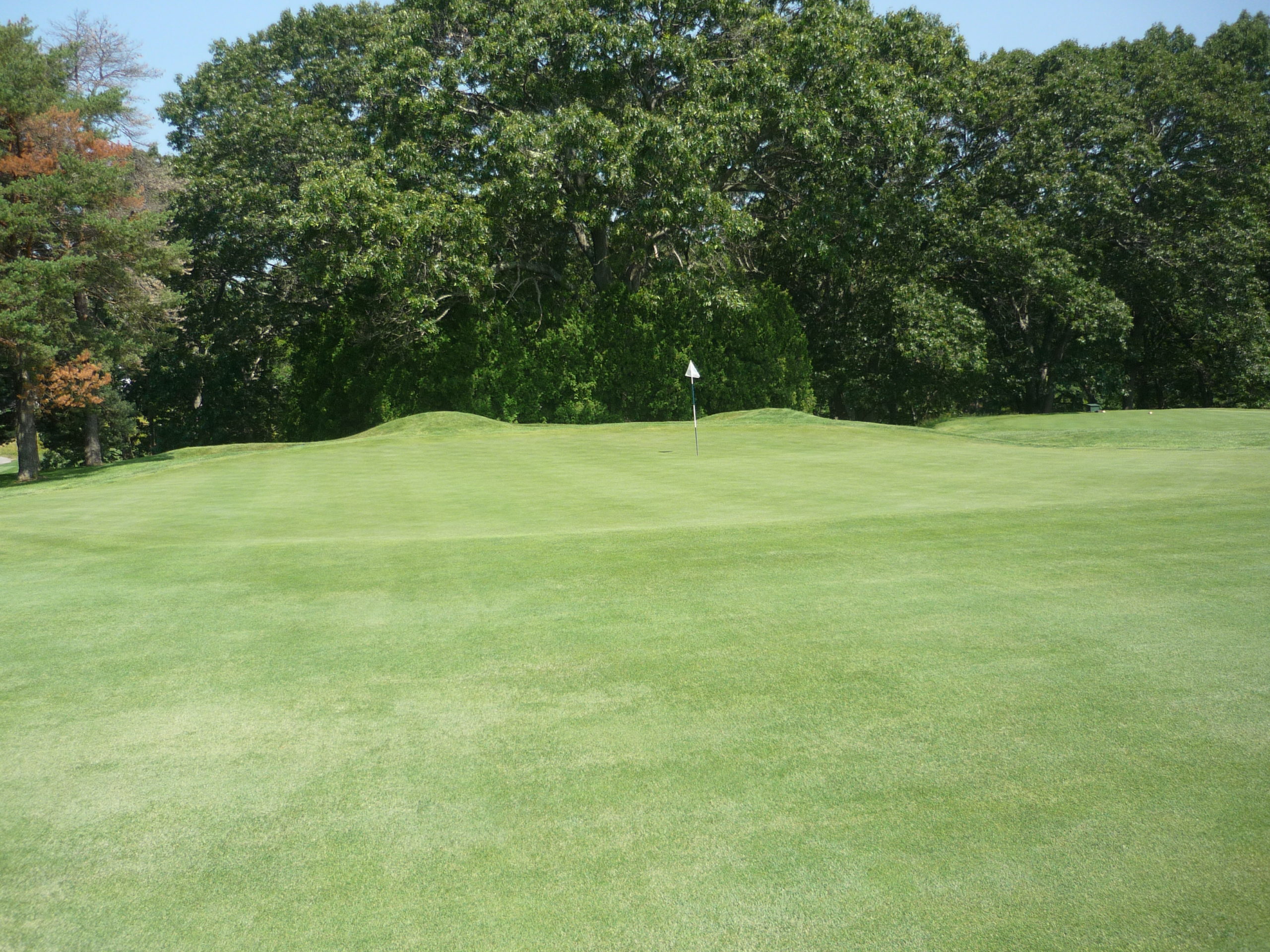
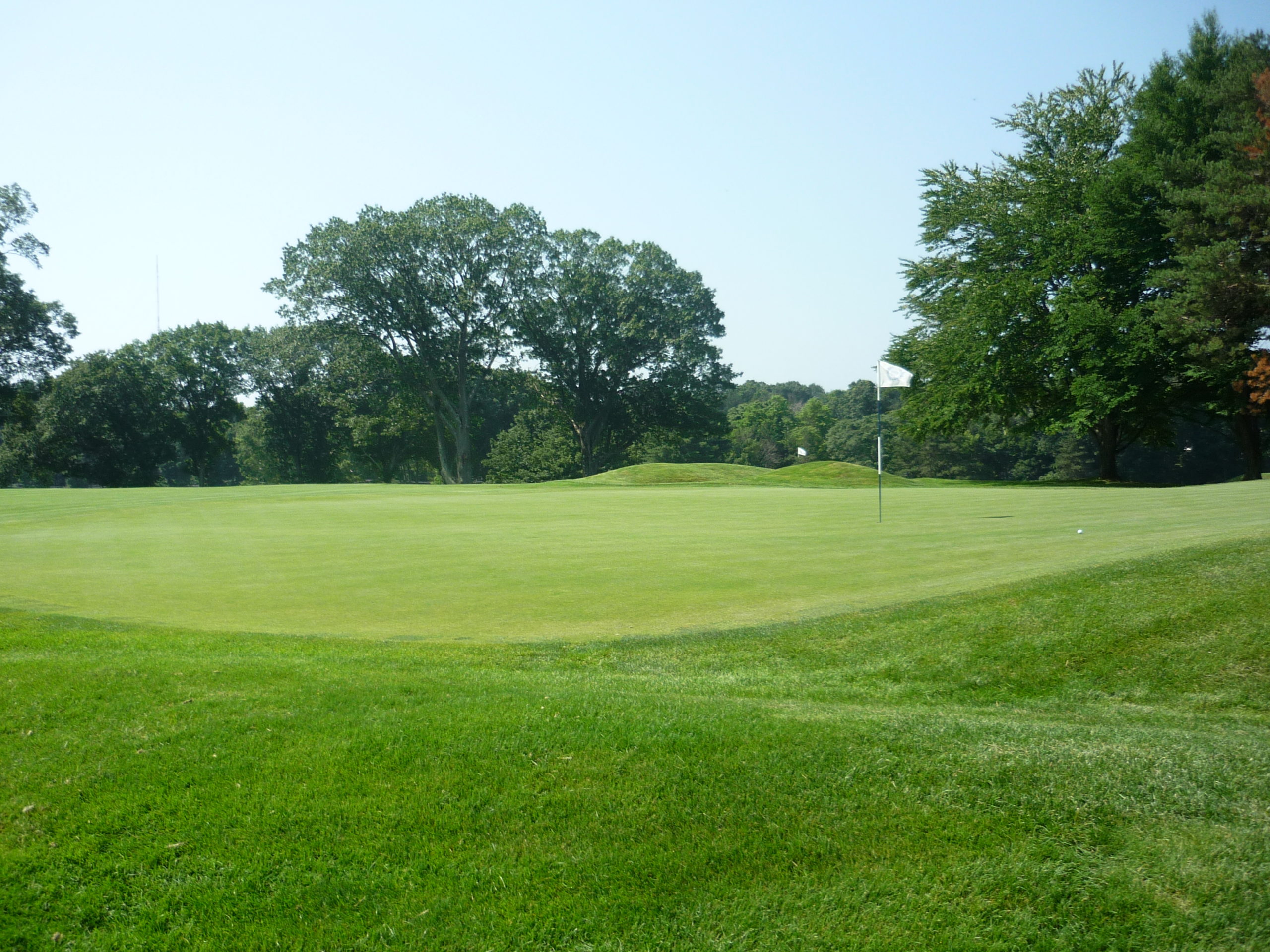
Hole 17 – 226 yards – Par 3
This is nothing but a long, difficult par three. The best miss is short of the green versus left or right.
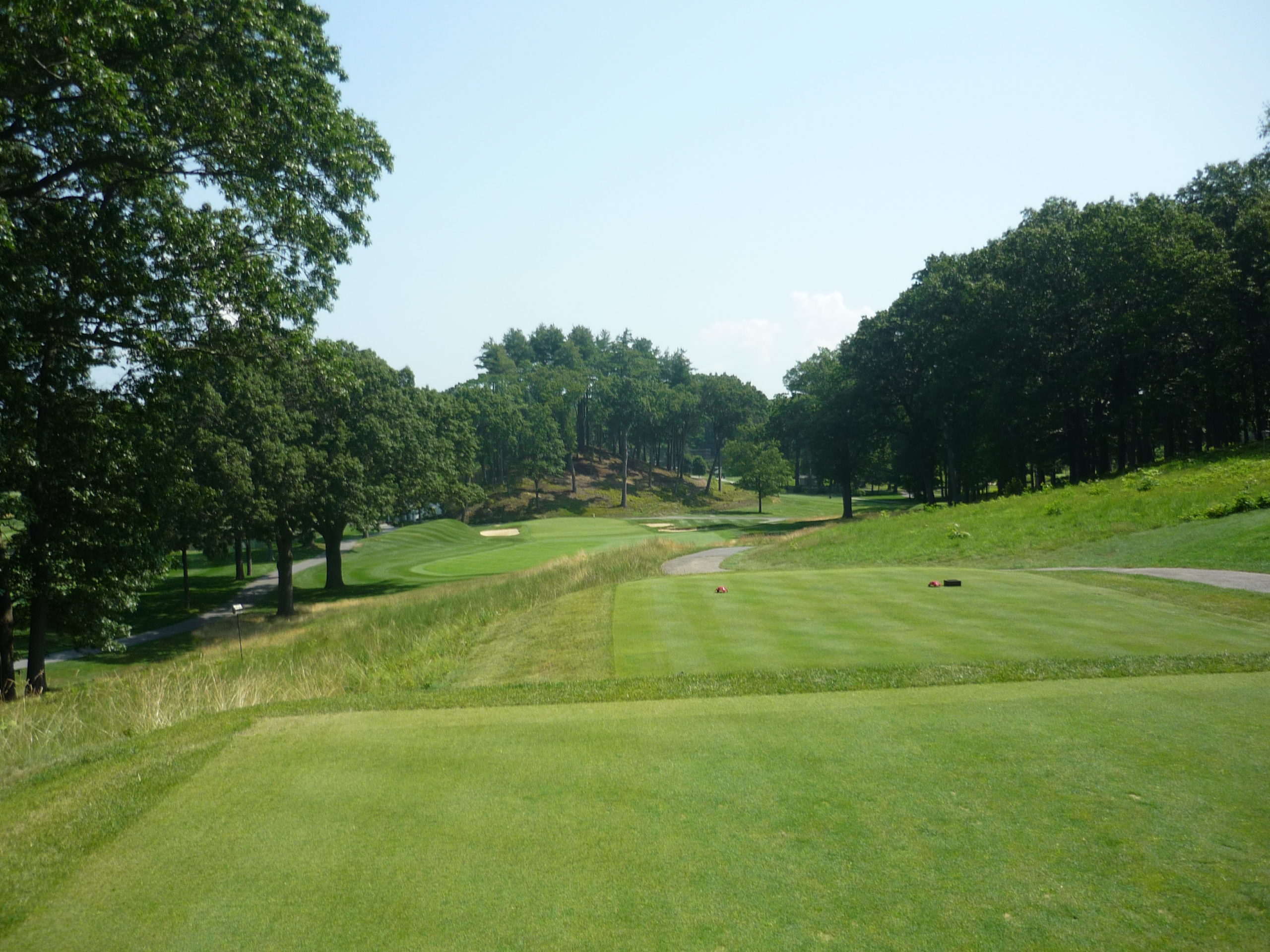
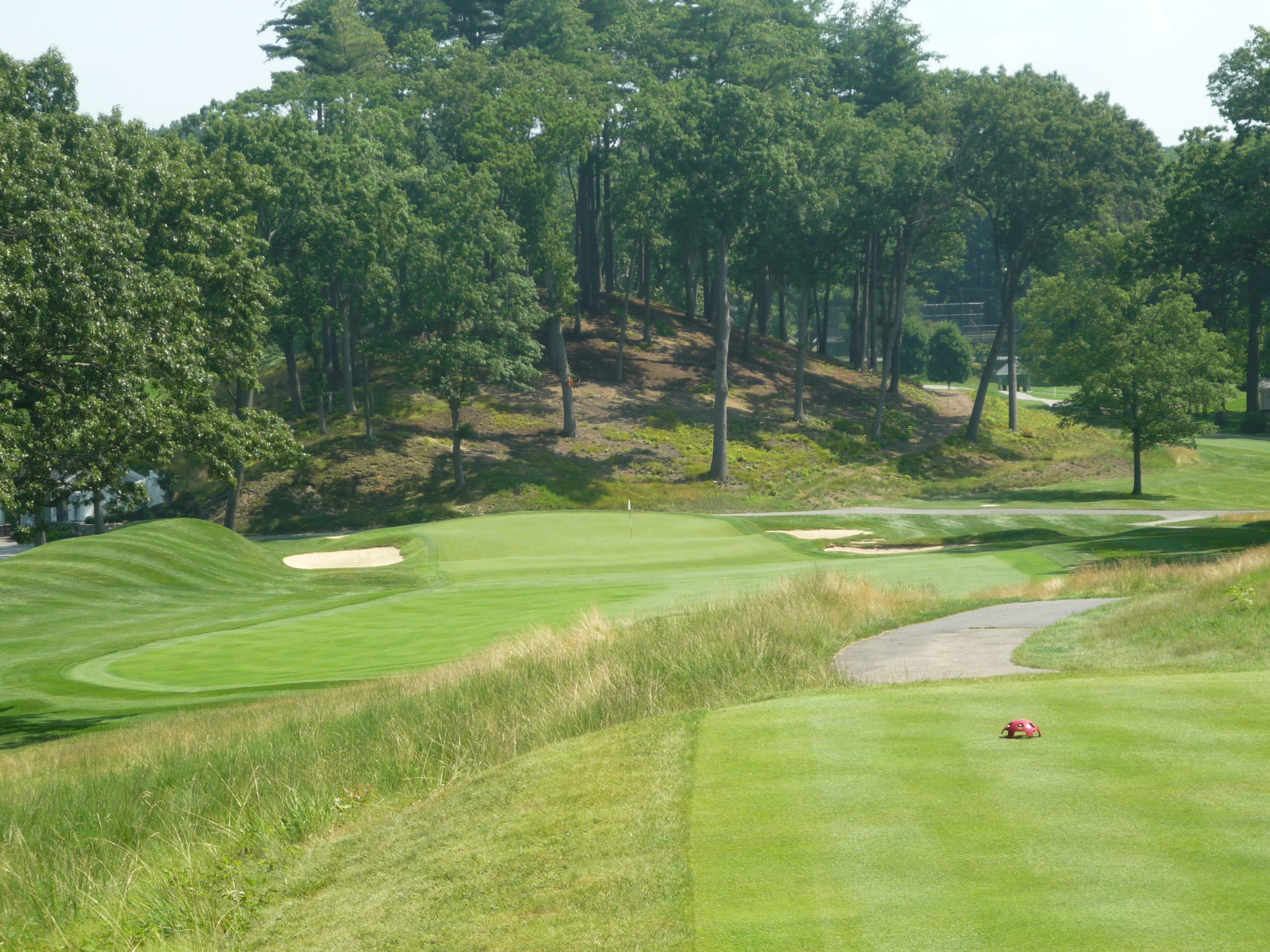
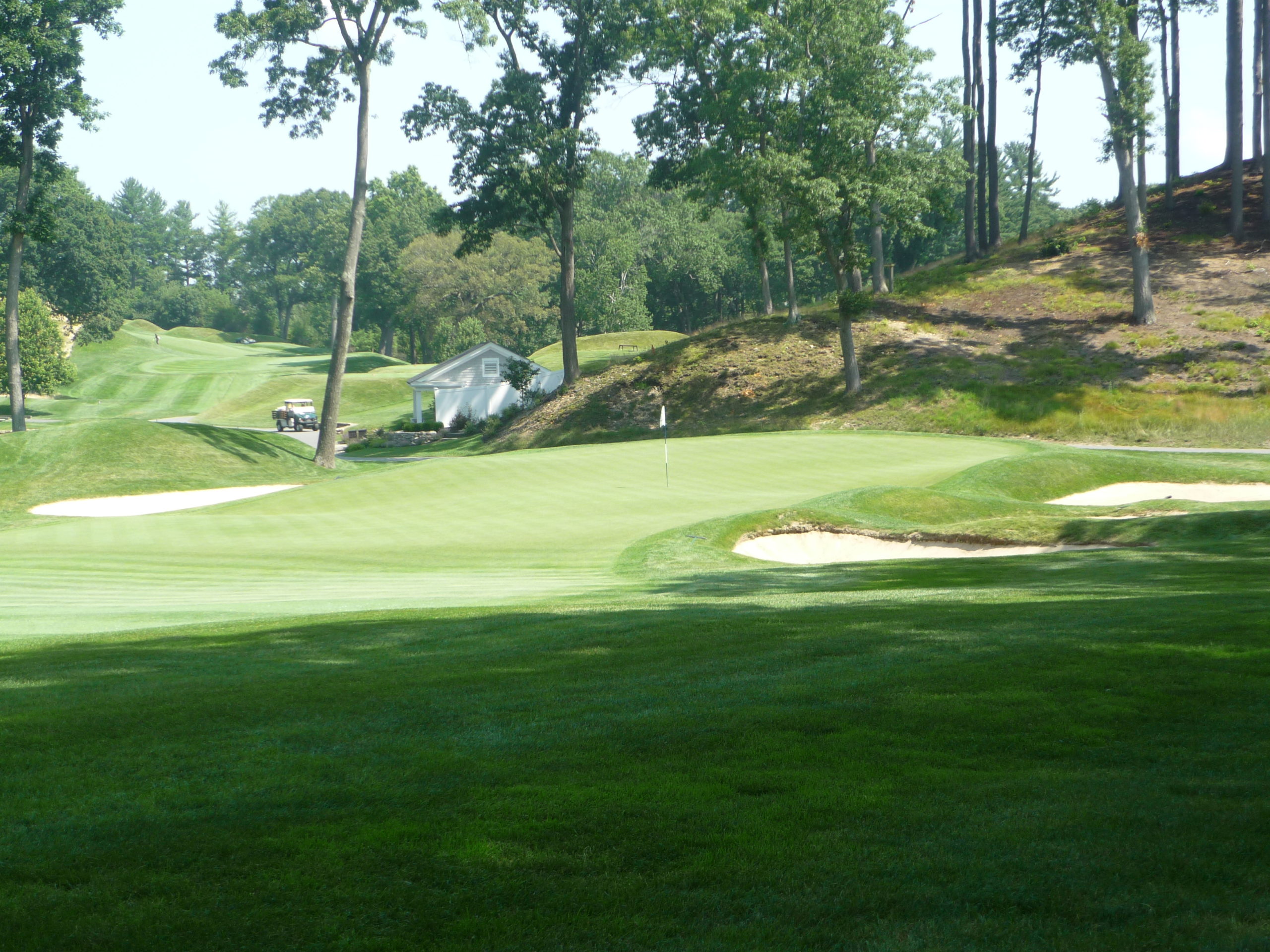
The green has a big dip that bisects the middle section and will challenge your putter.
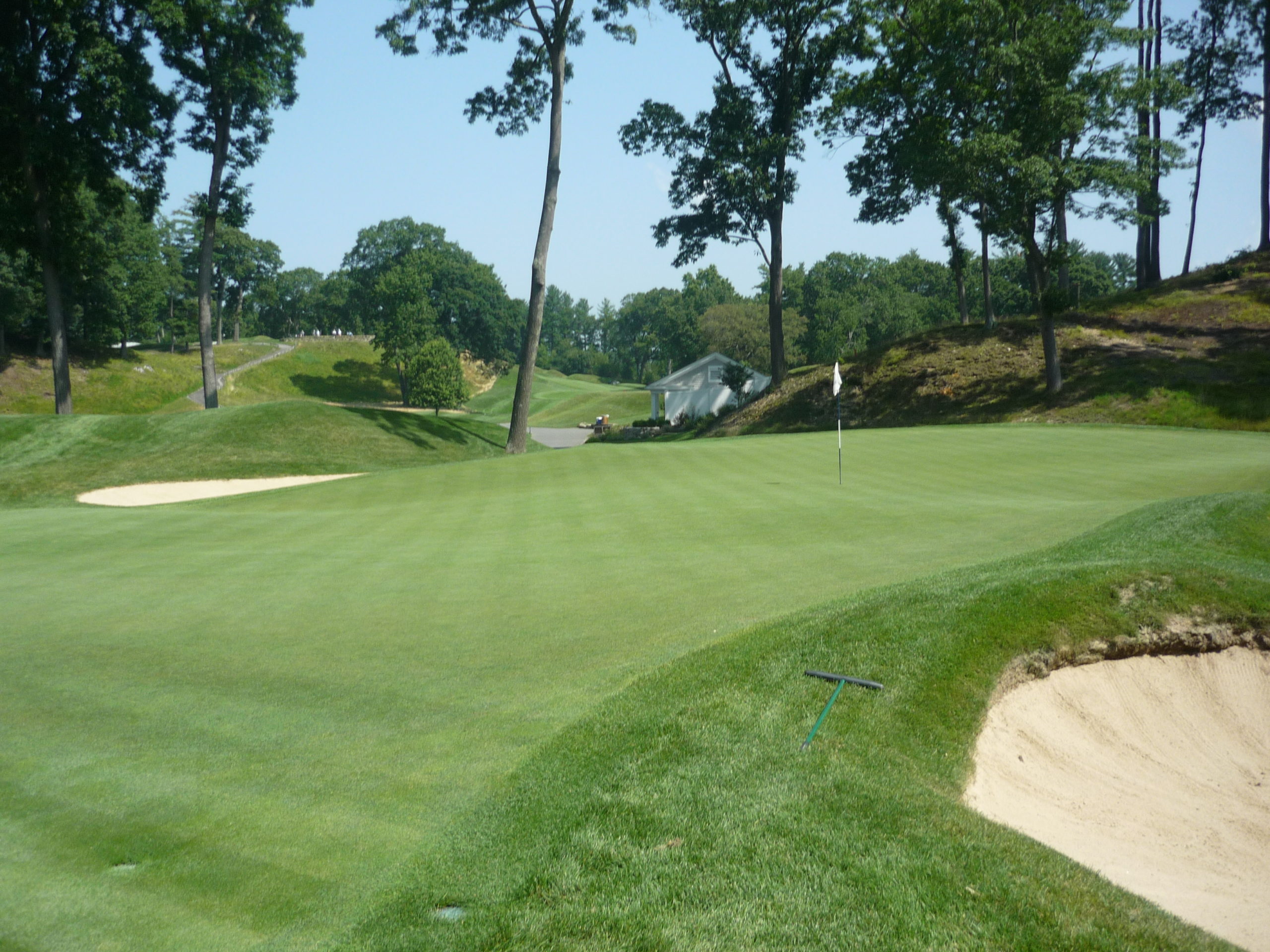
Hole 18 – 368 yards – Par 4
This tee shot plays out of a chute with out-of-bounds to the right. Your approach shot needs to be below the hole because this green is heavily sloped from back to front.
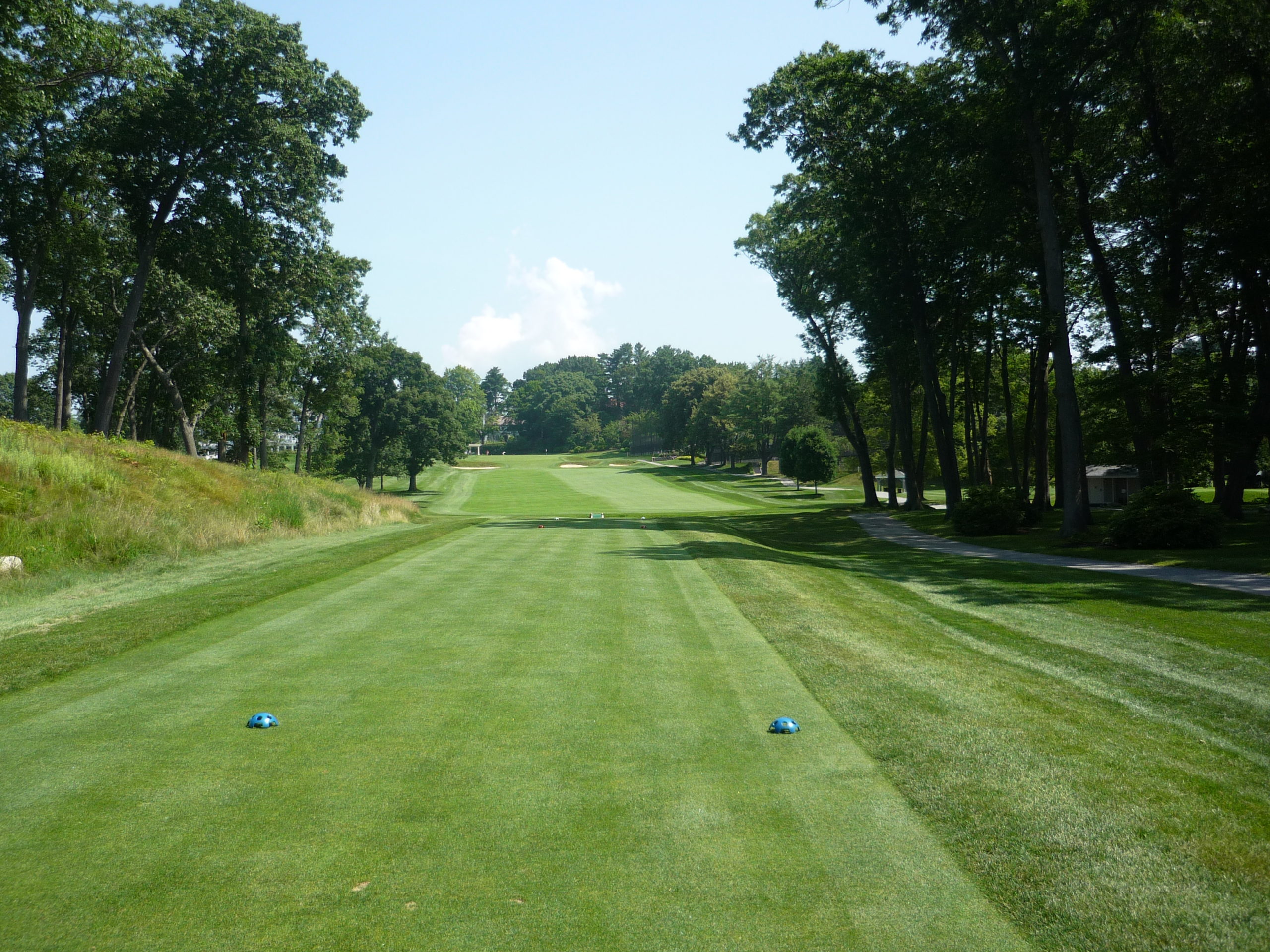
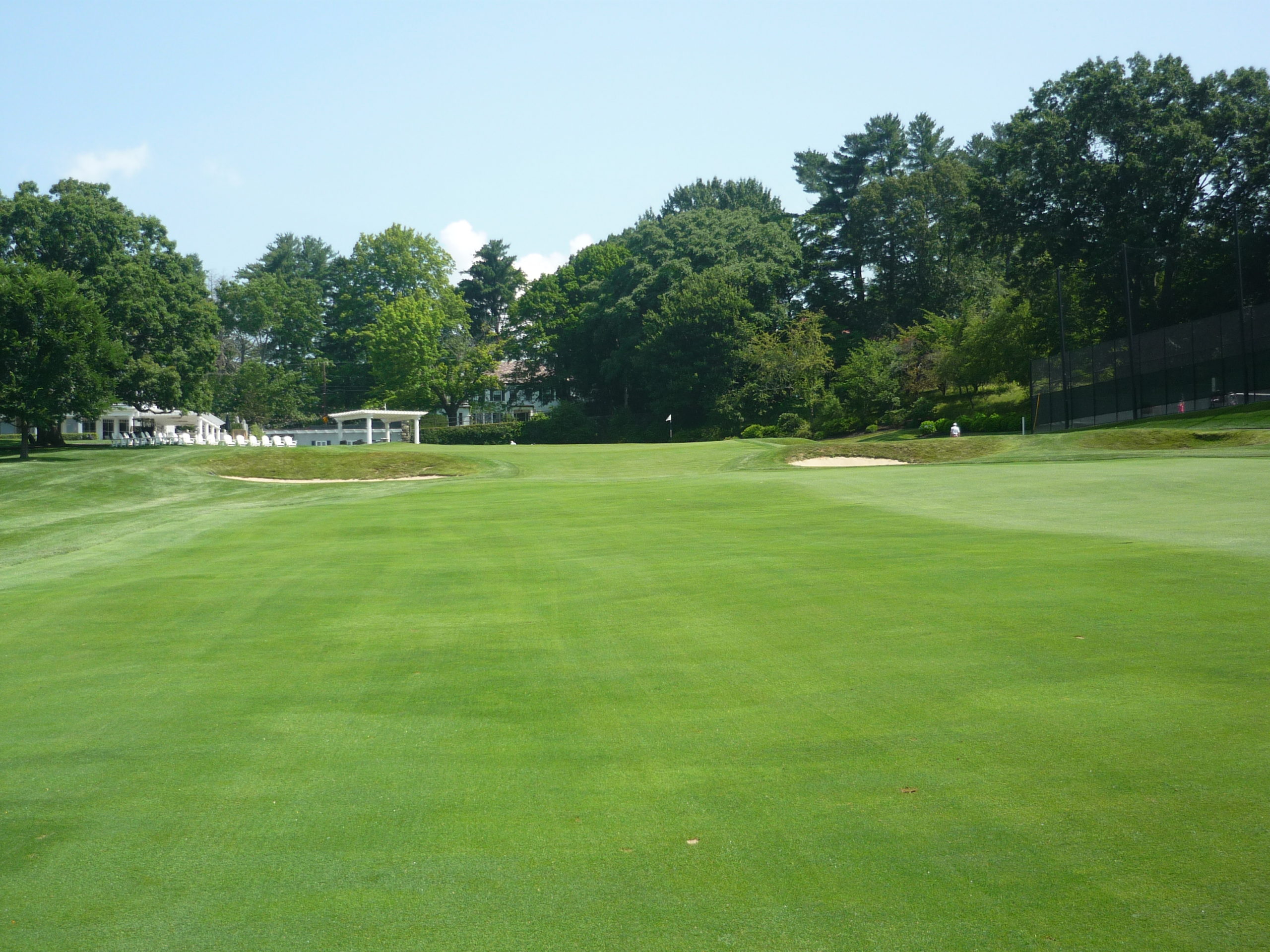
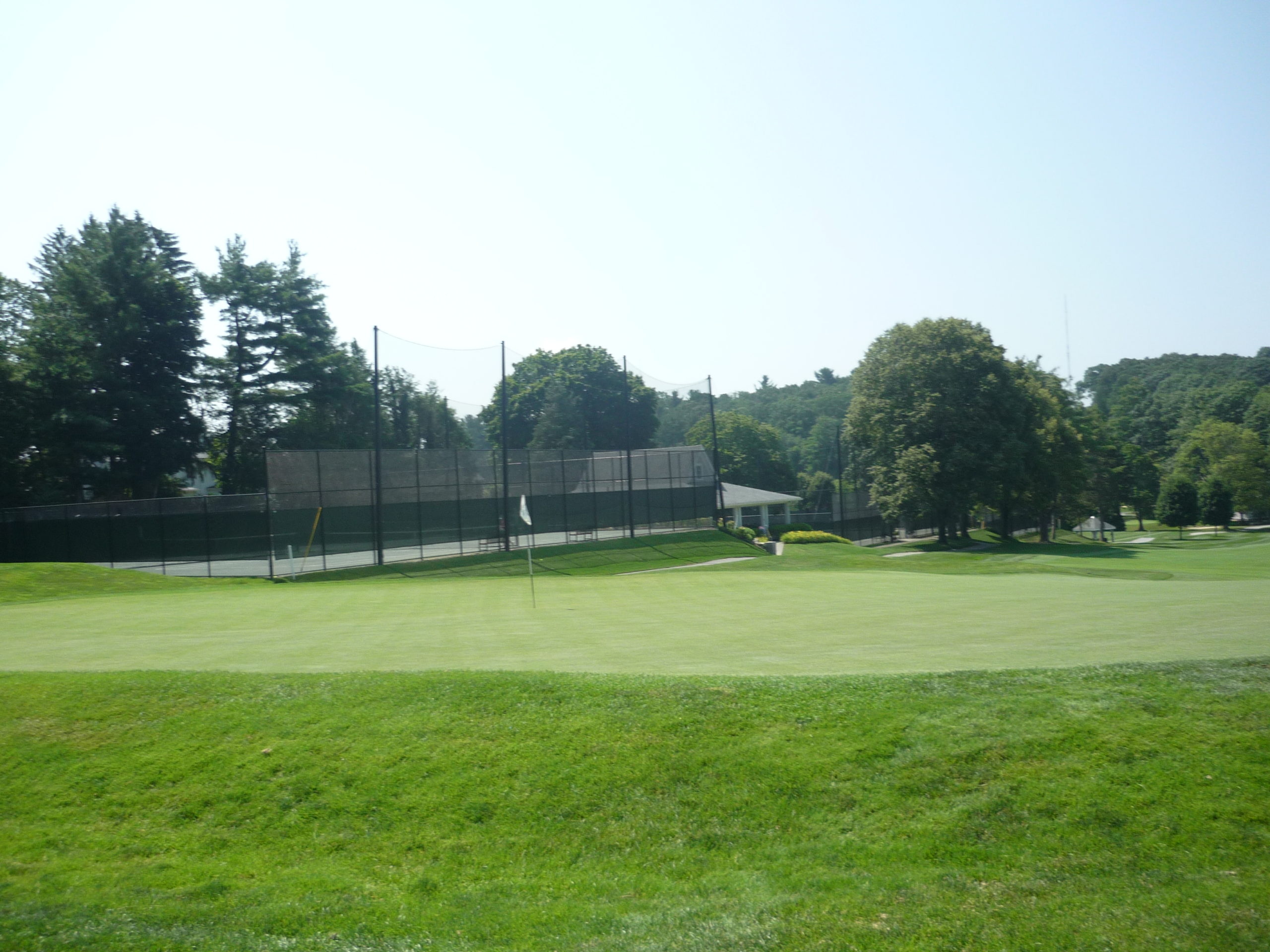
Brae Burn has a rich championship history and I could see why. The holes can be diabolical today, so I can only imagine how they were in the early 1900s. This club is another in the deep roster of Boston area private courses that are all well worth a visit.
